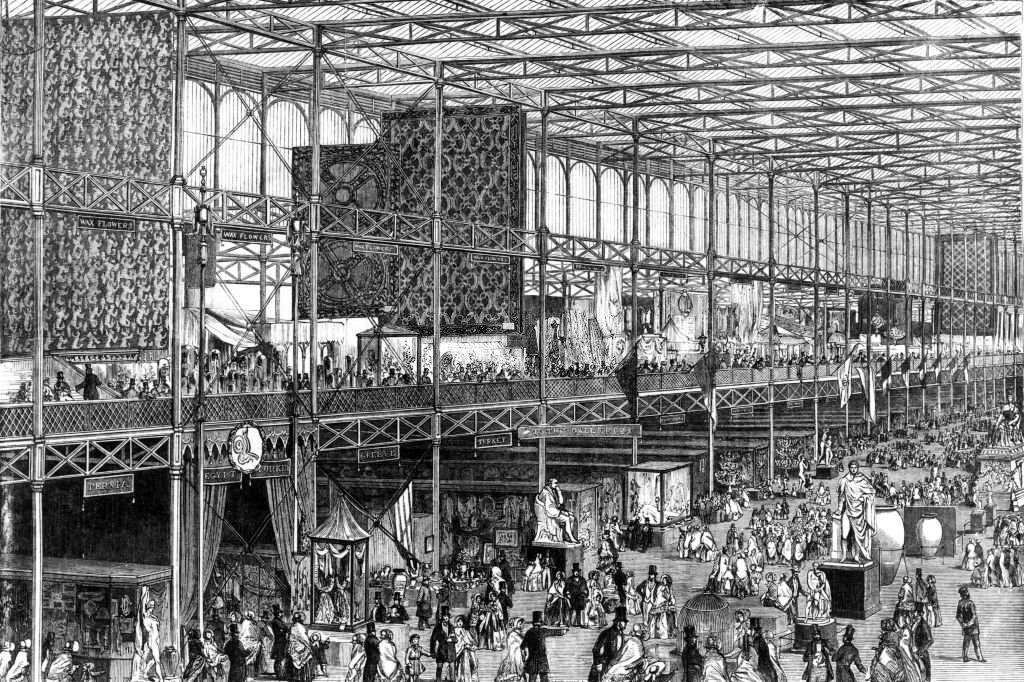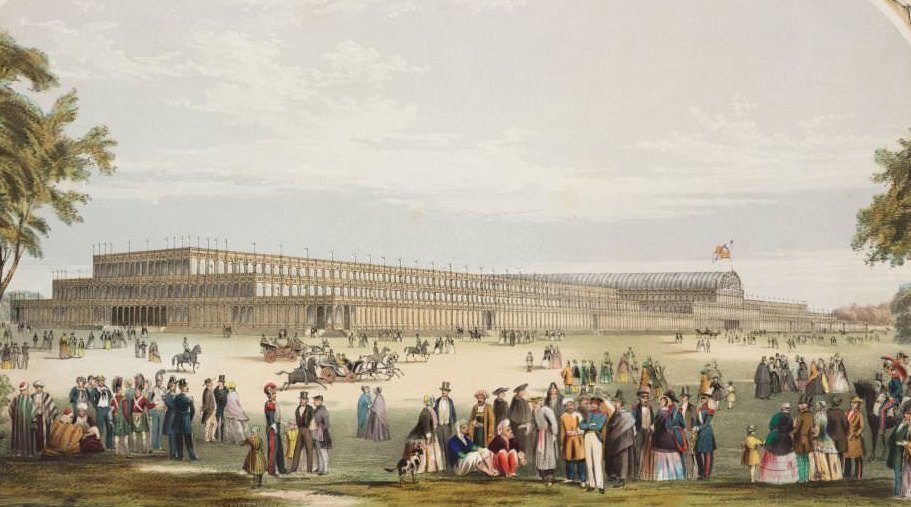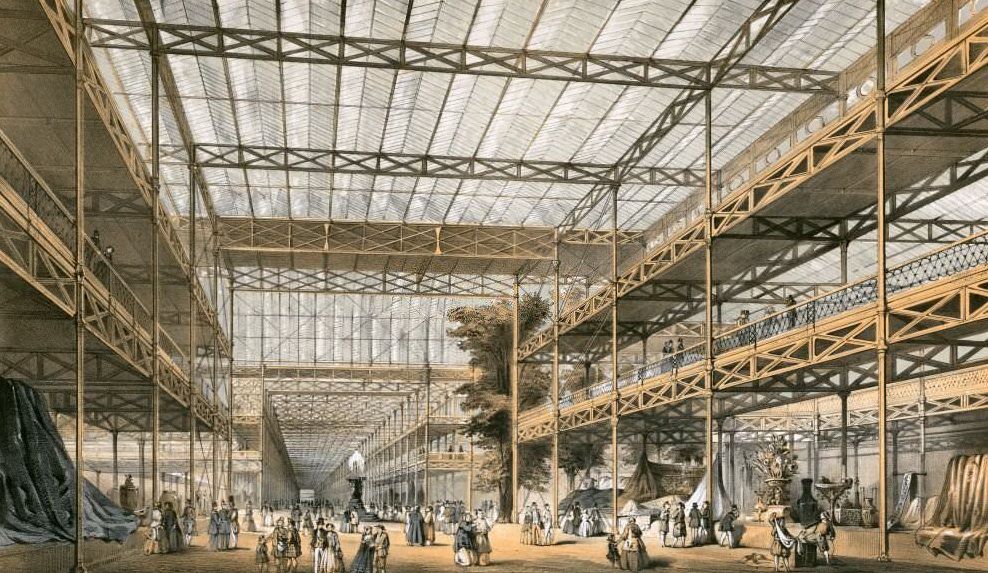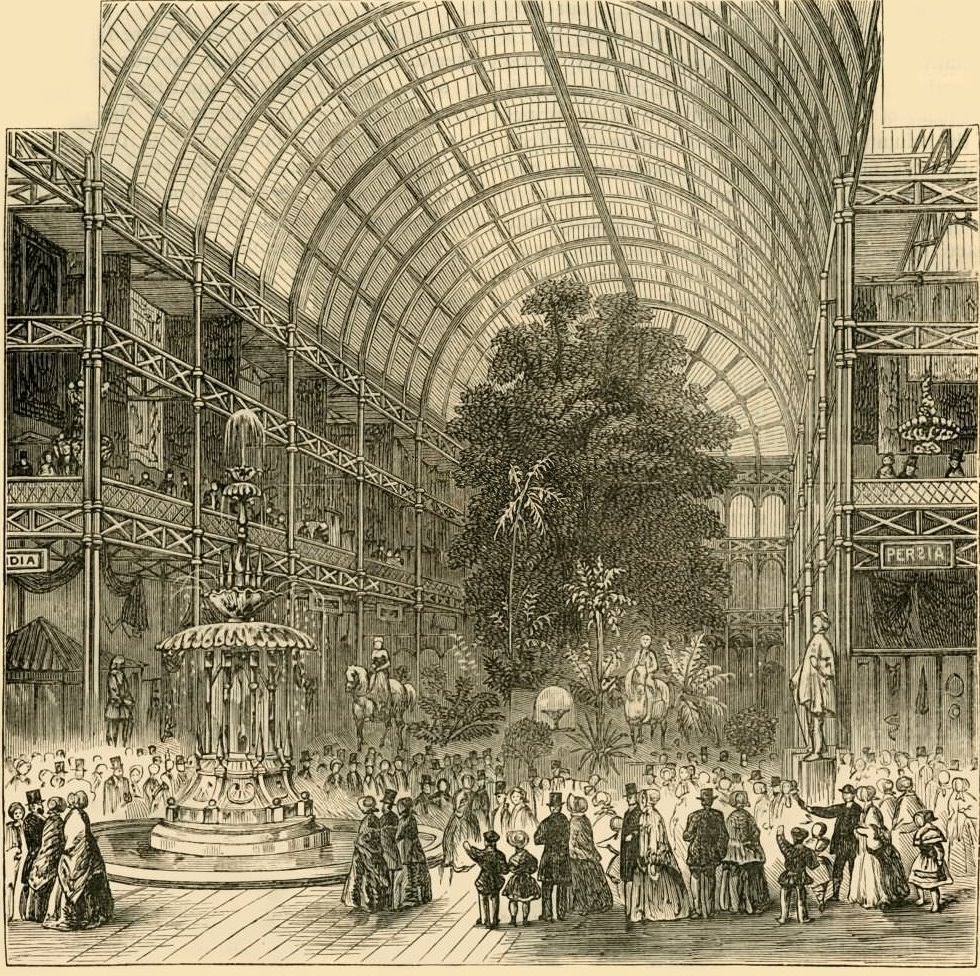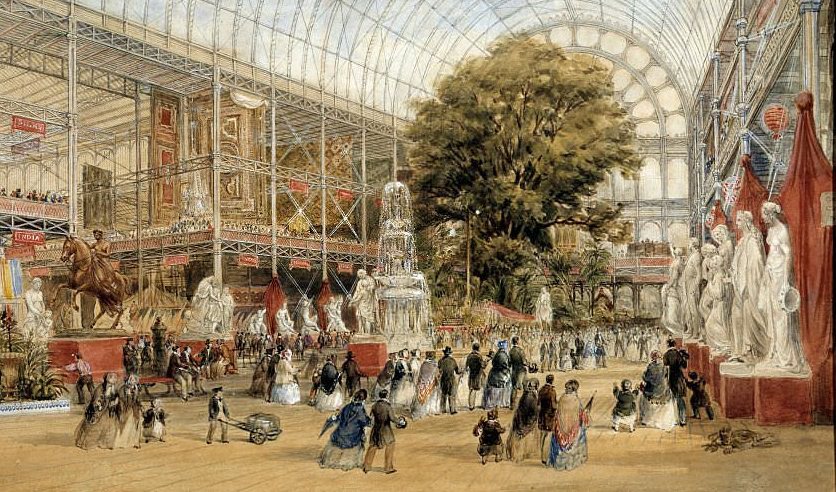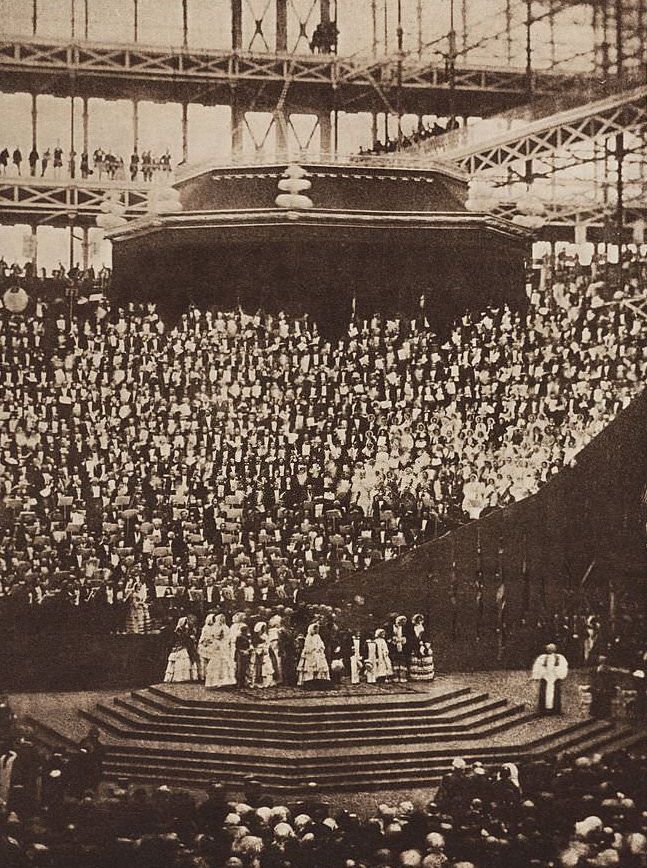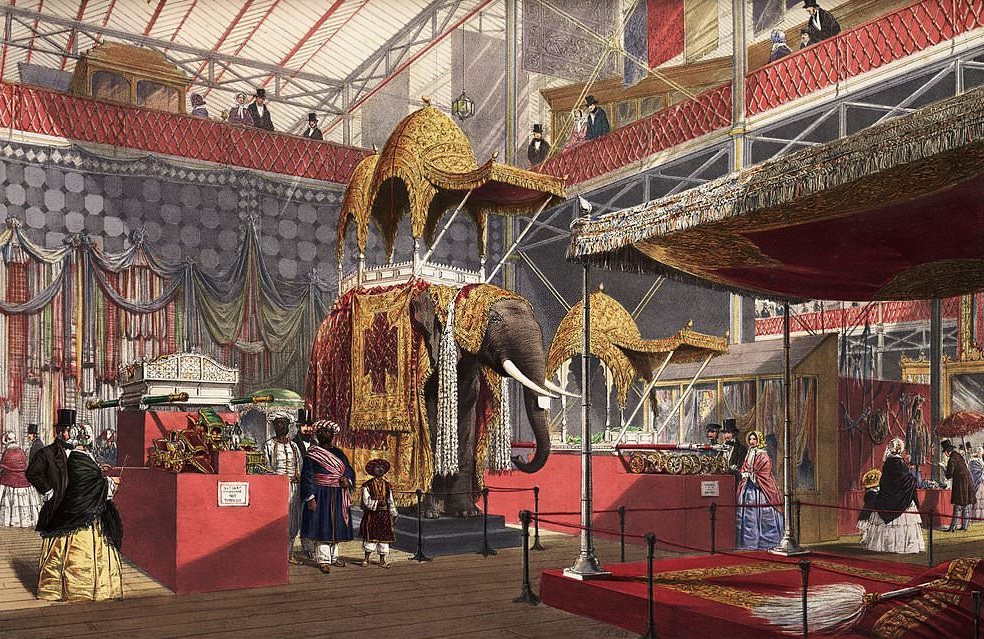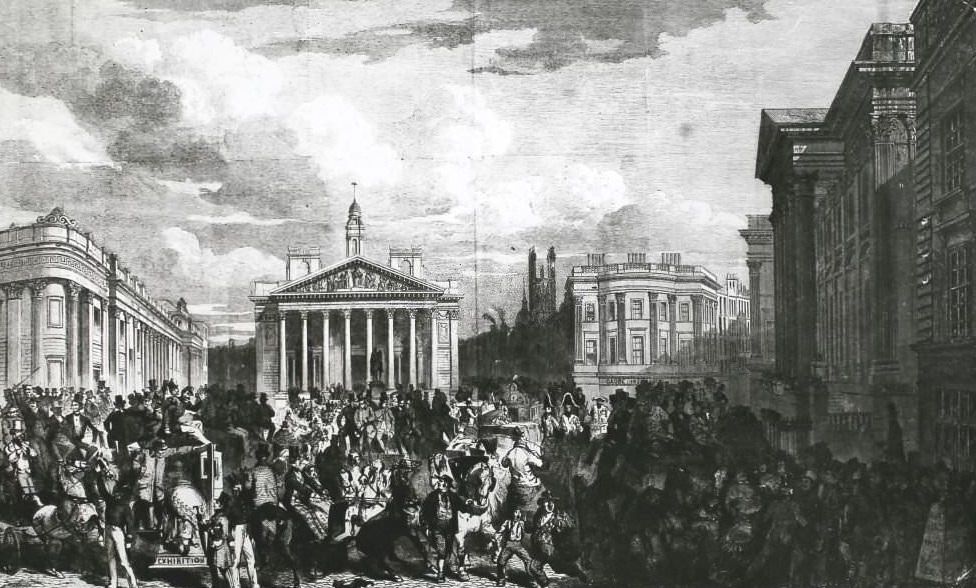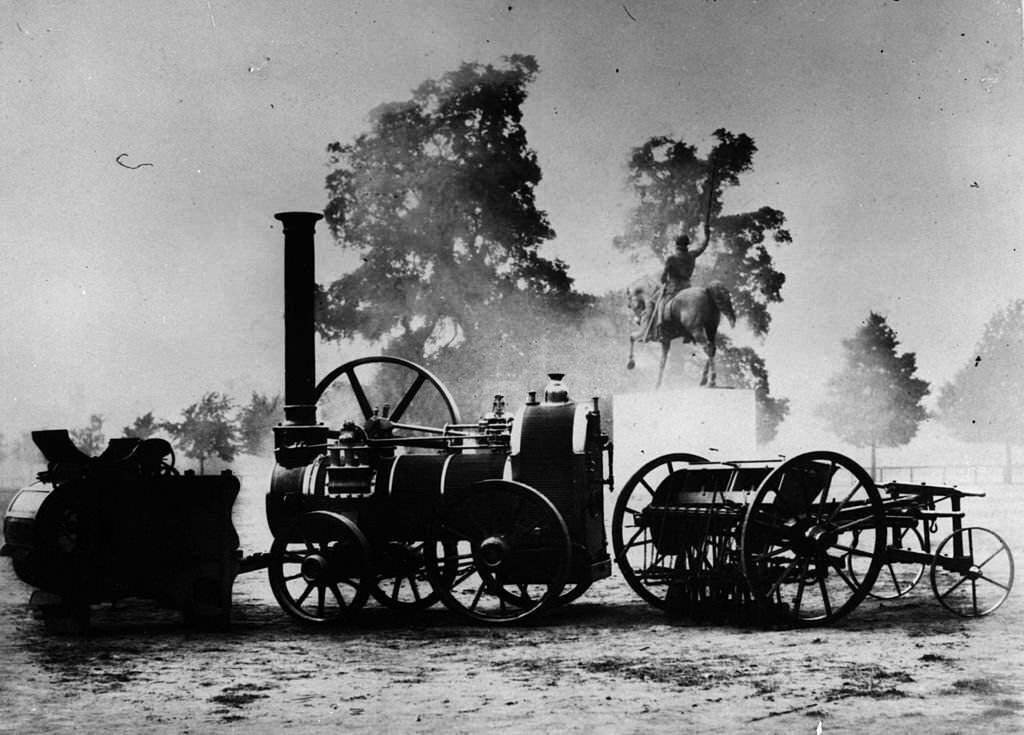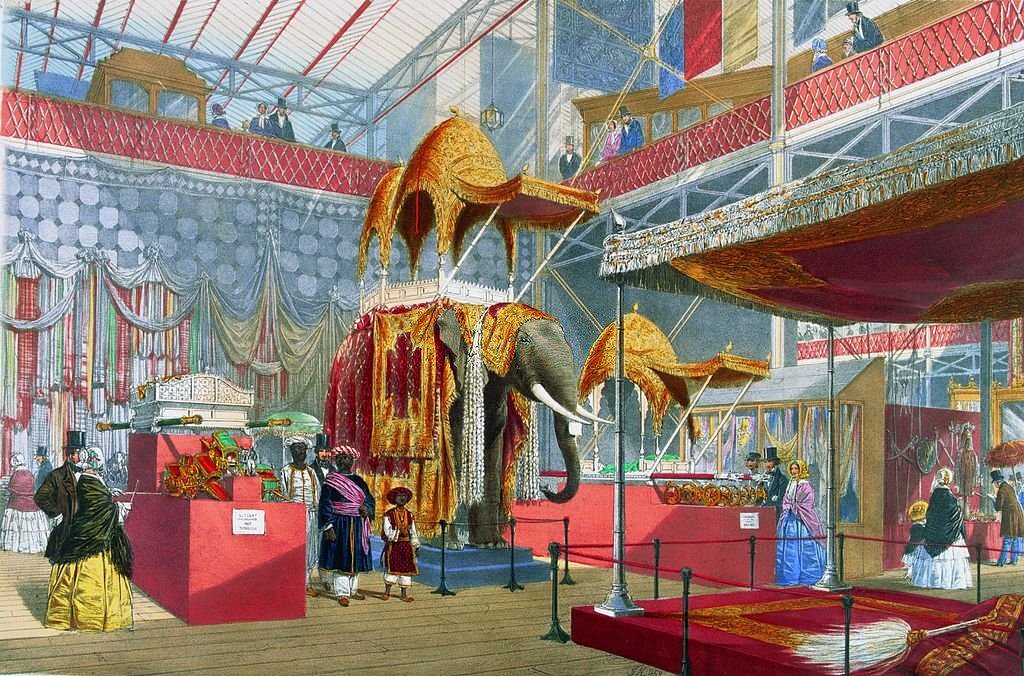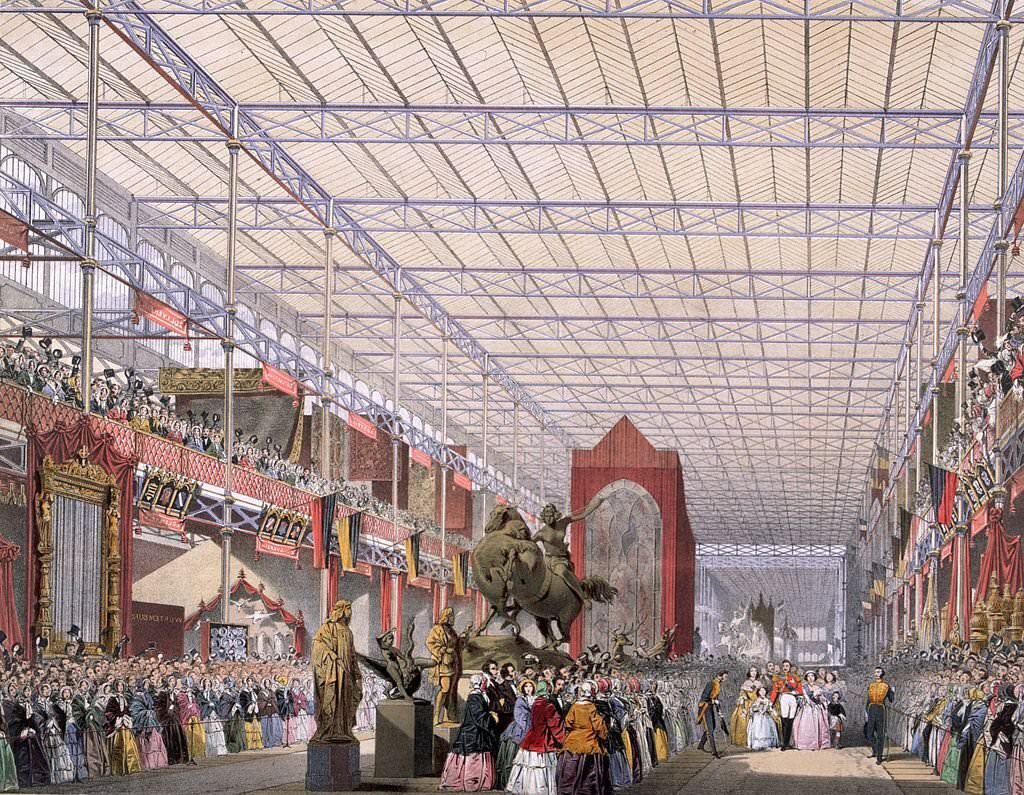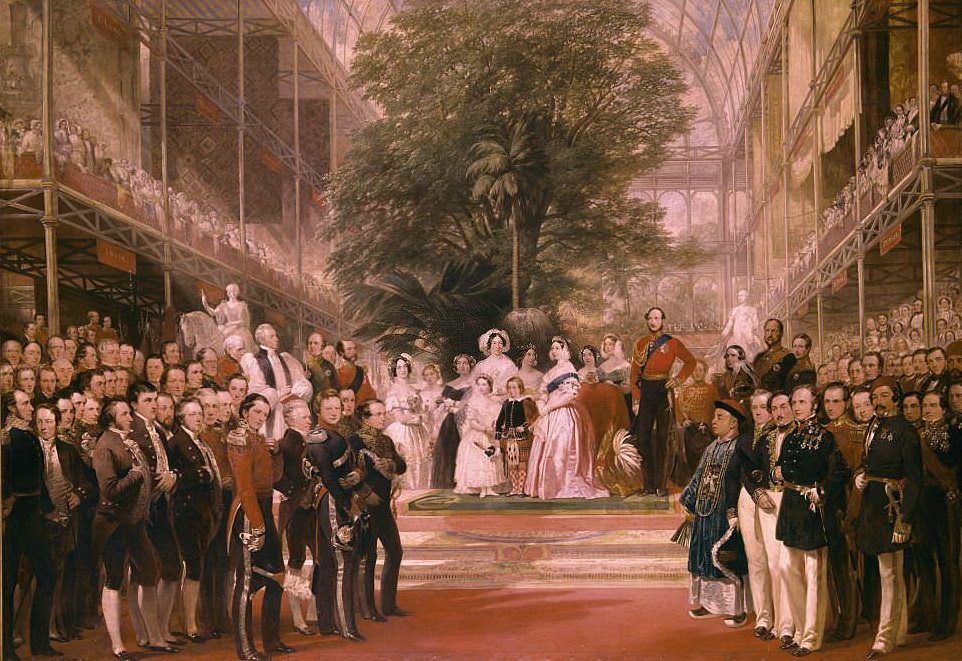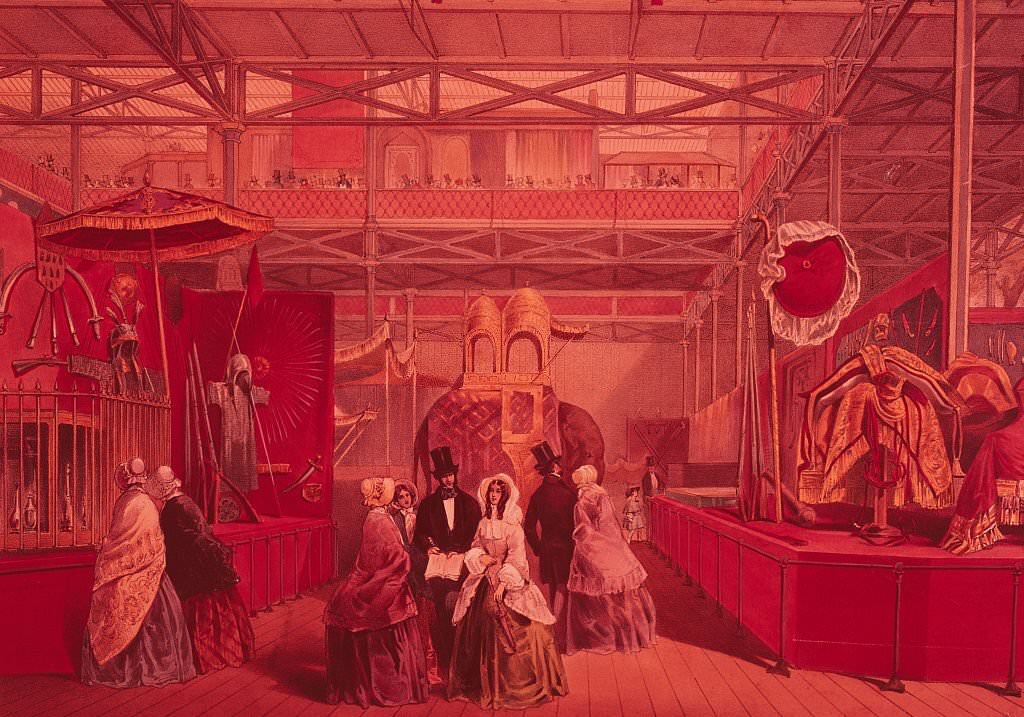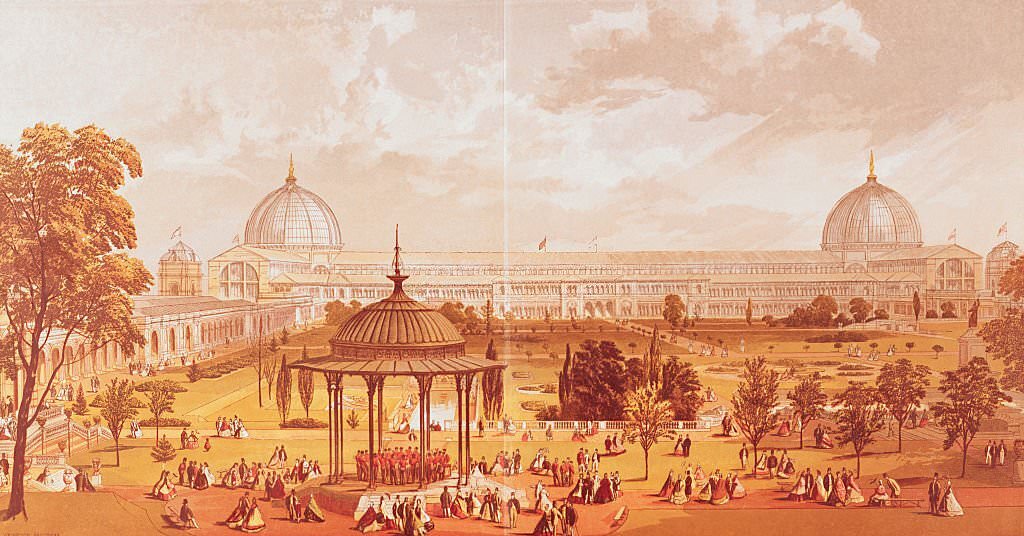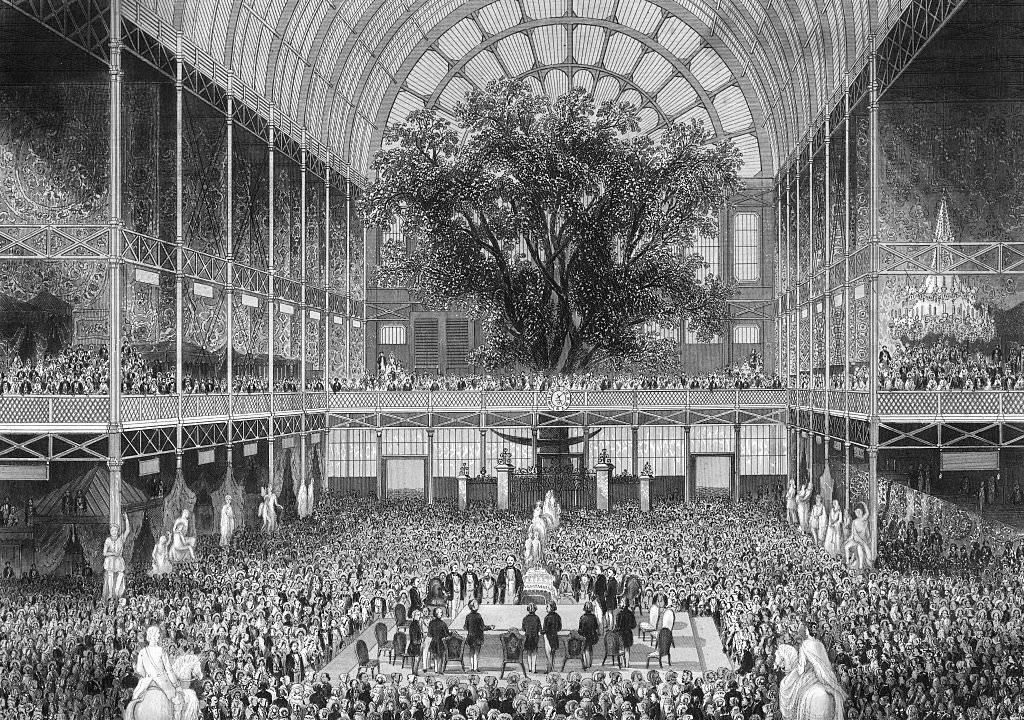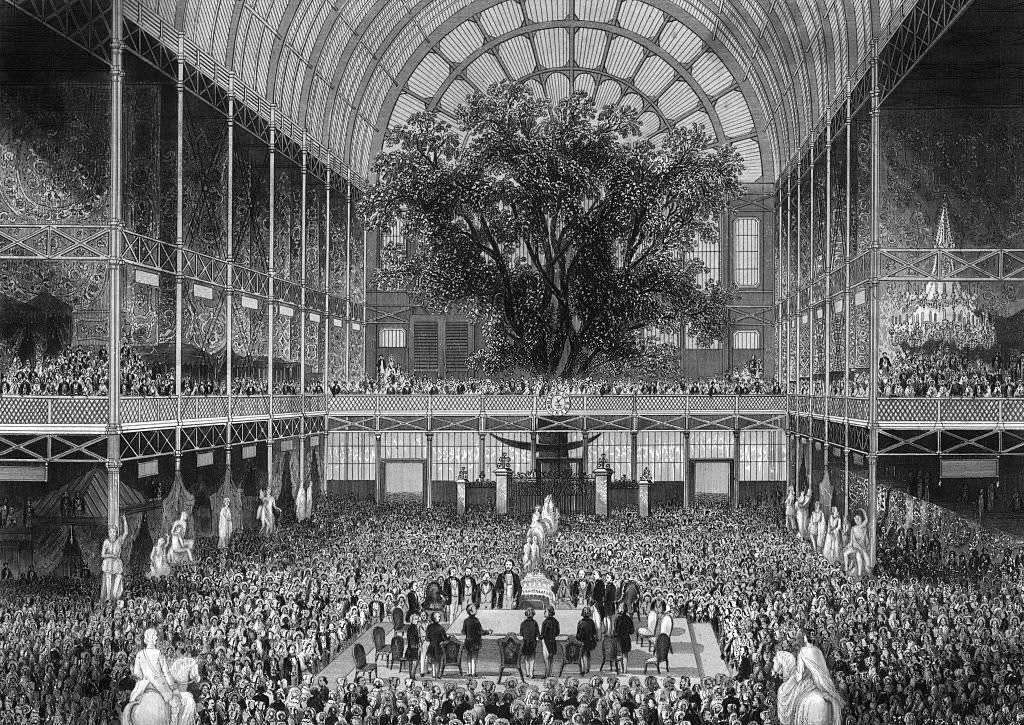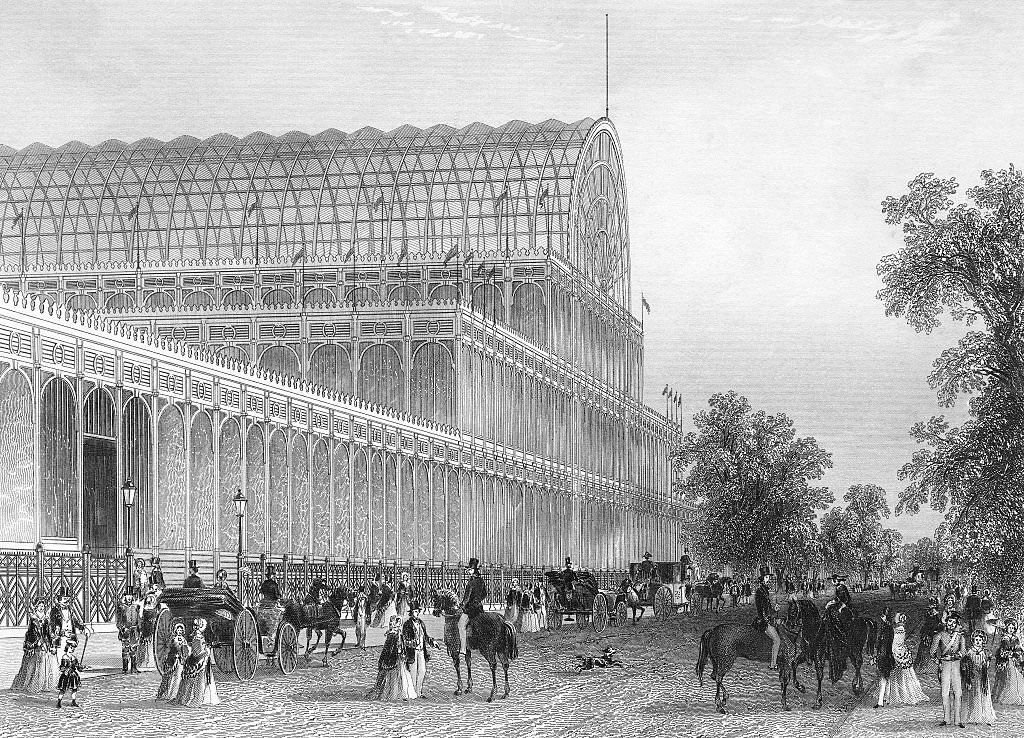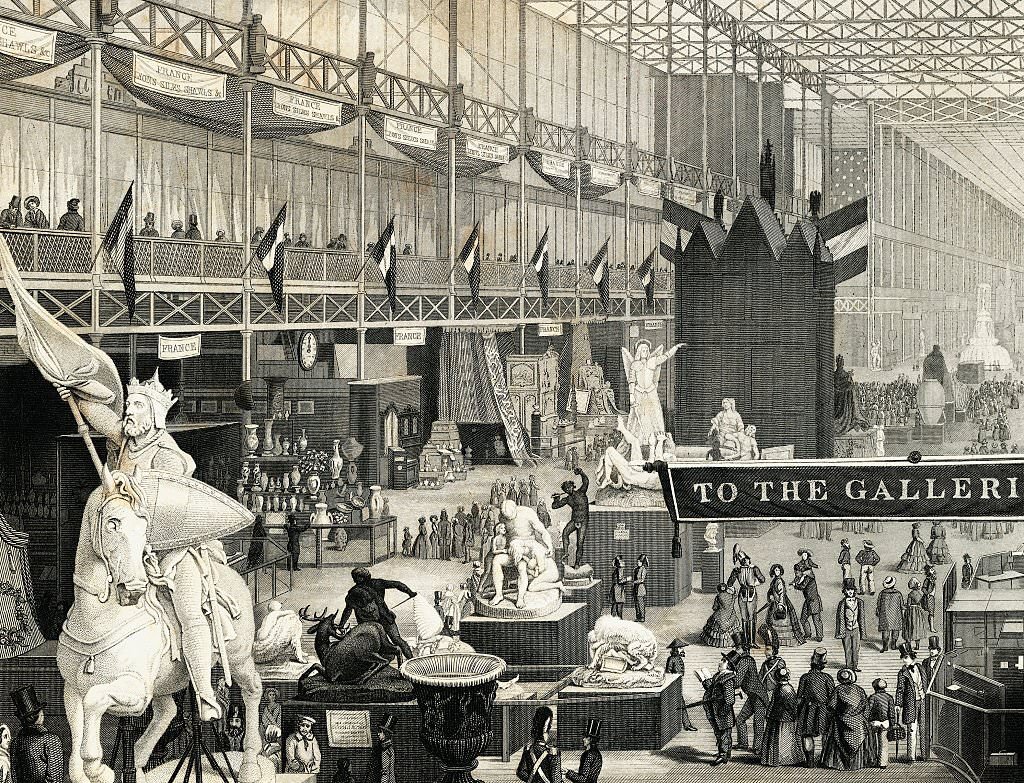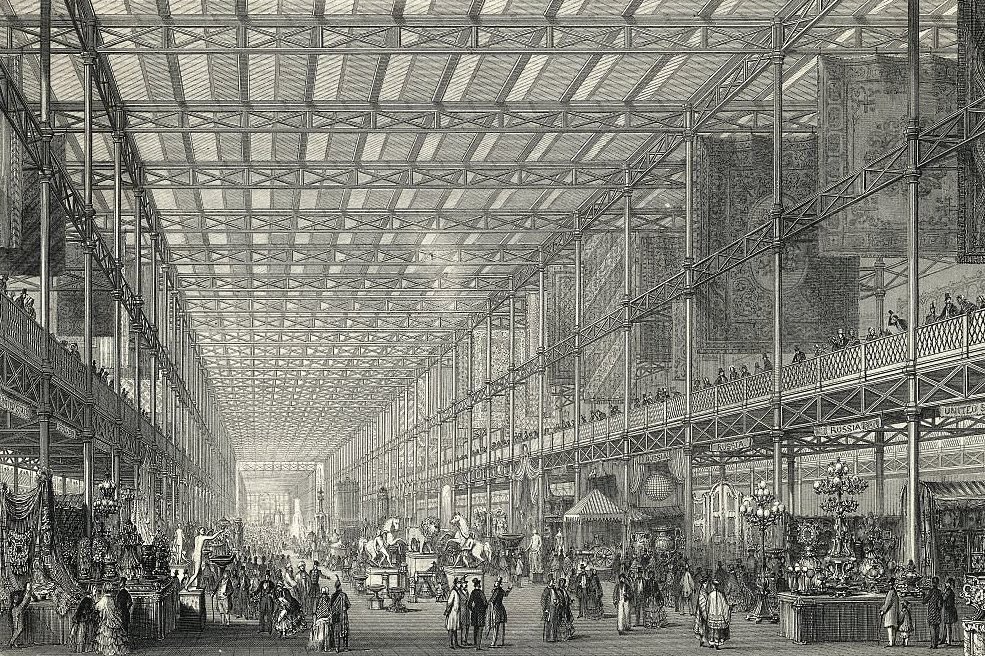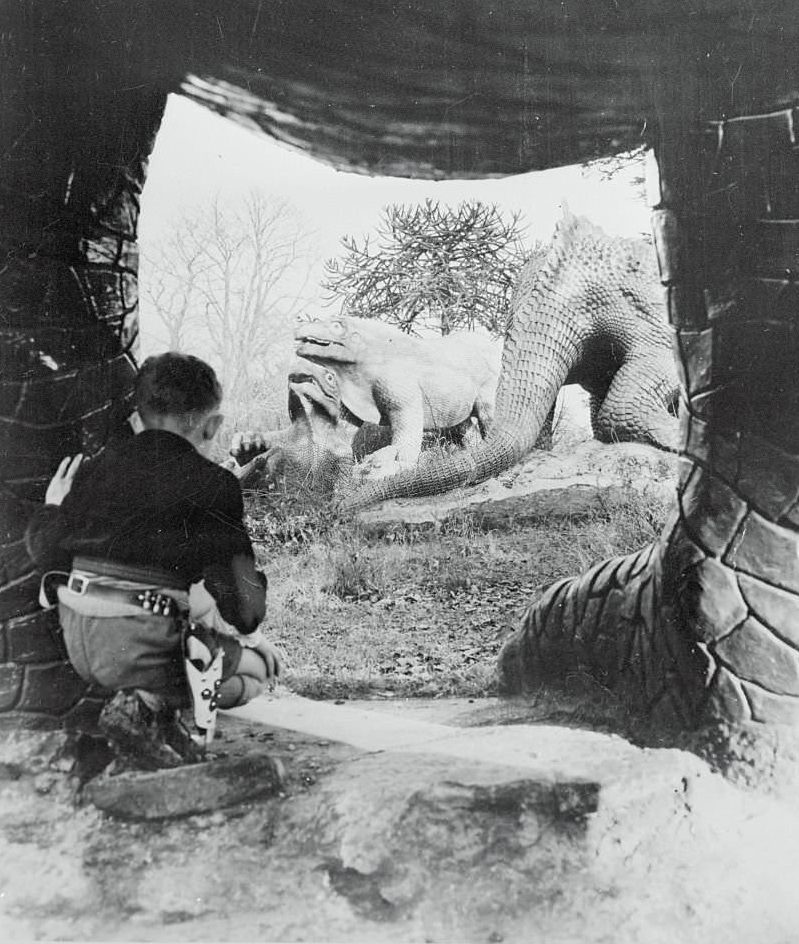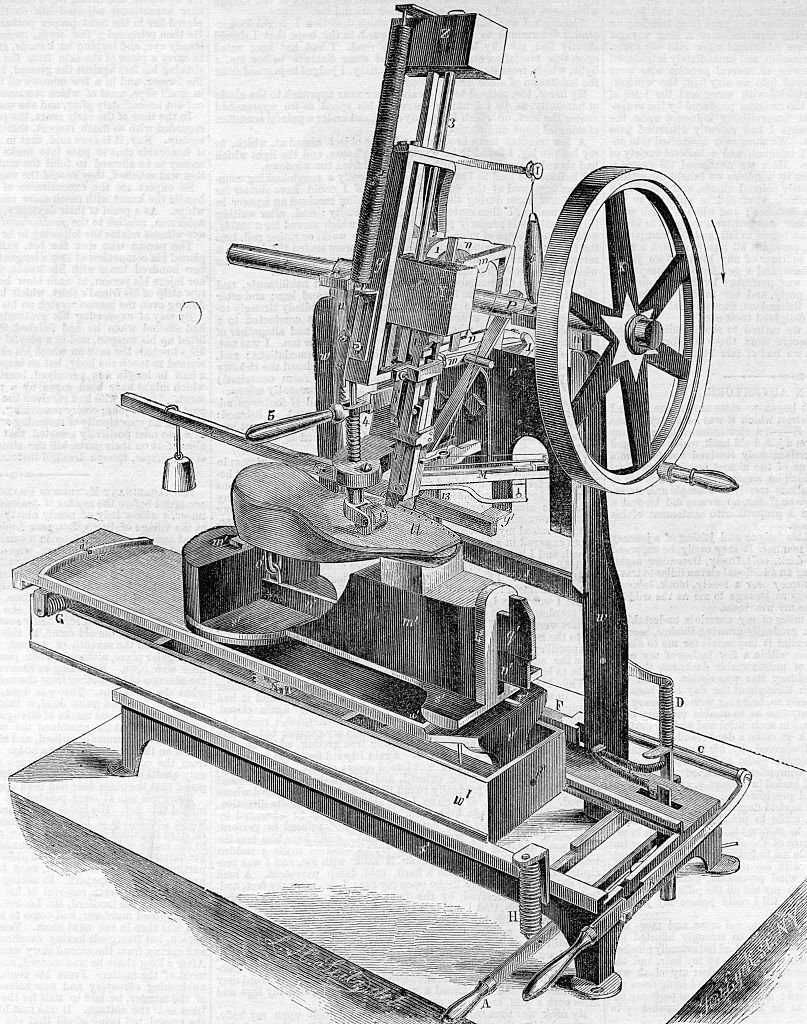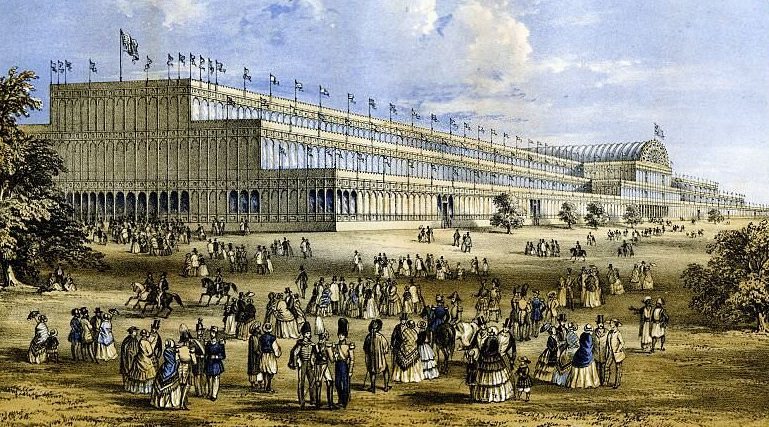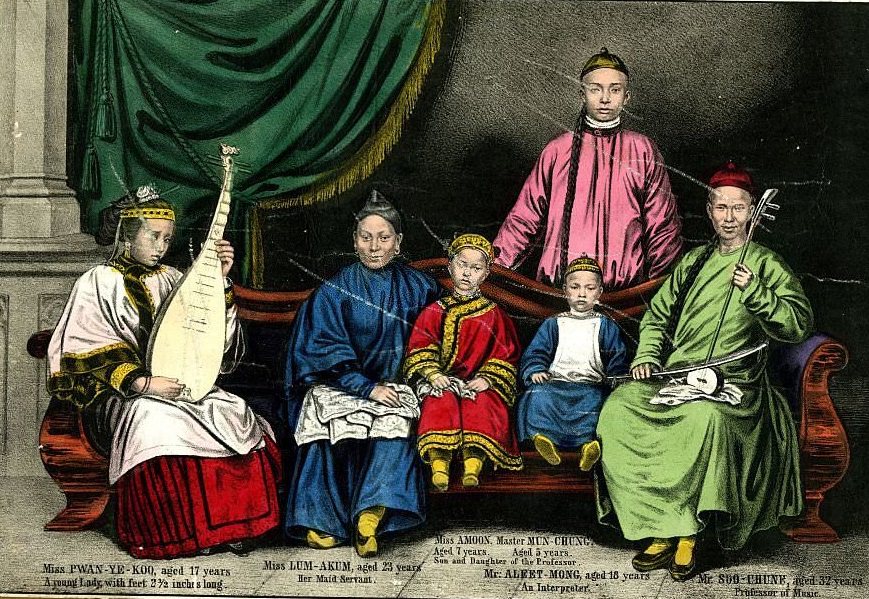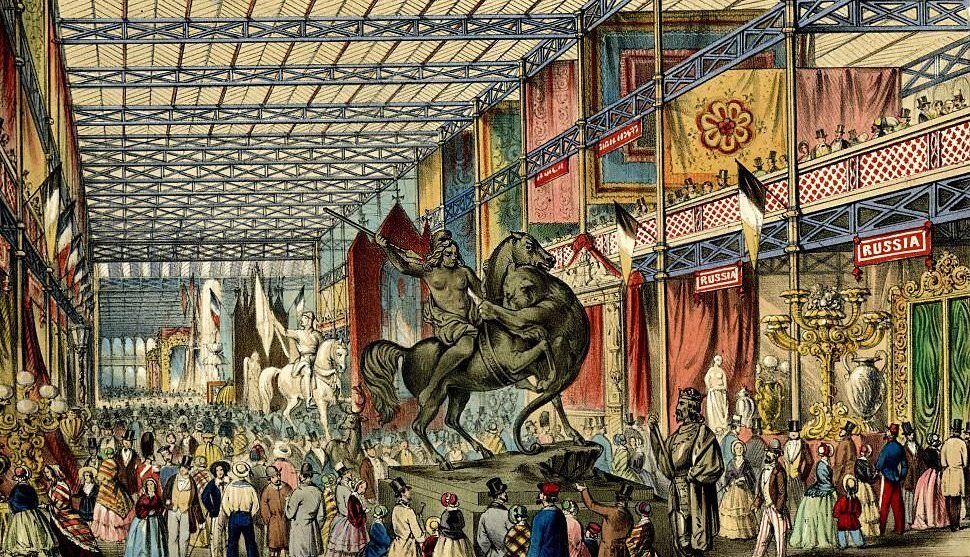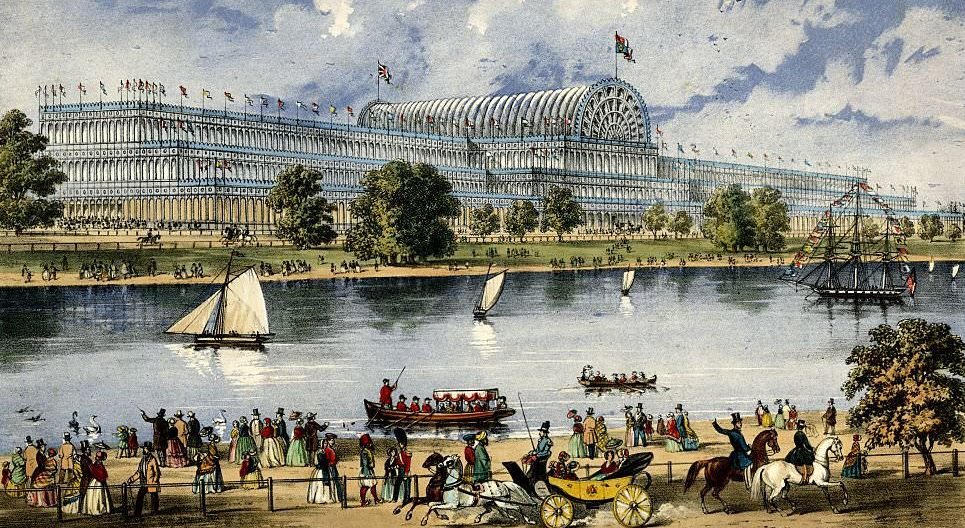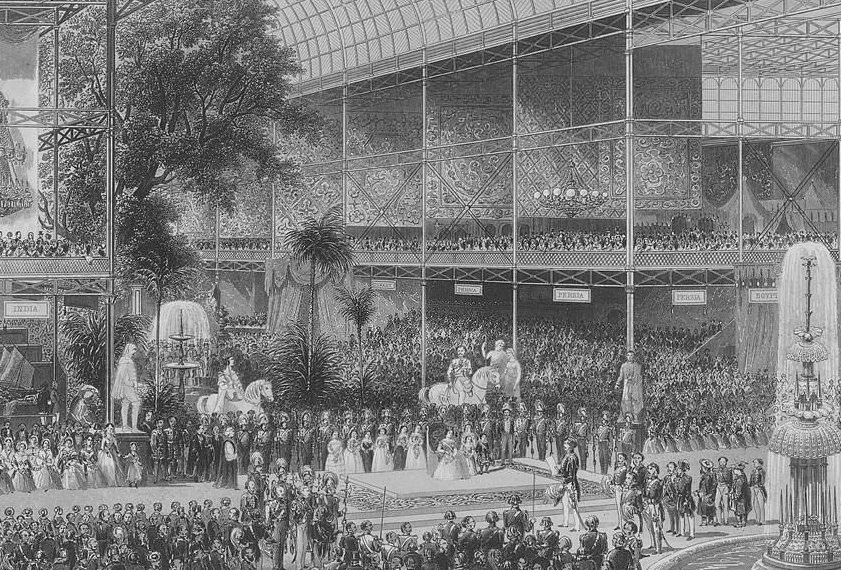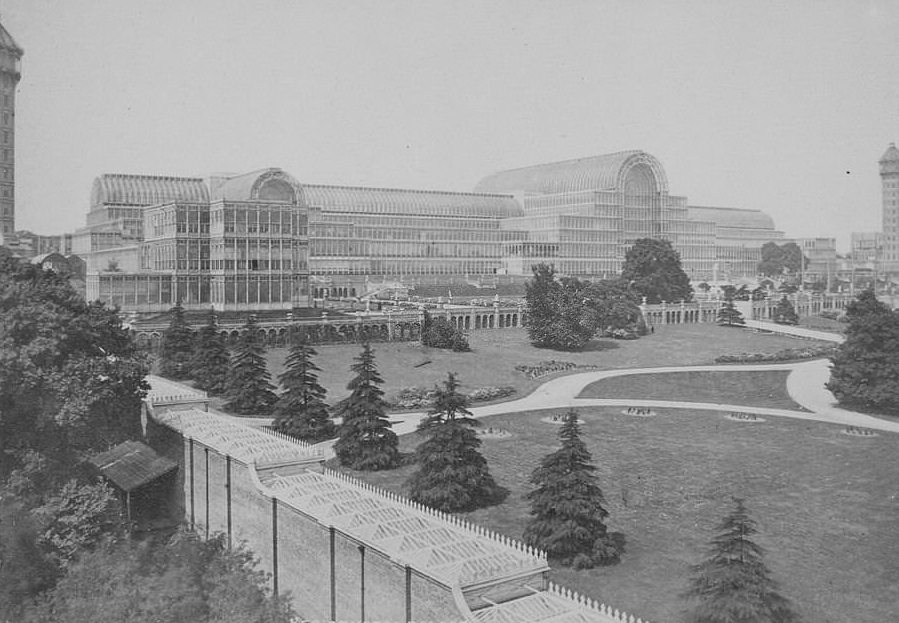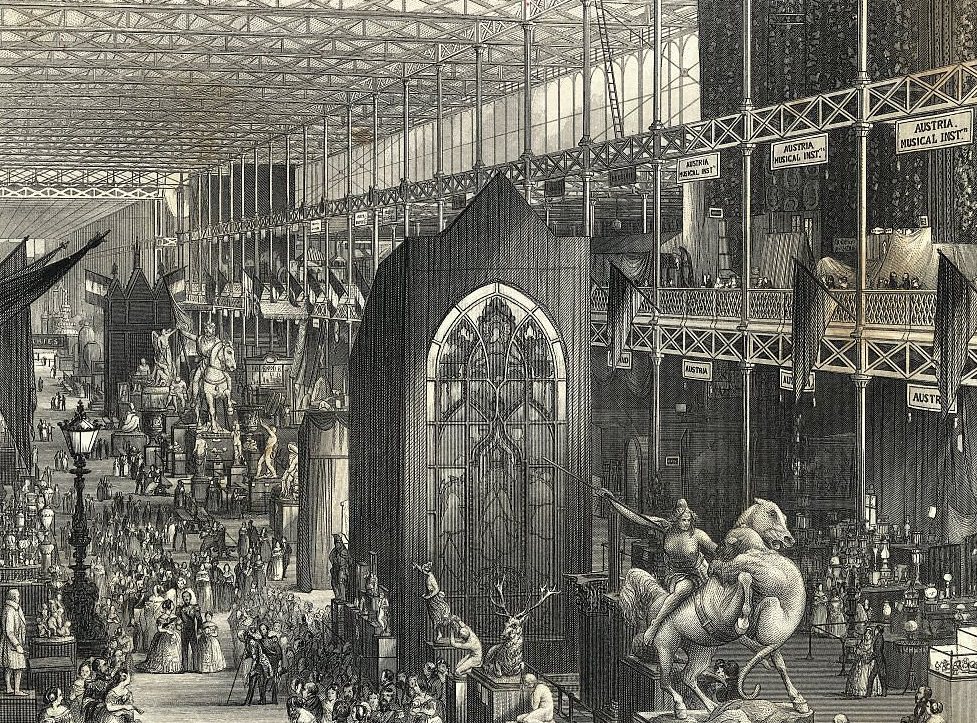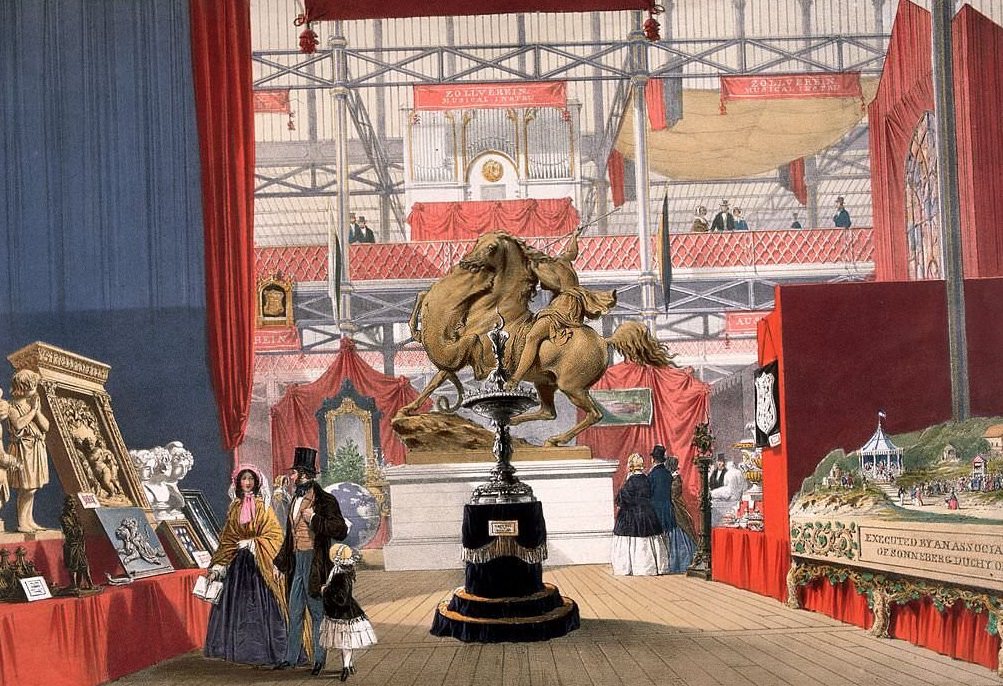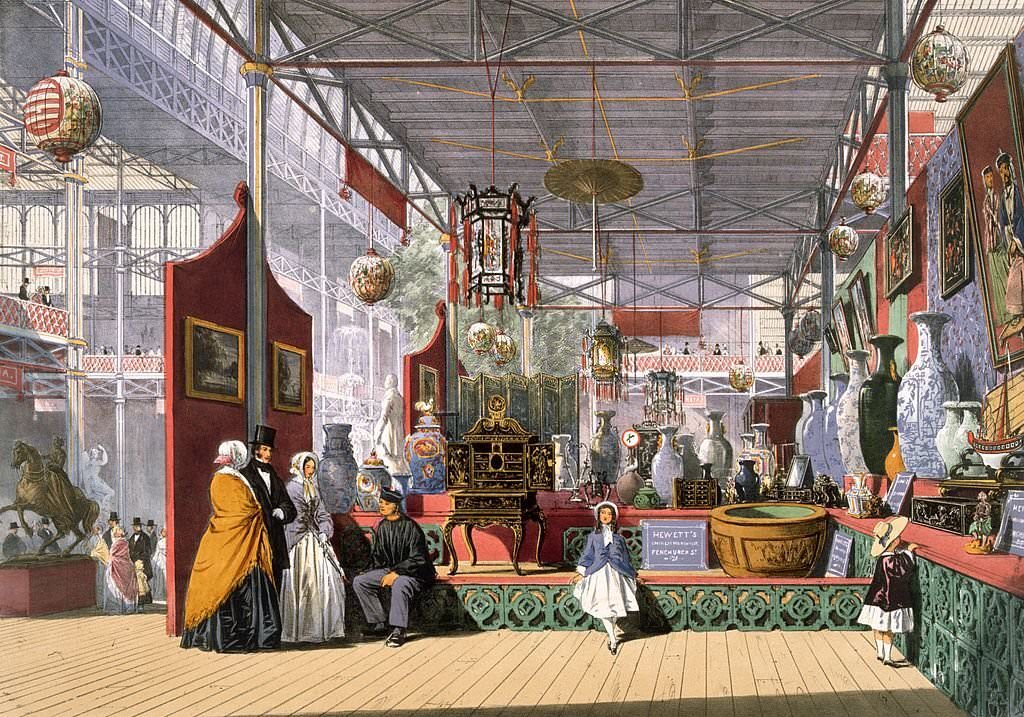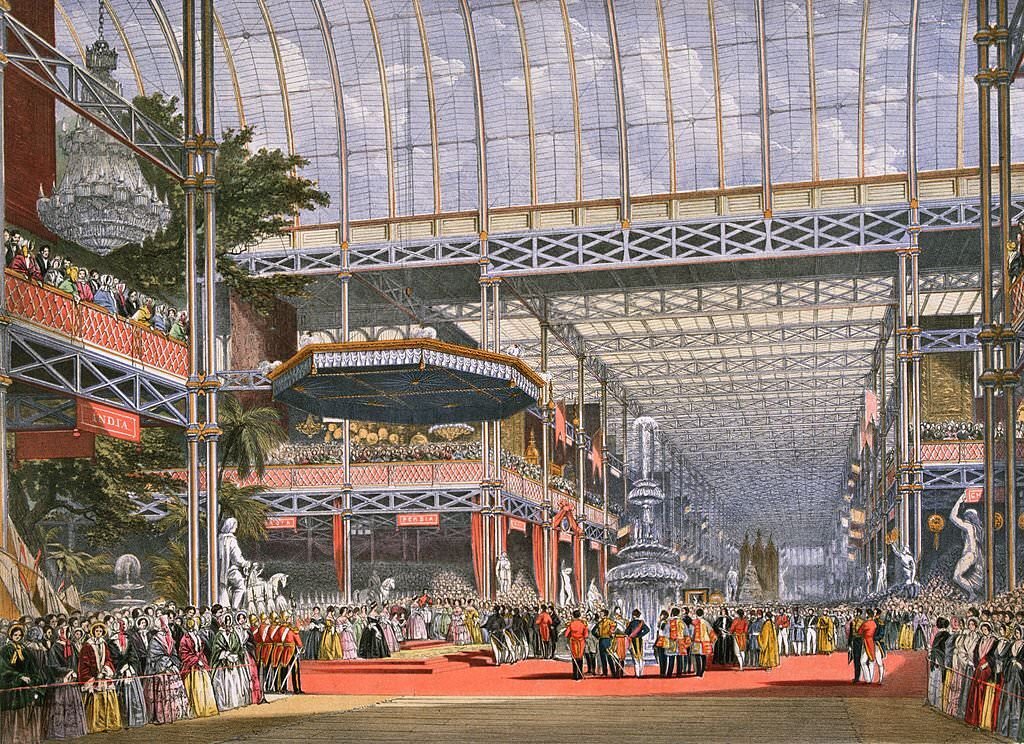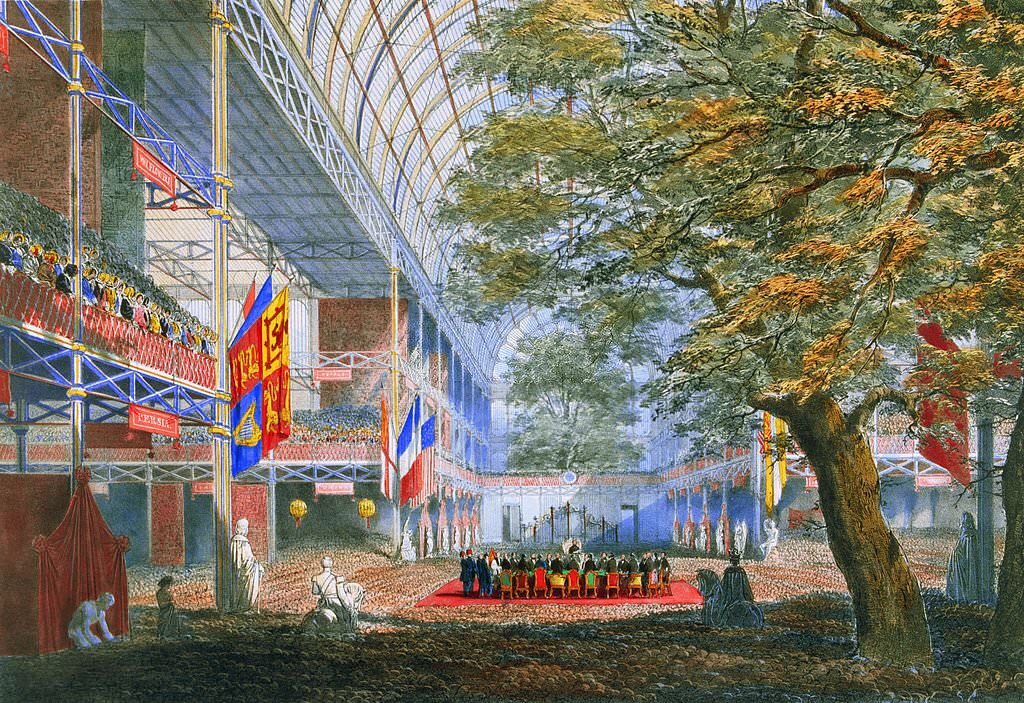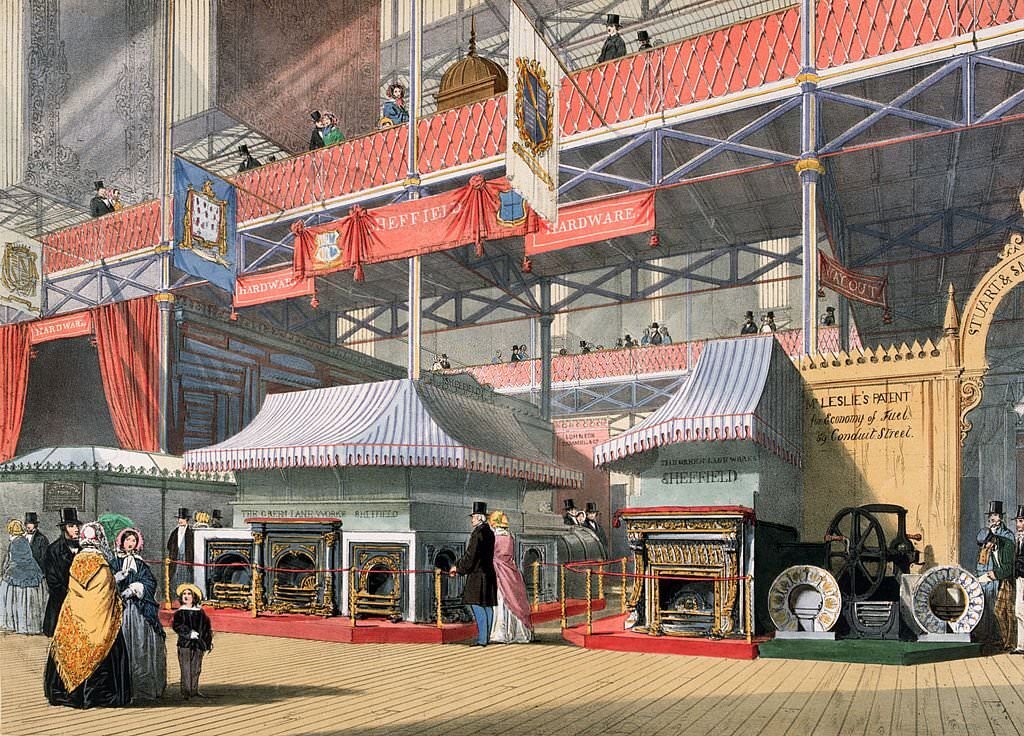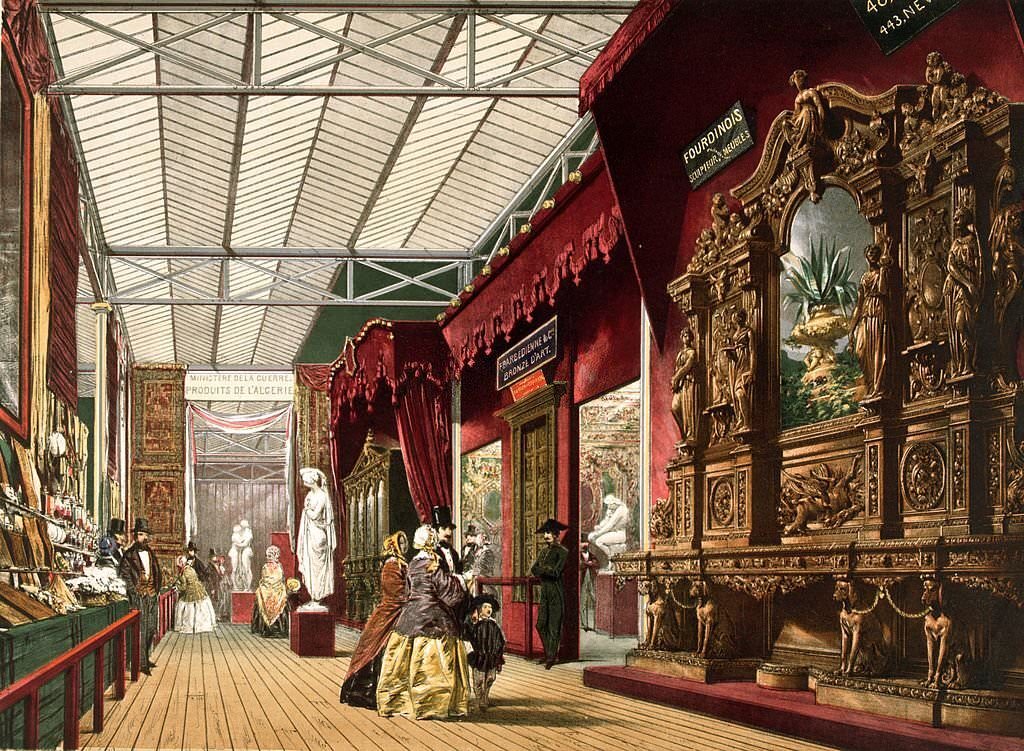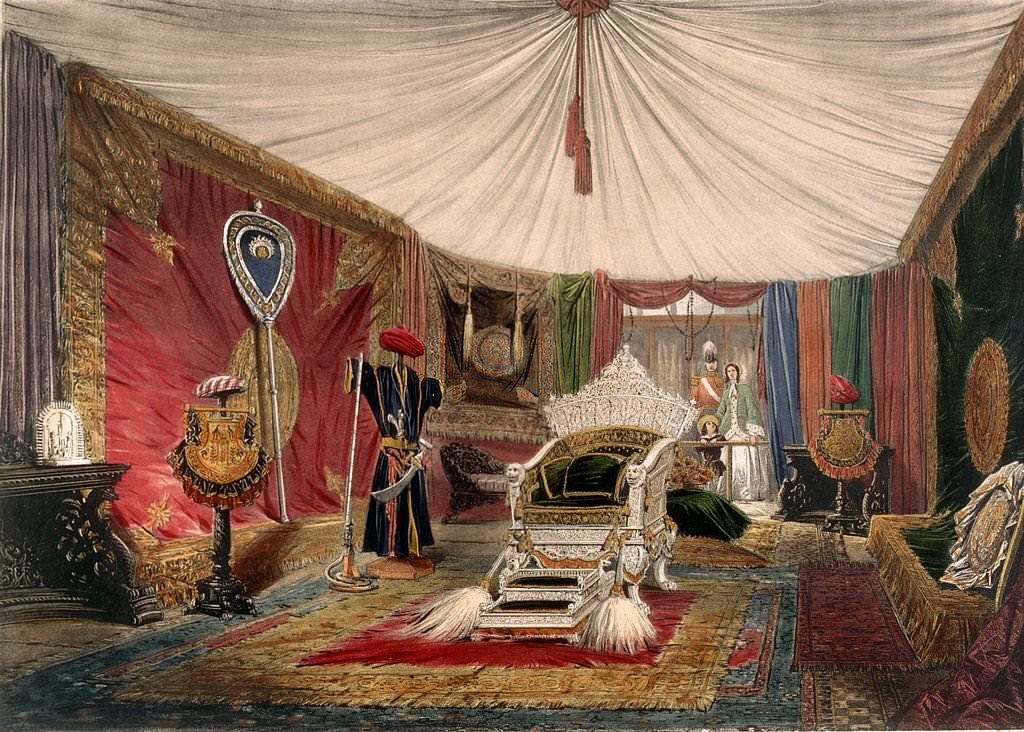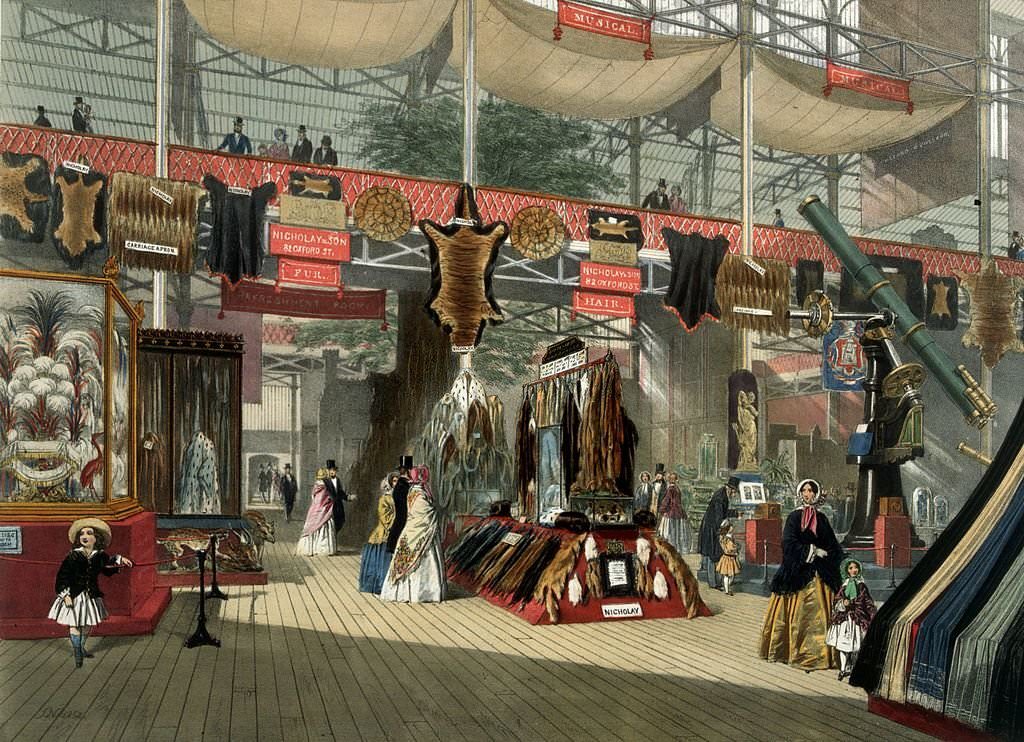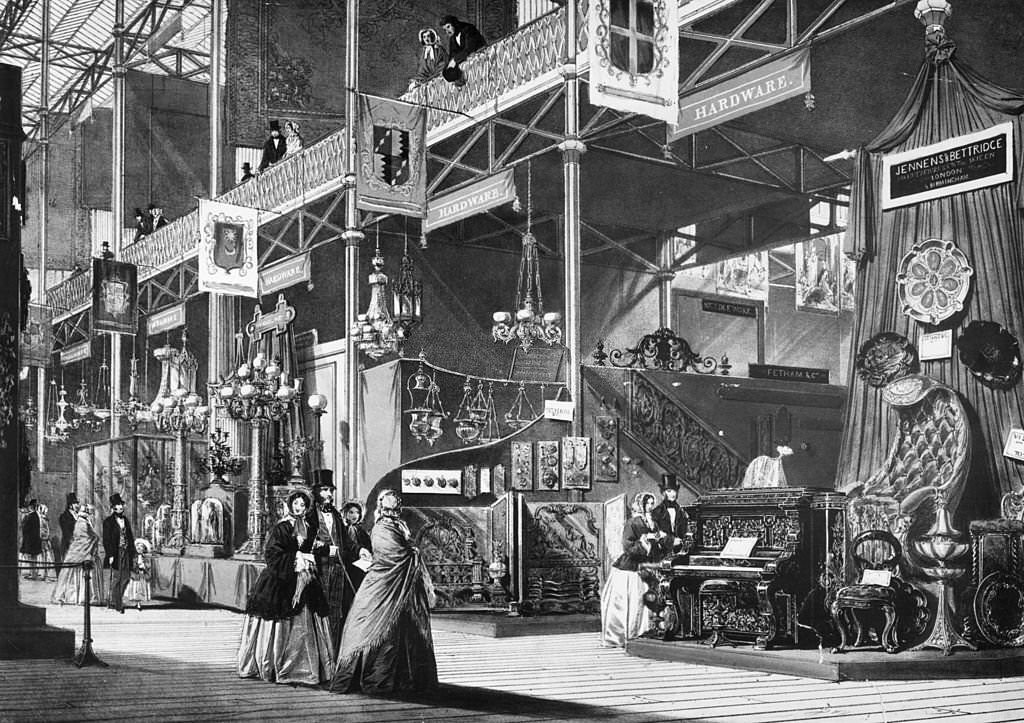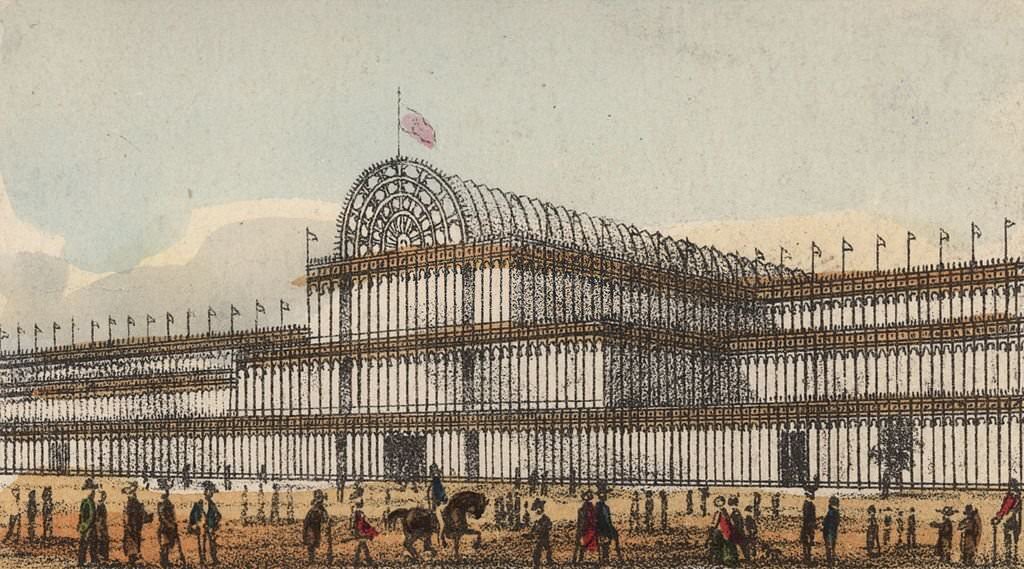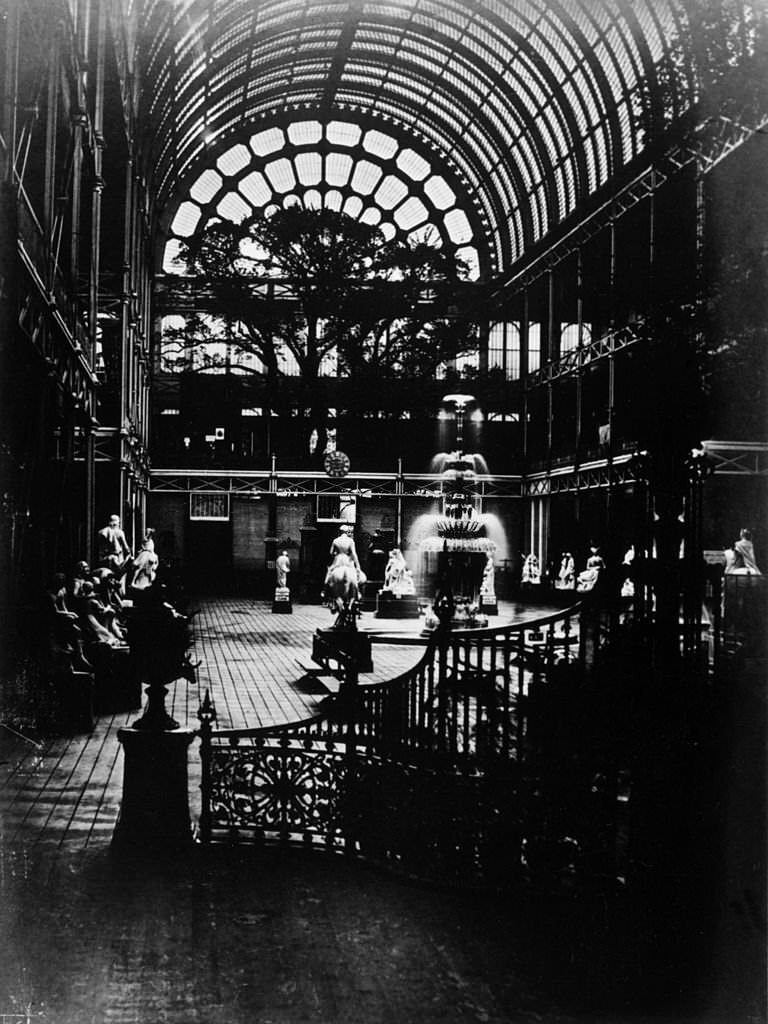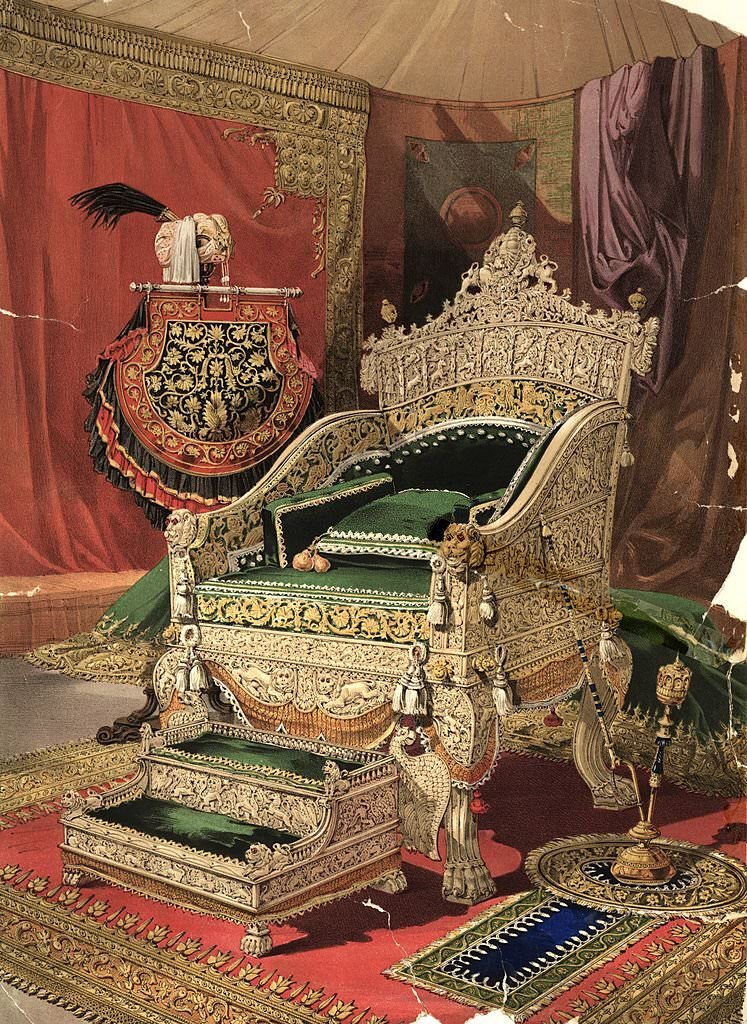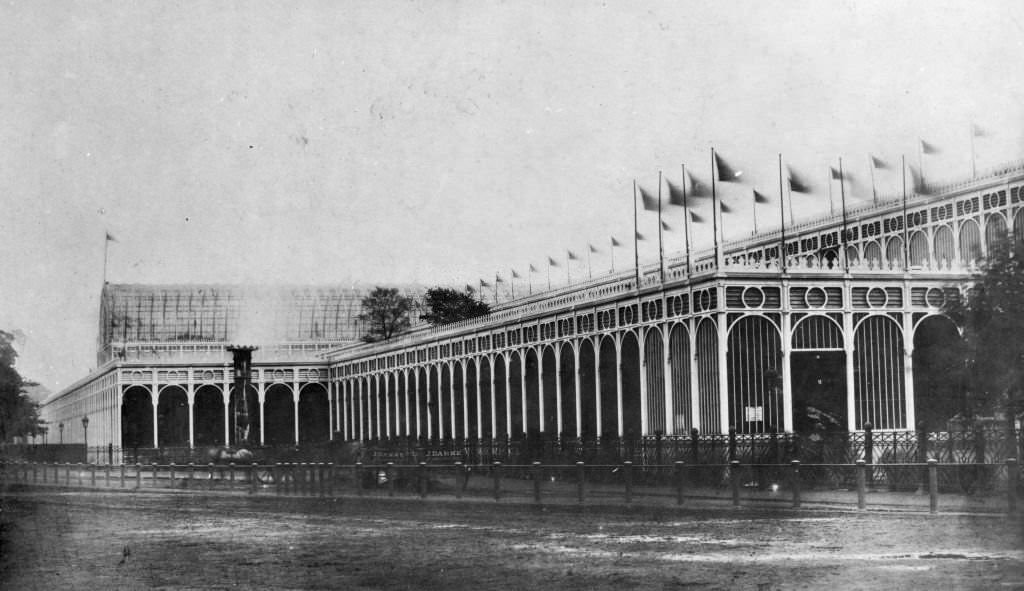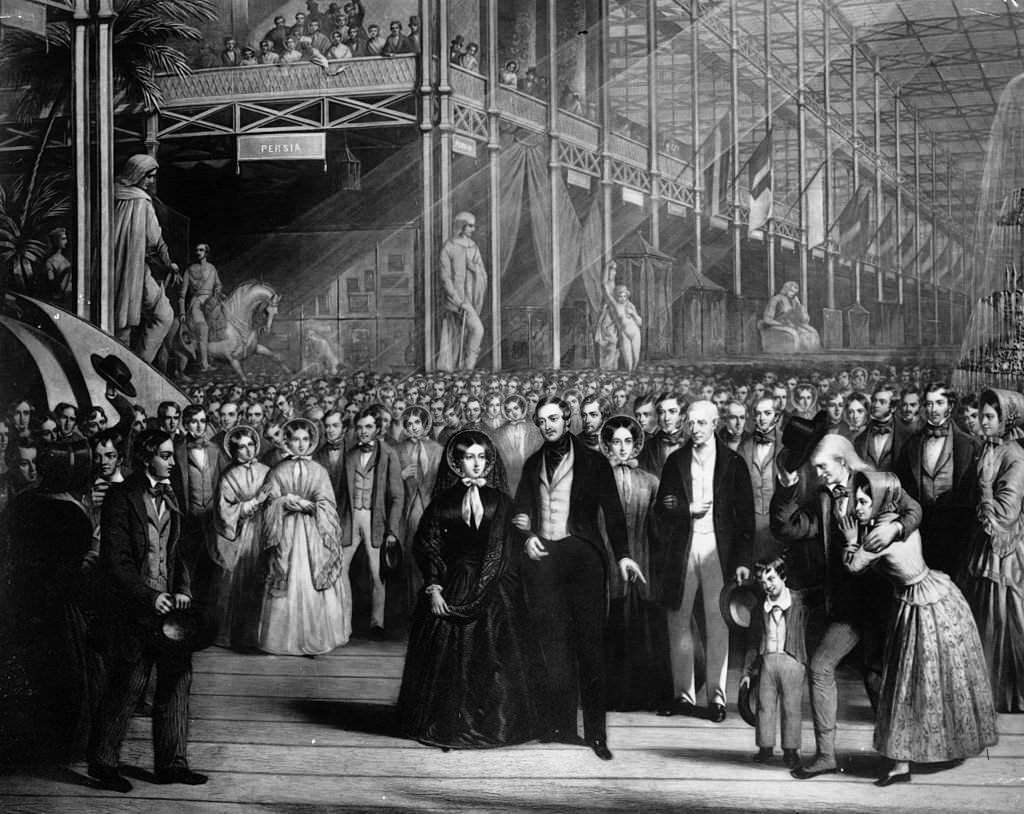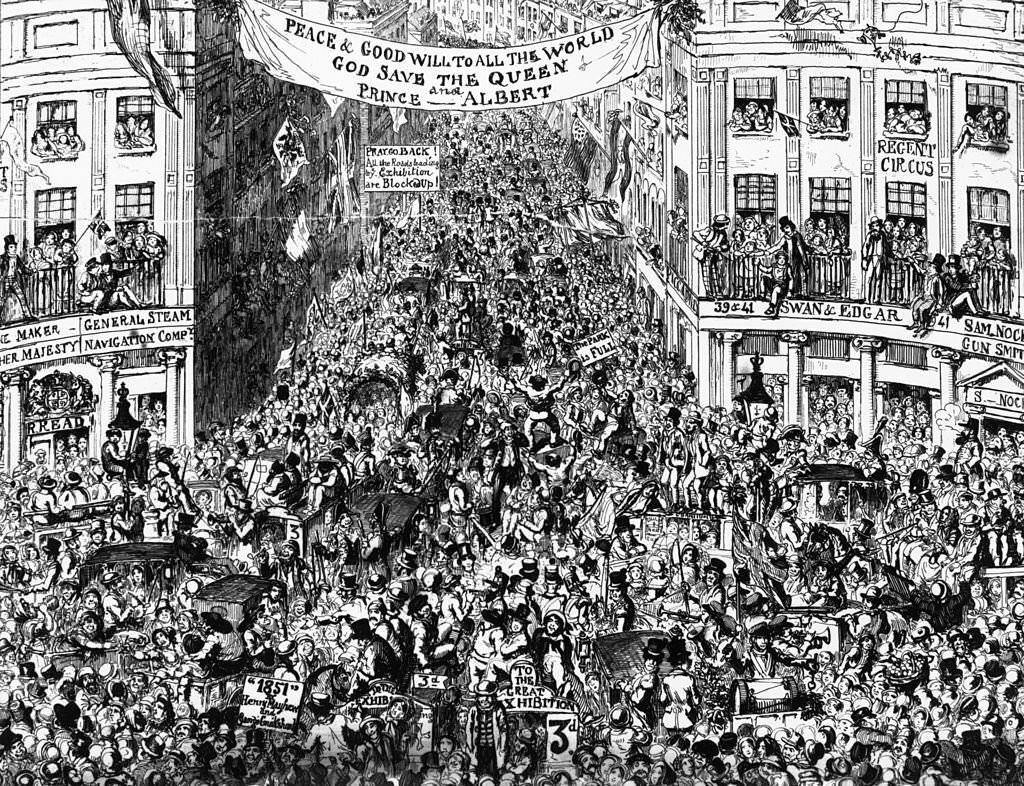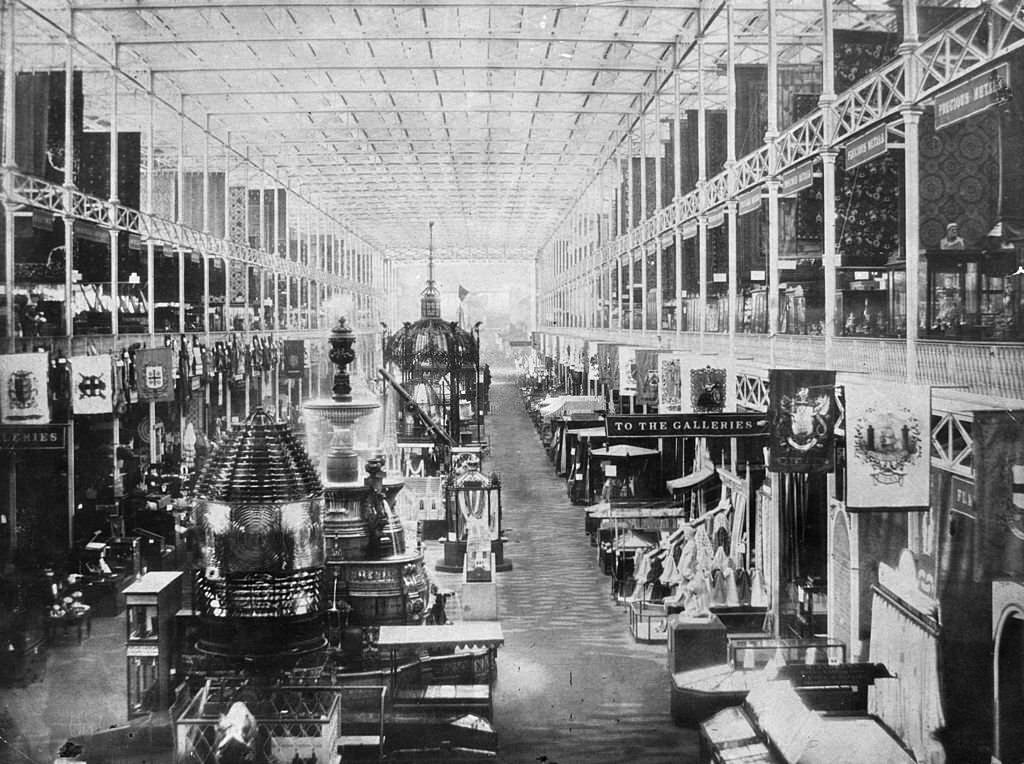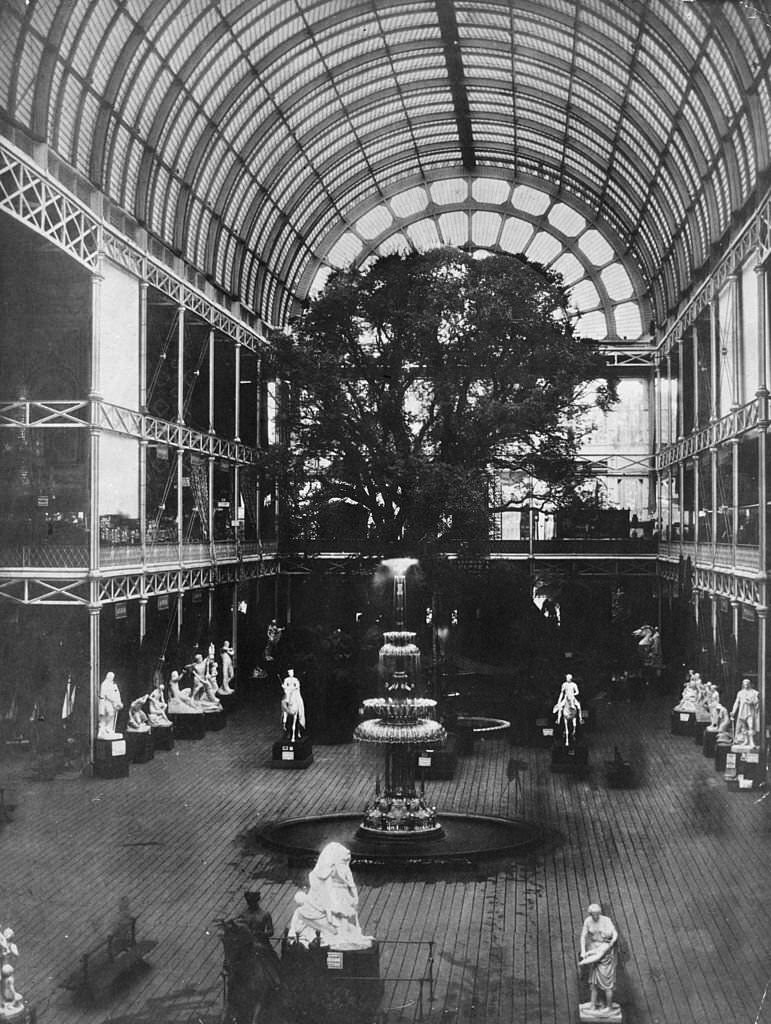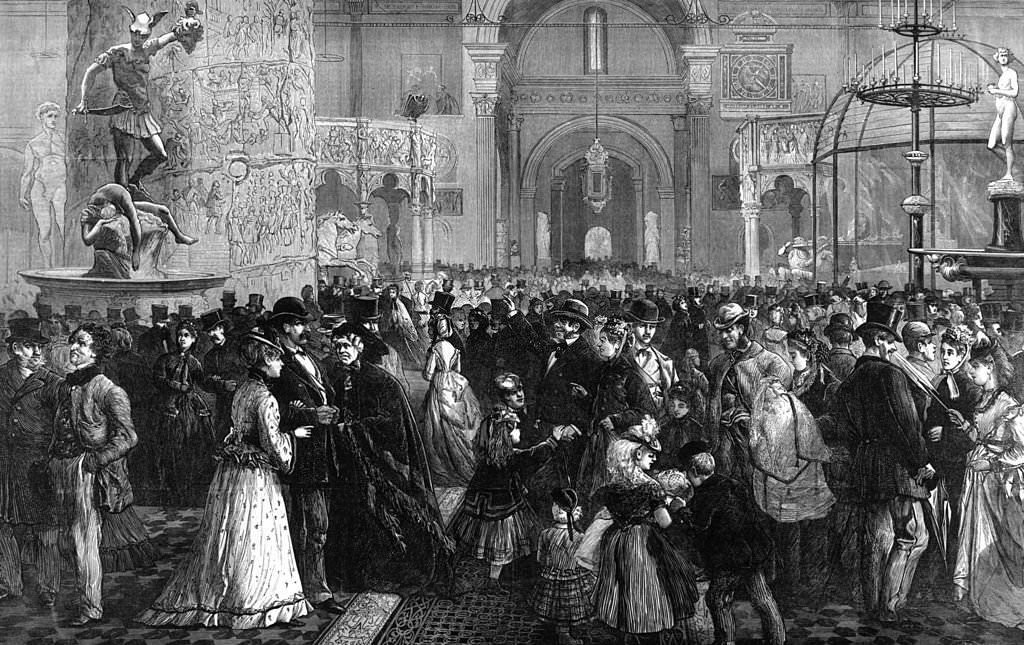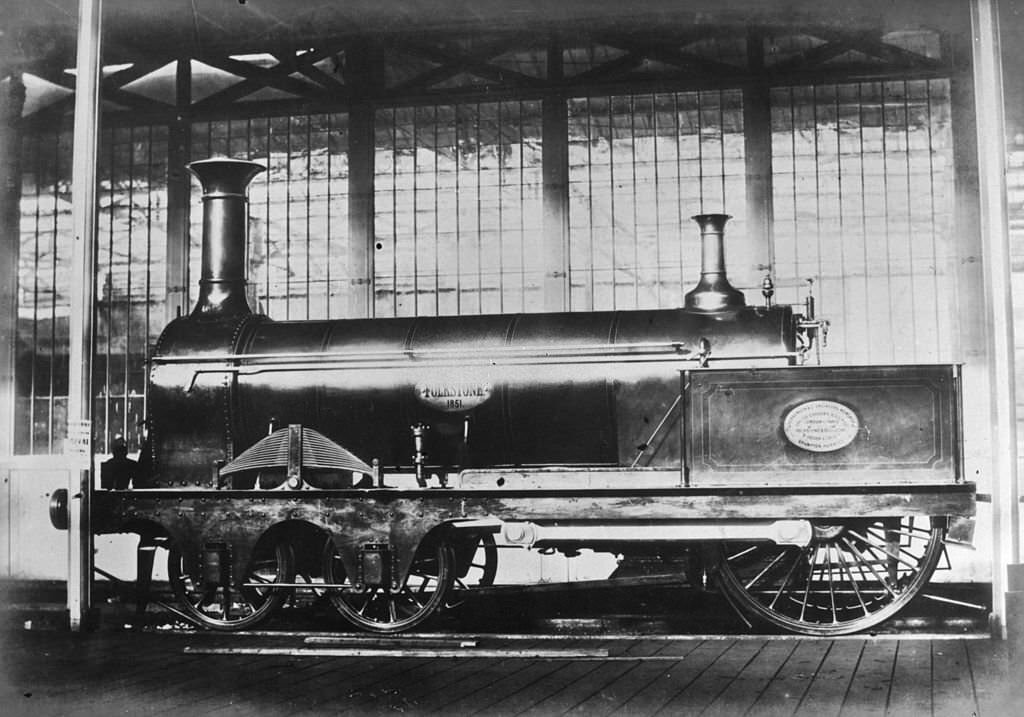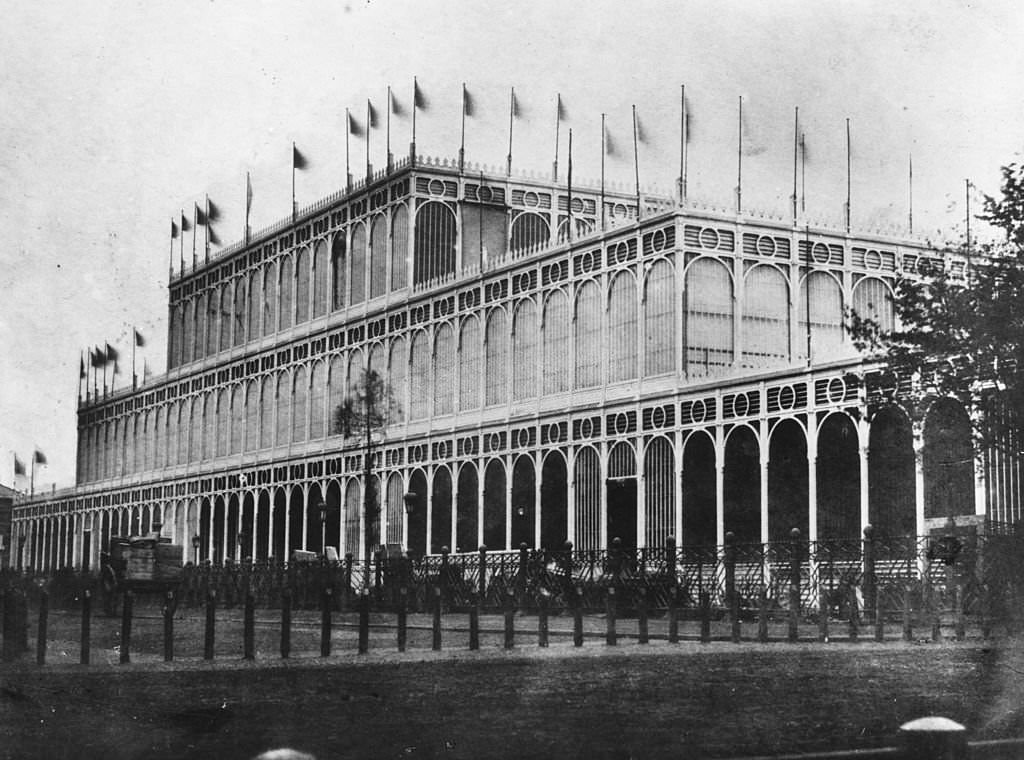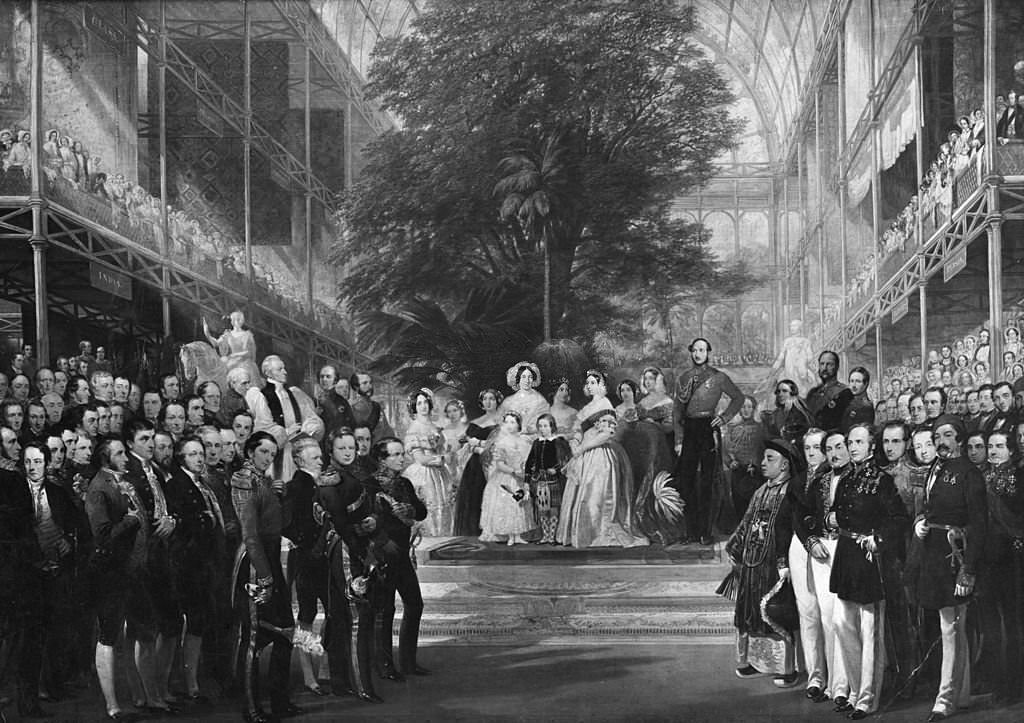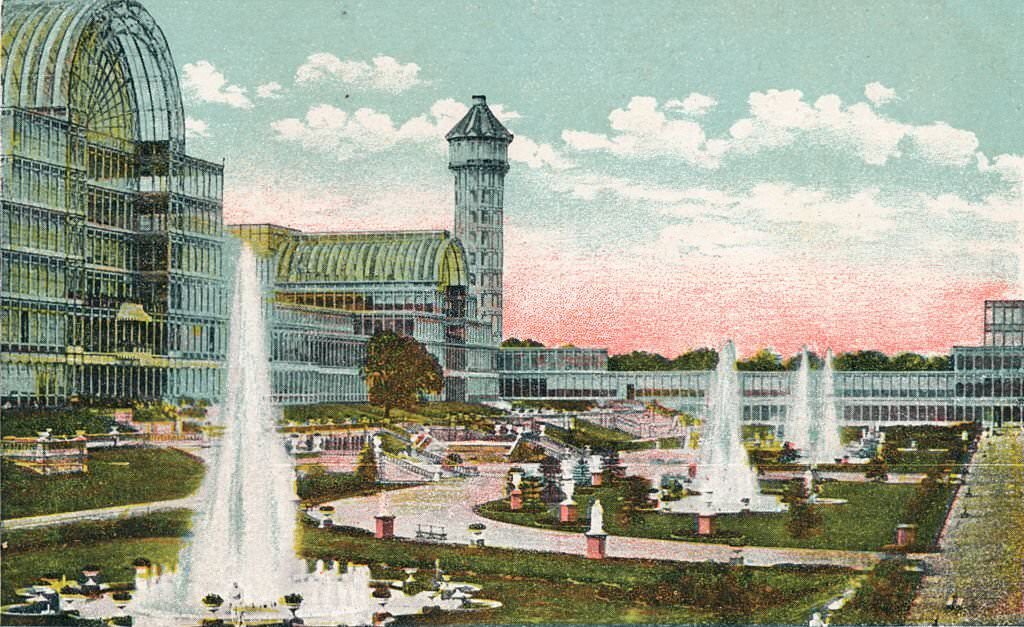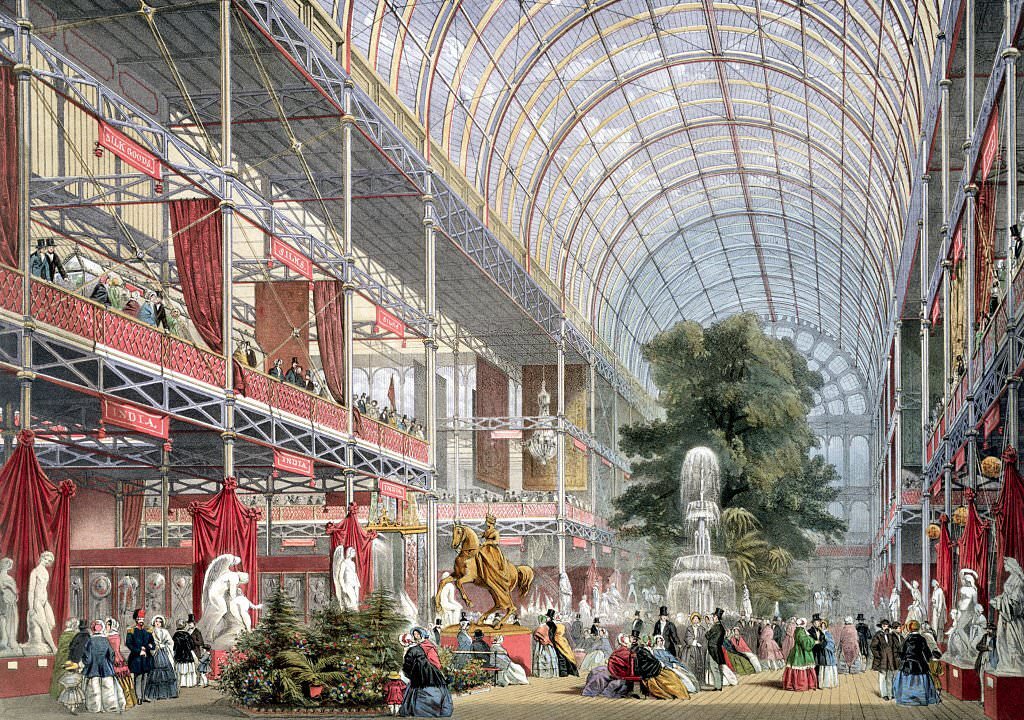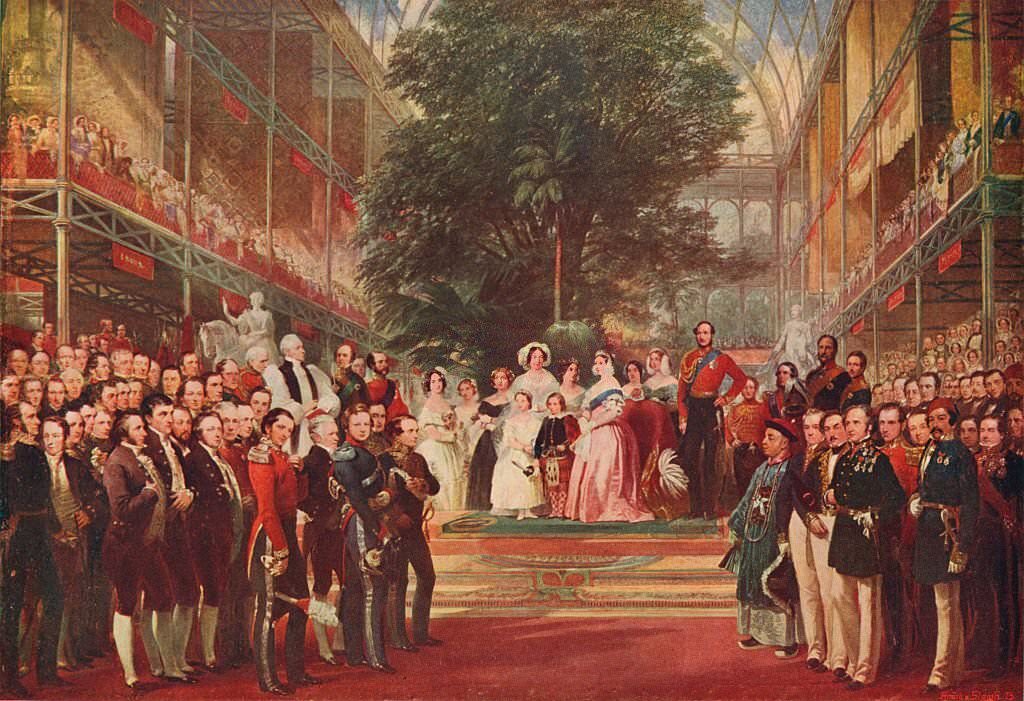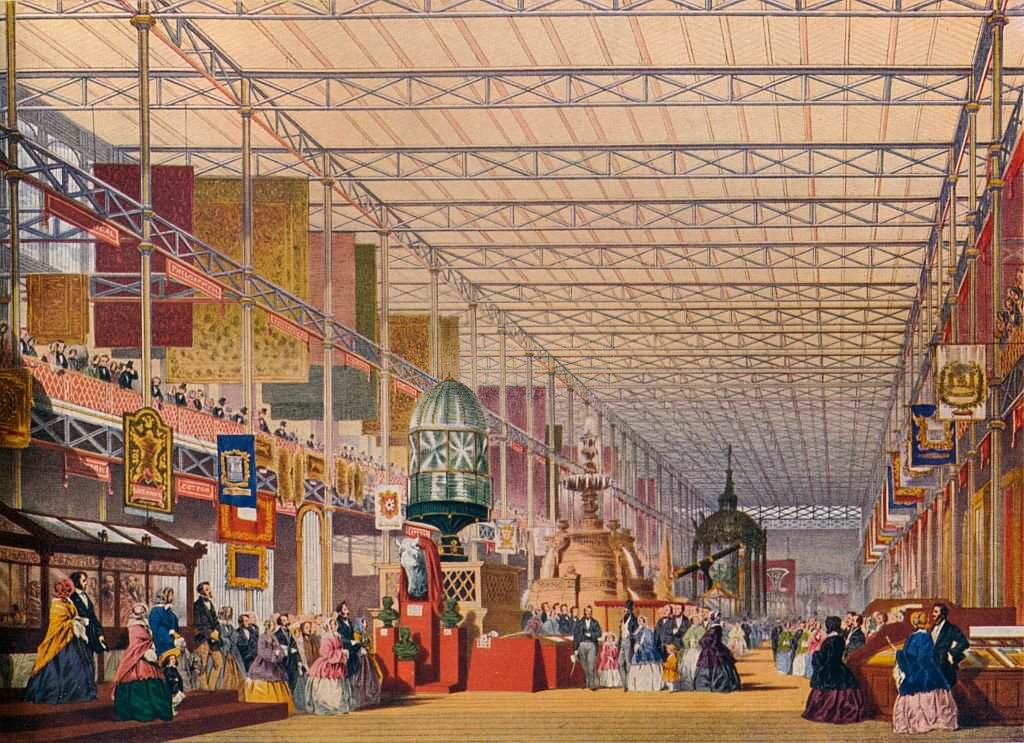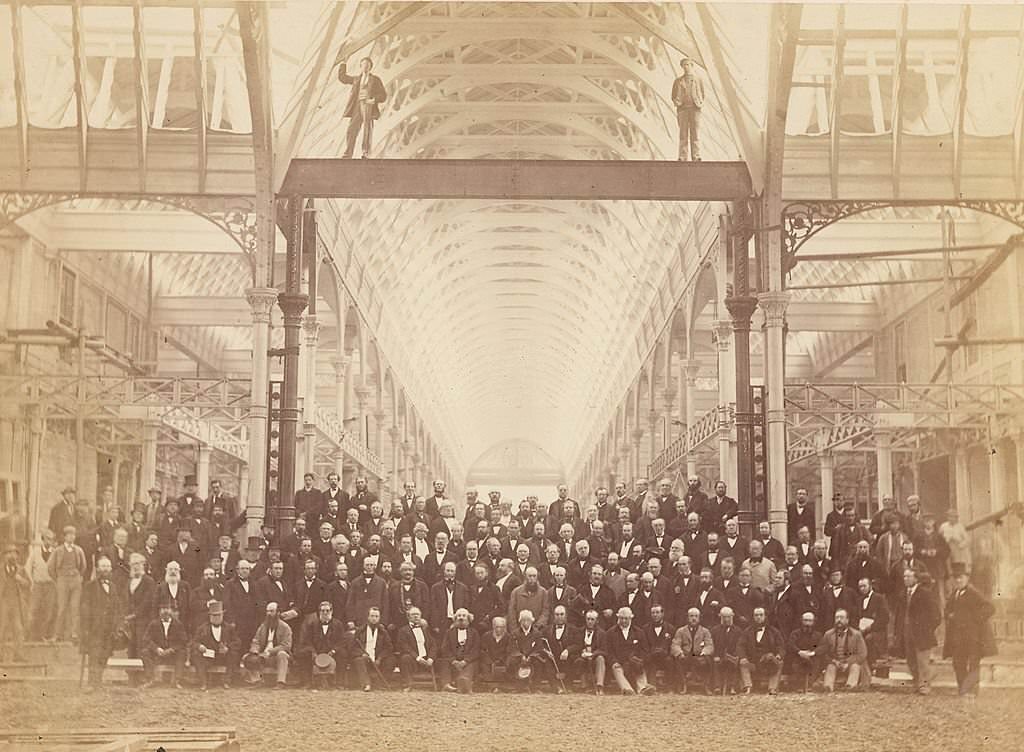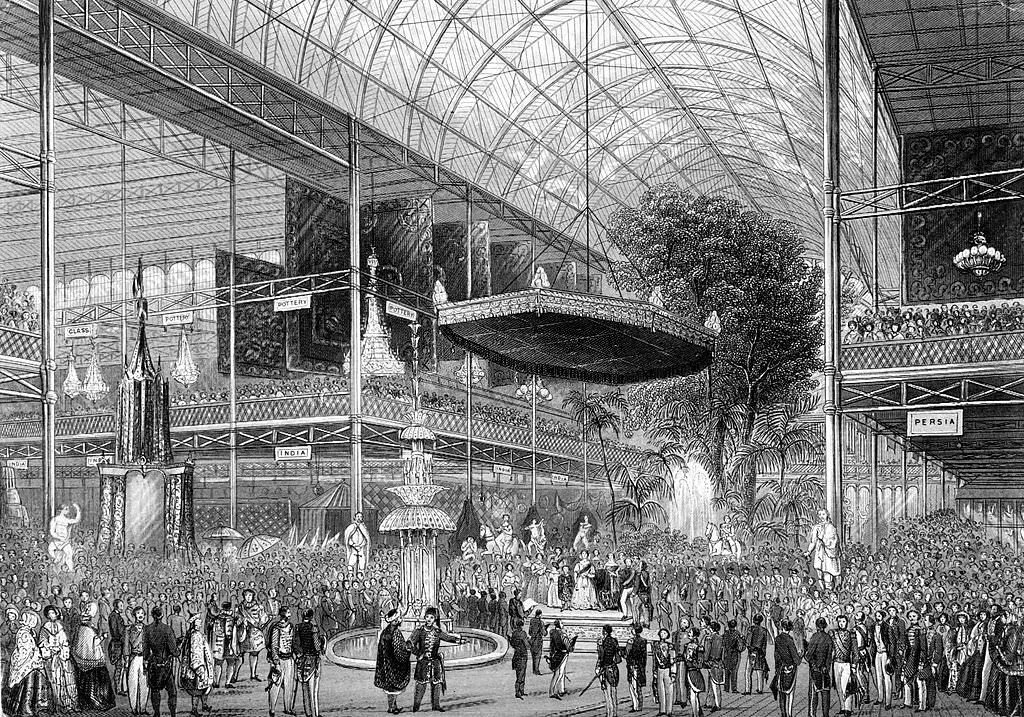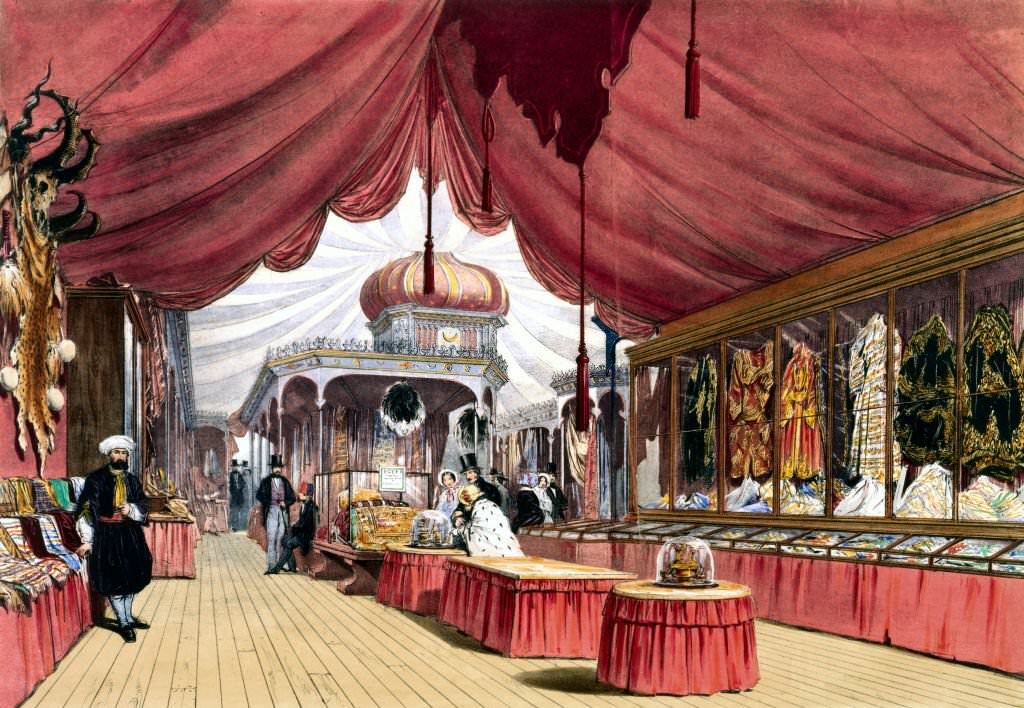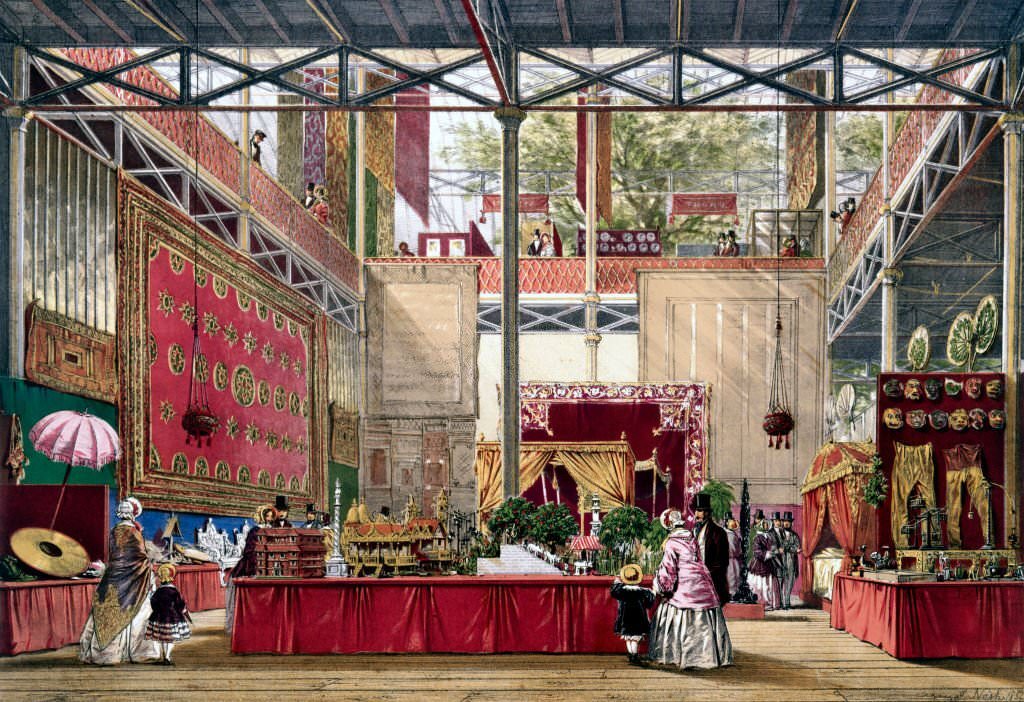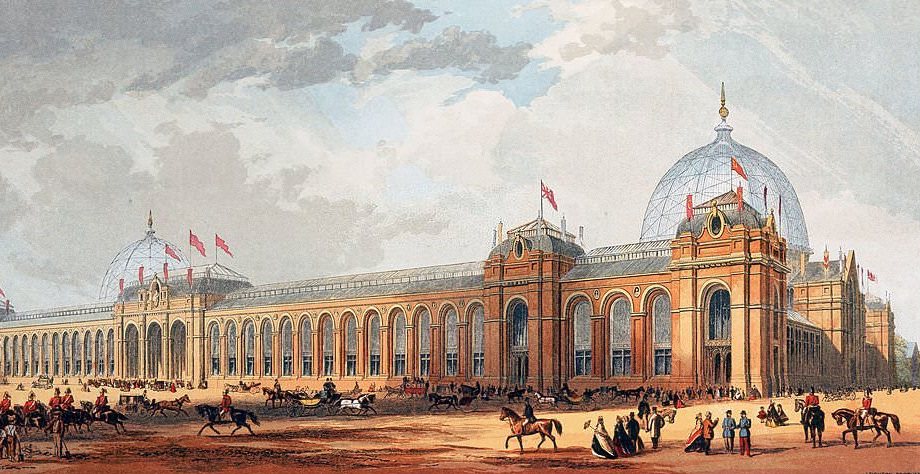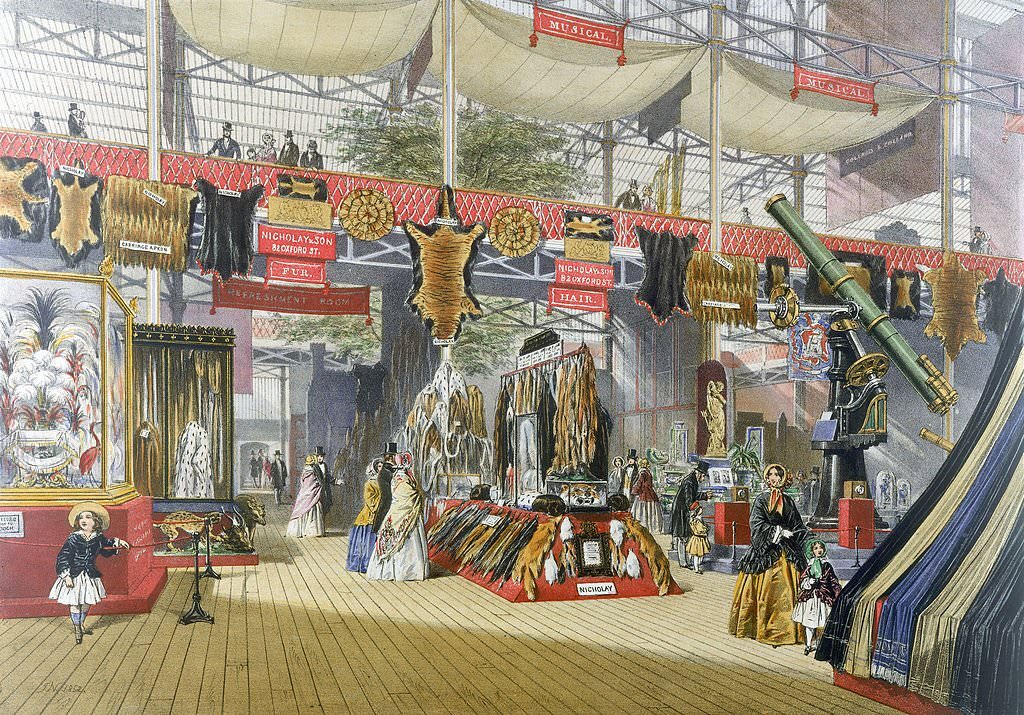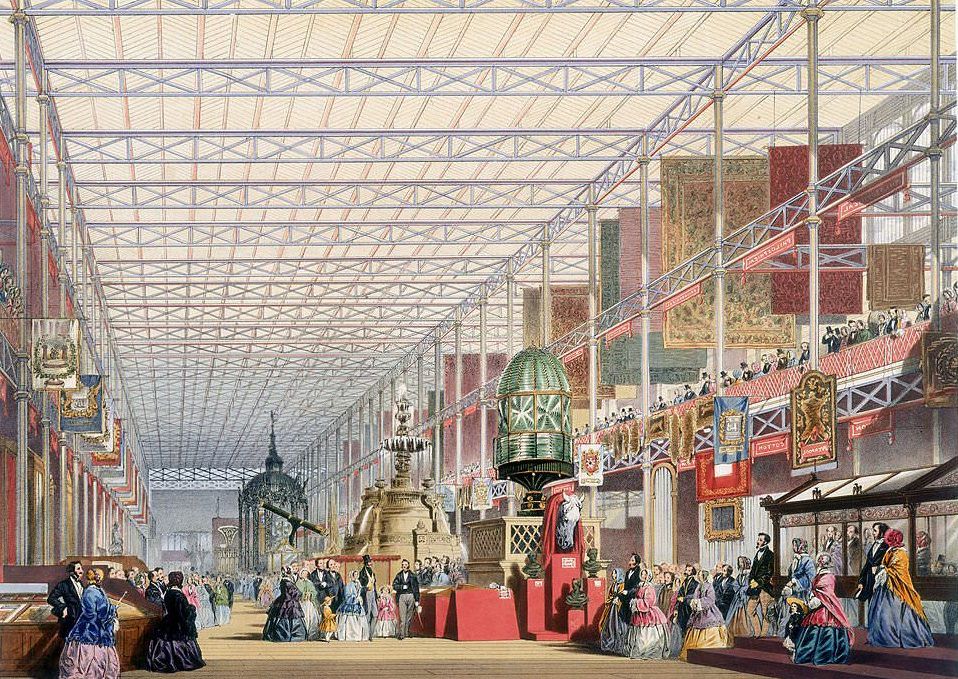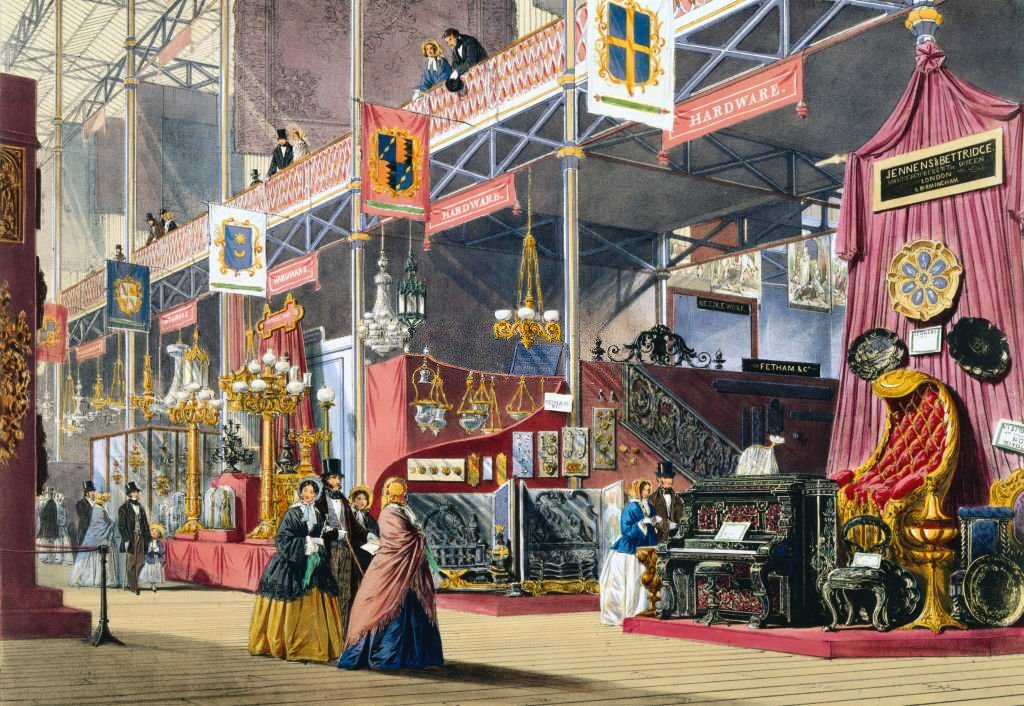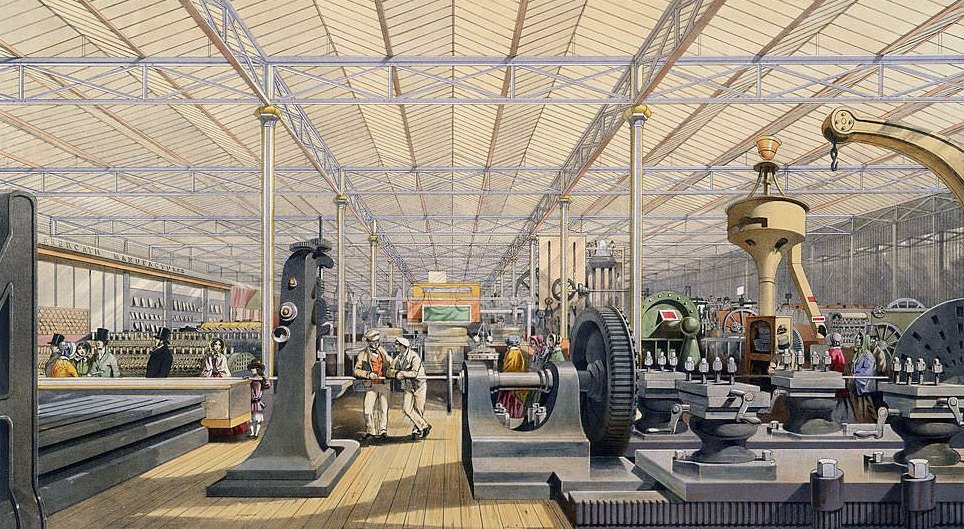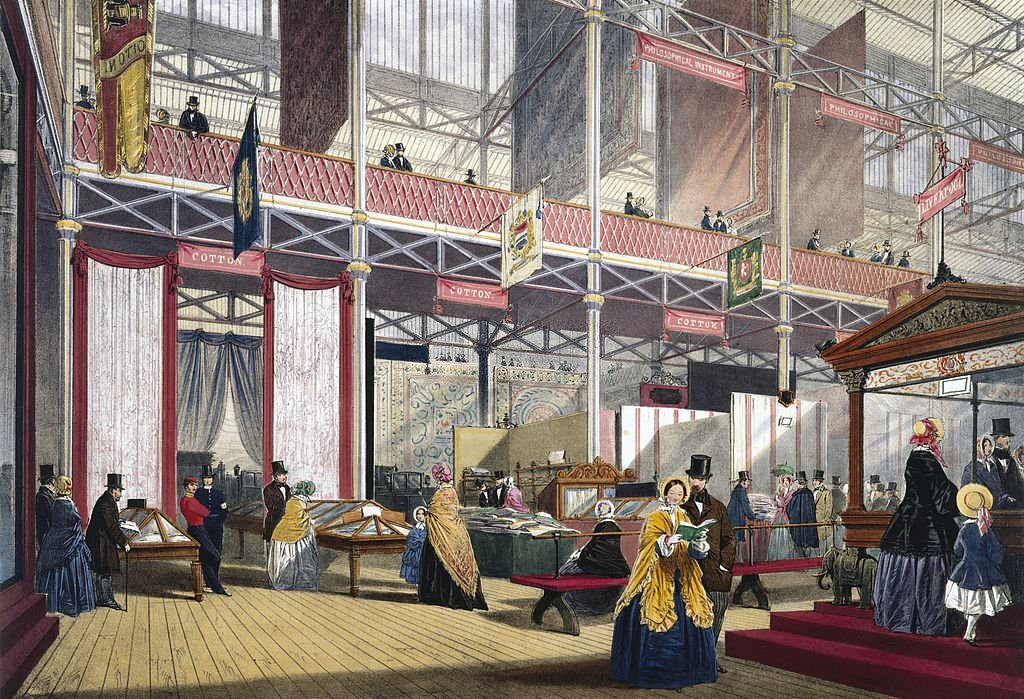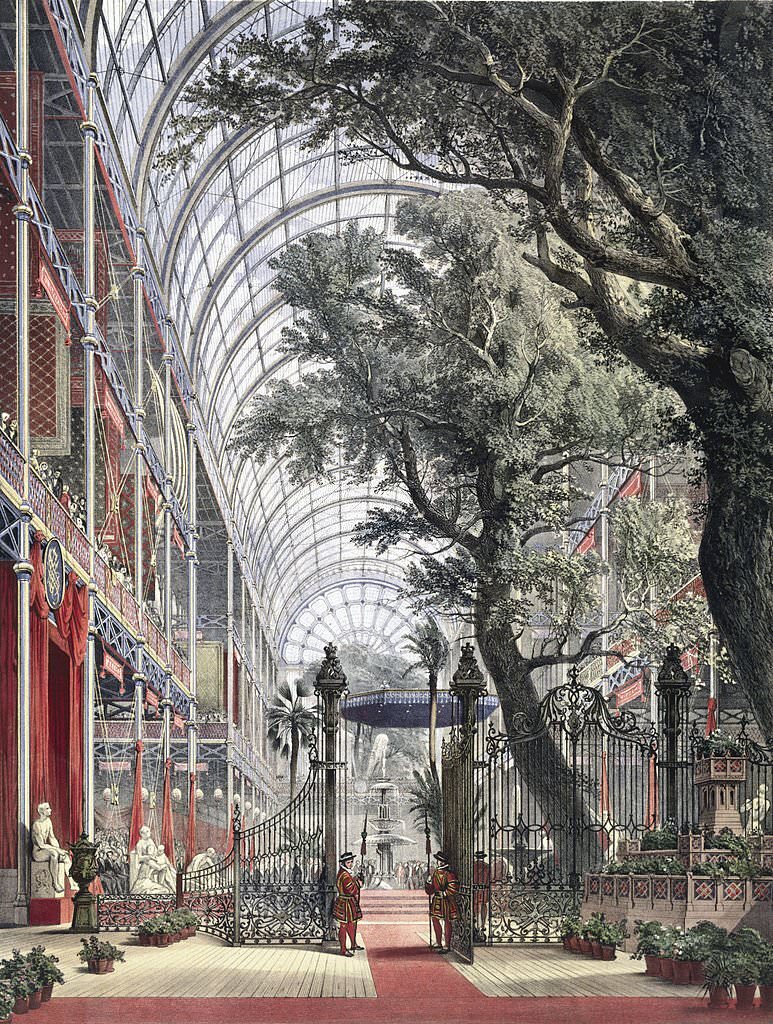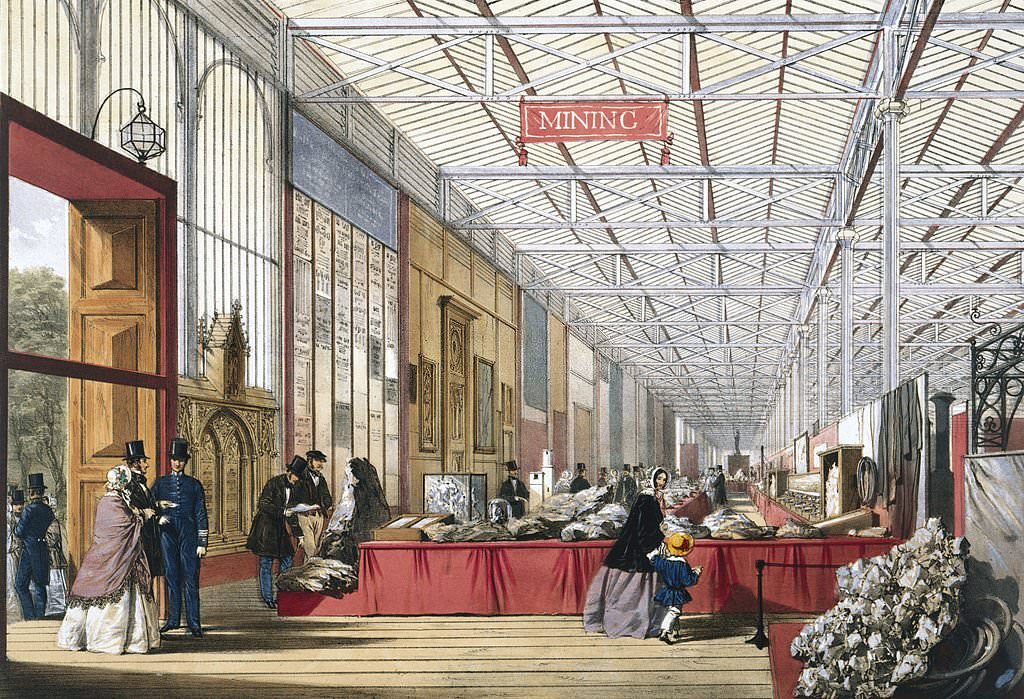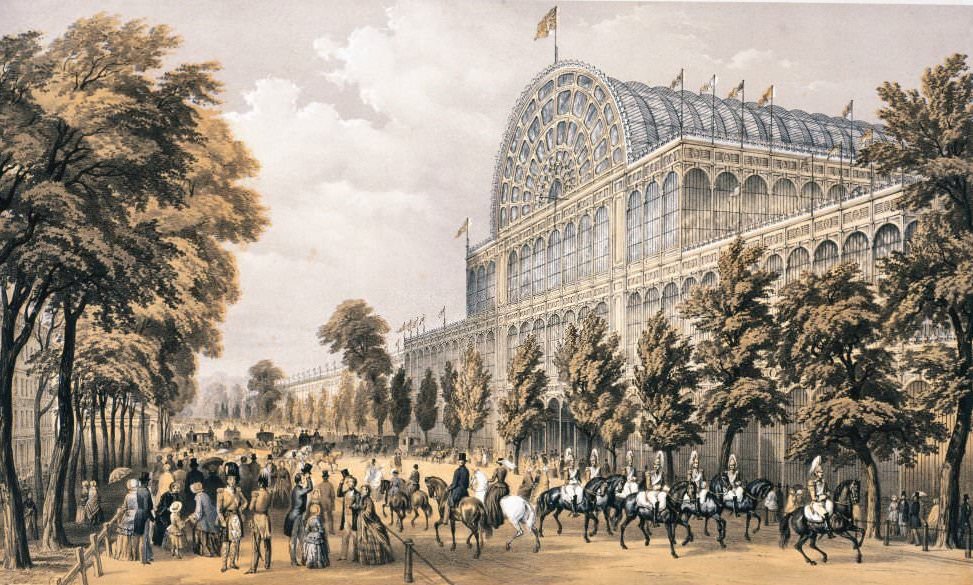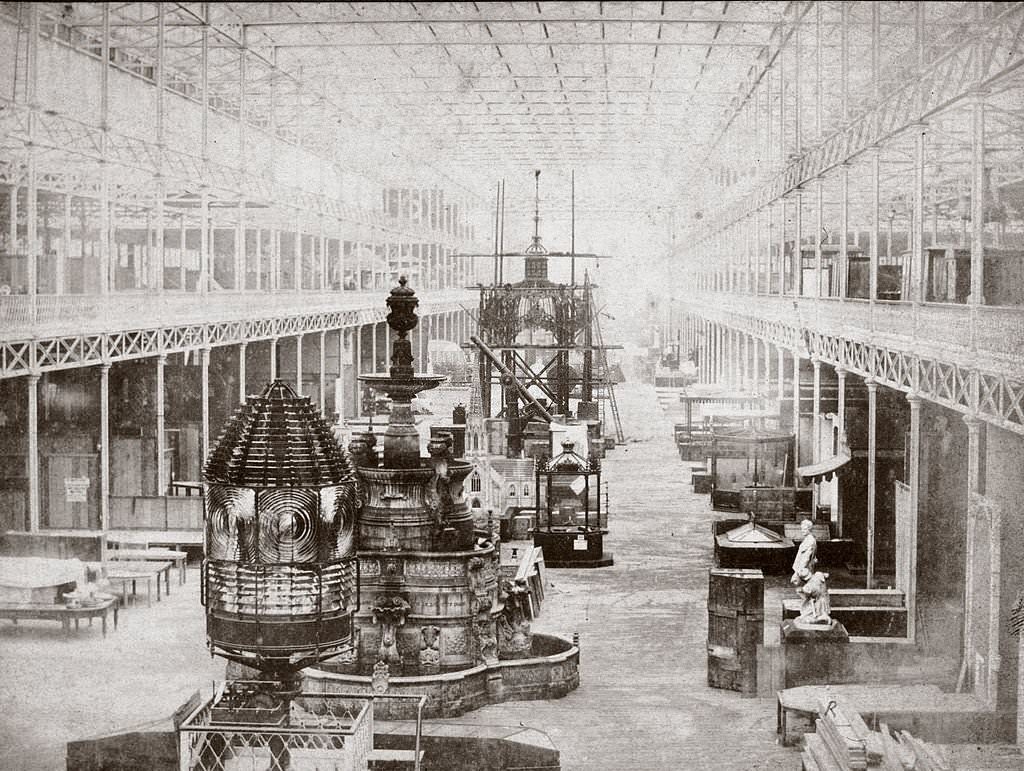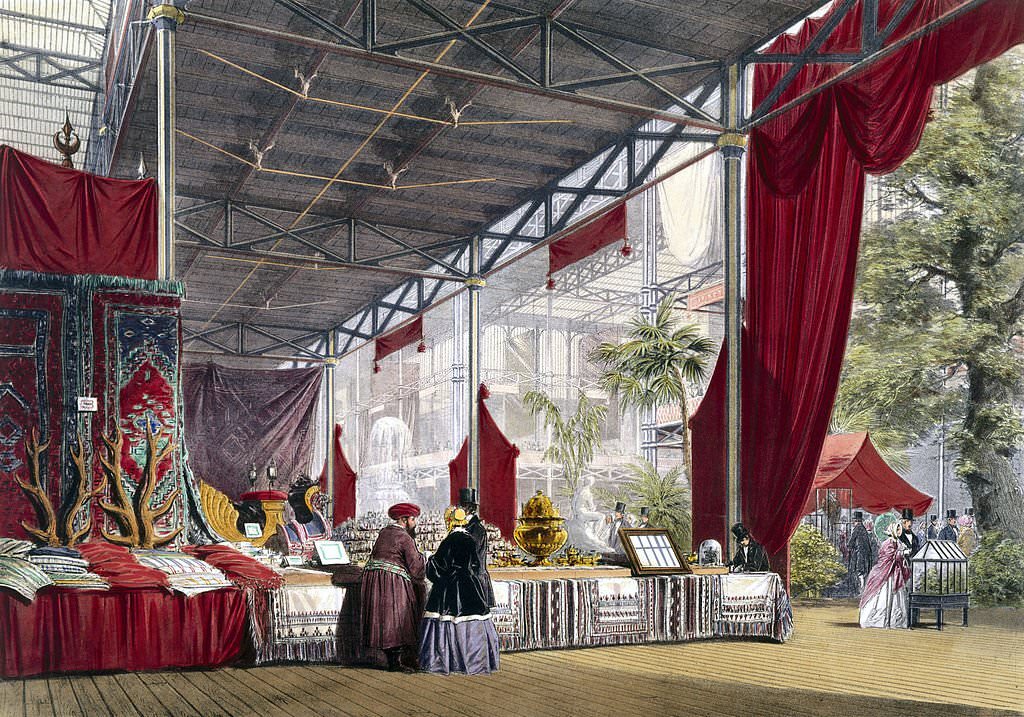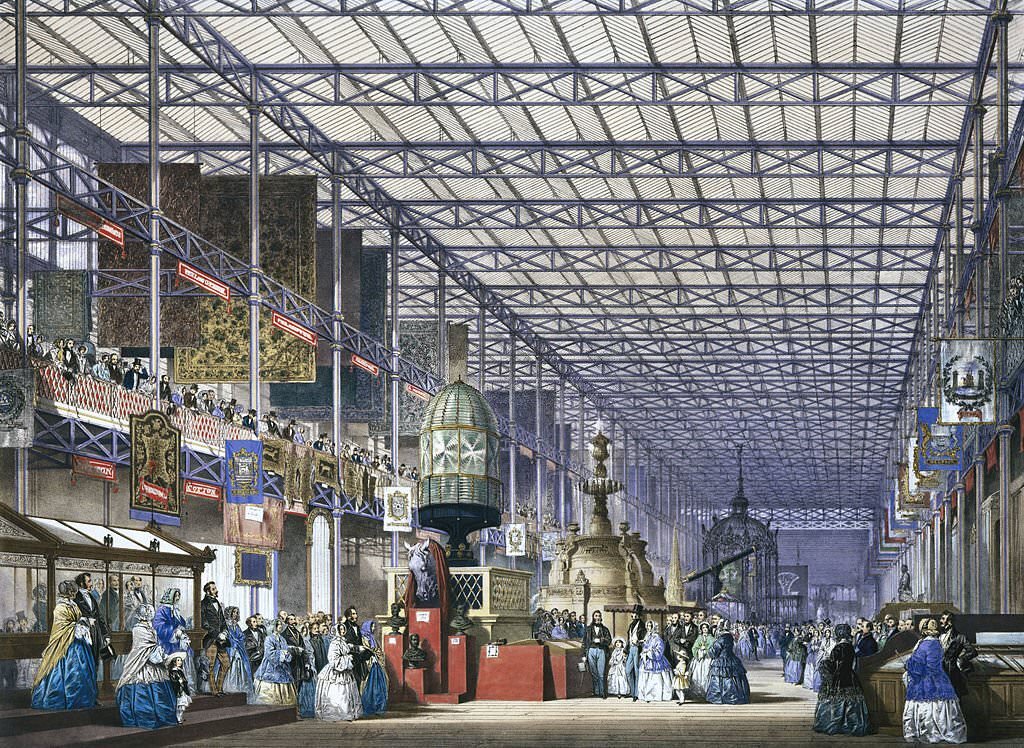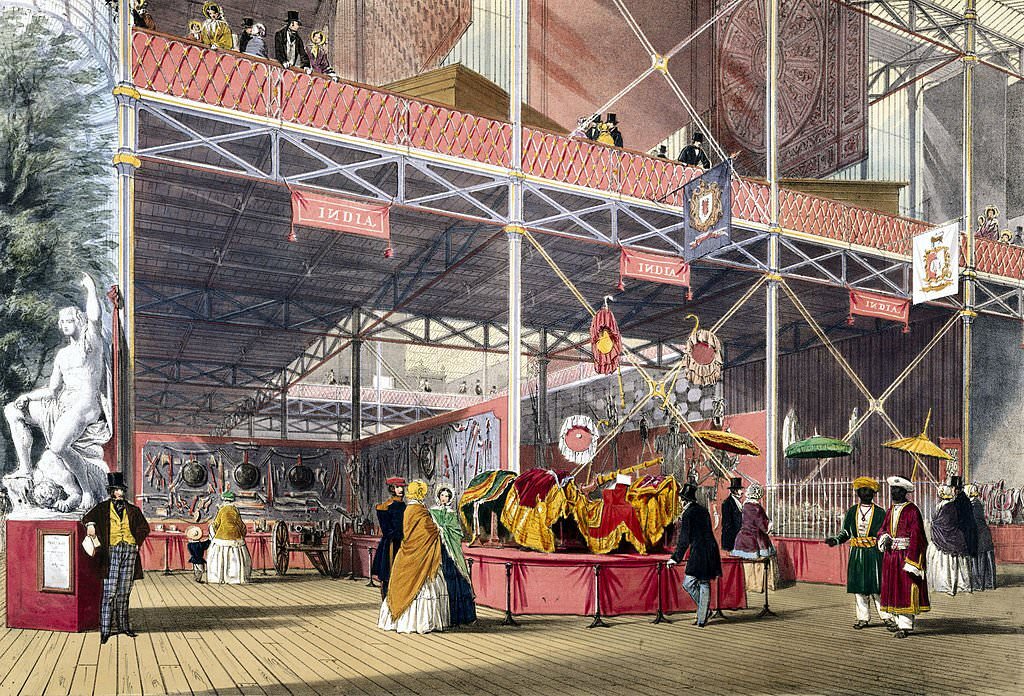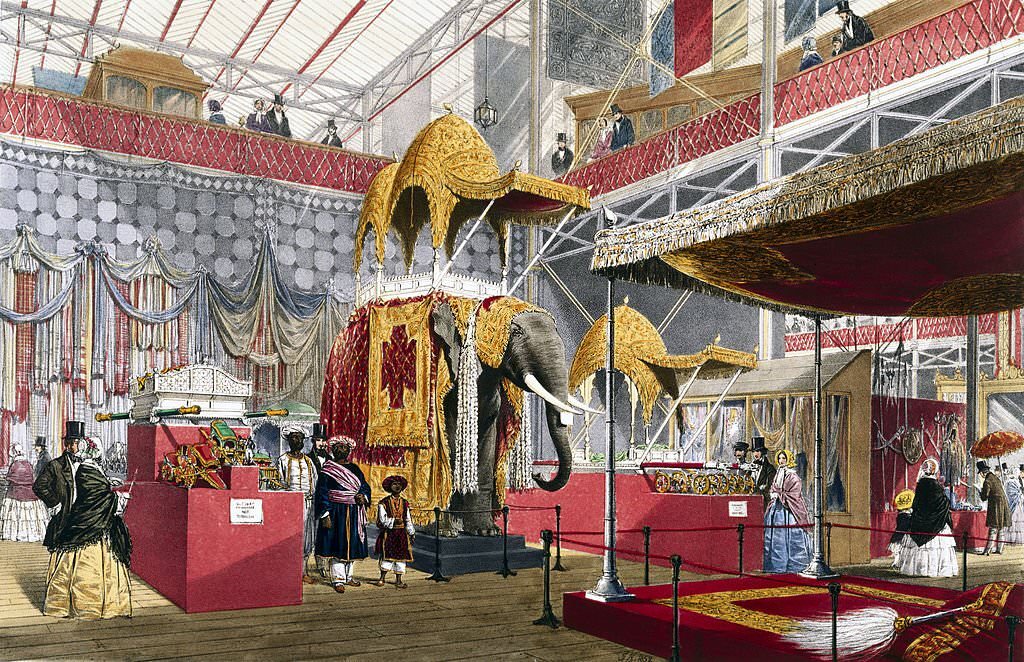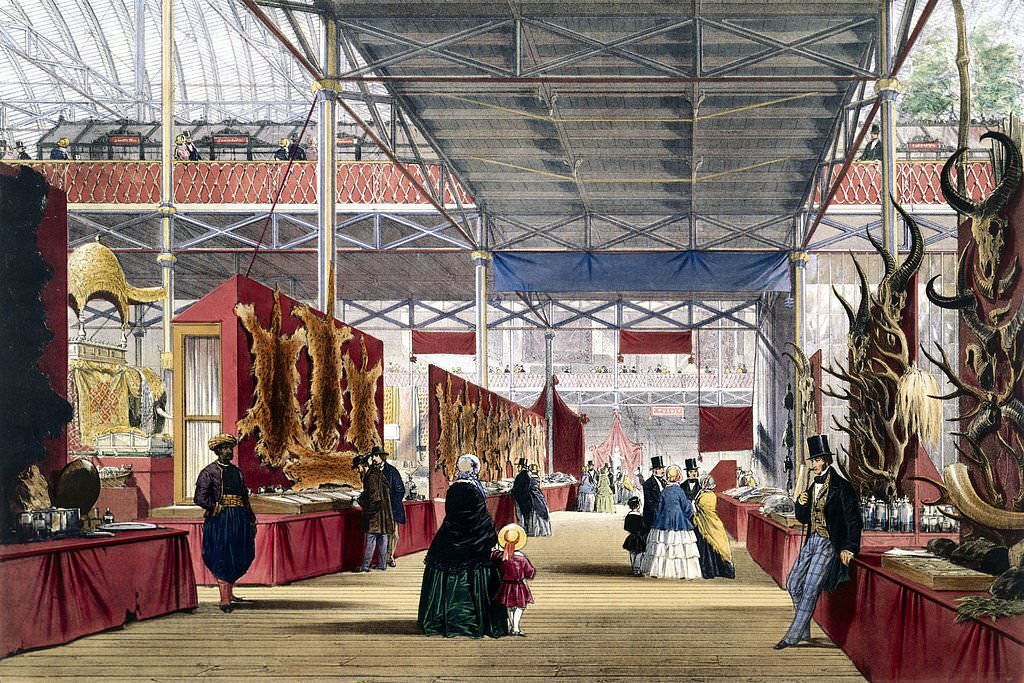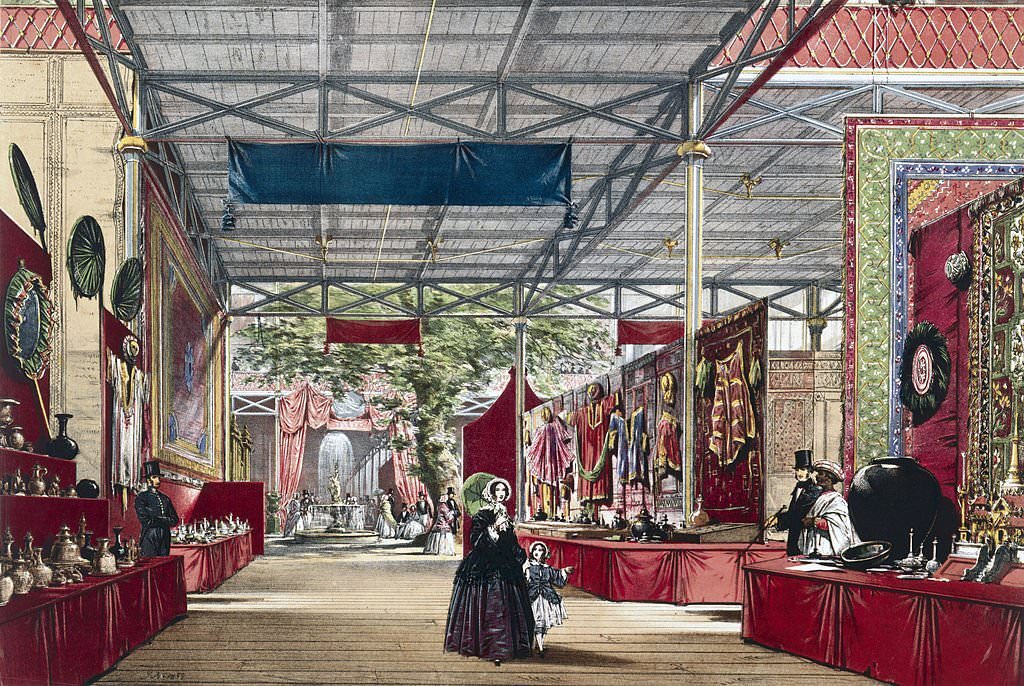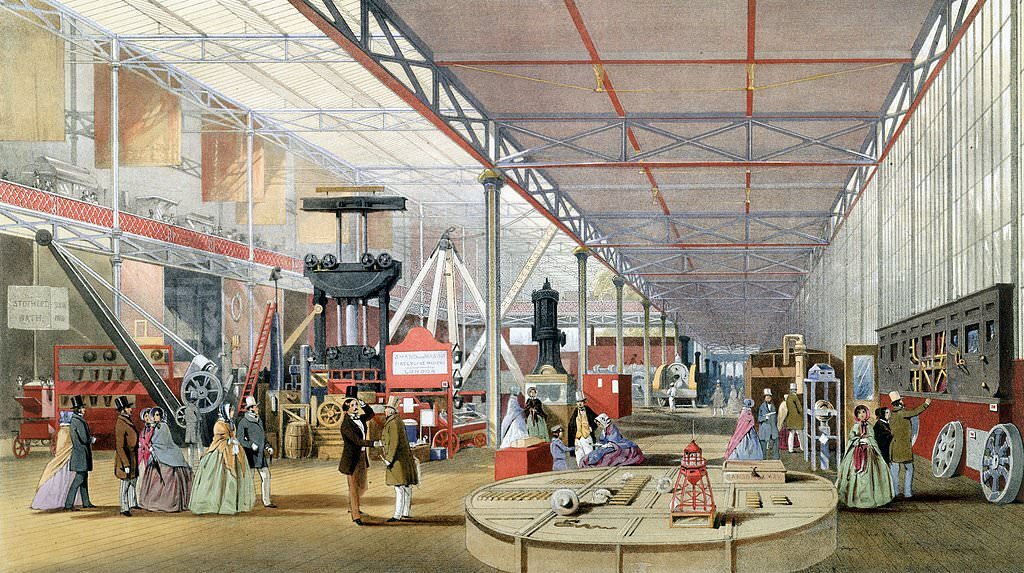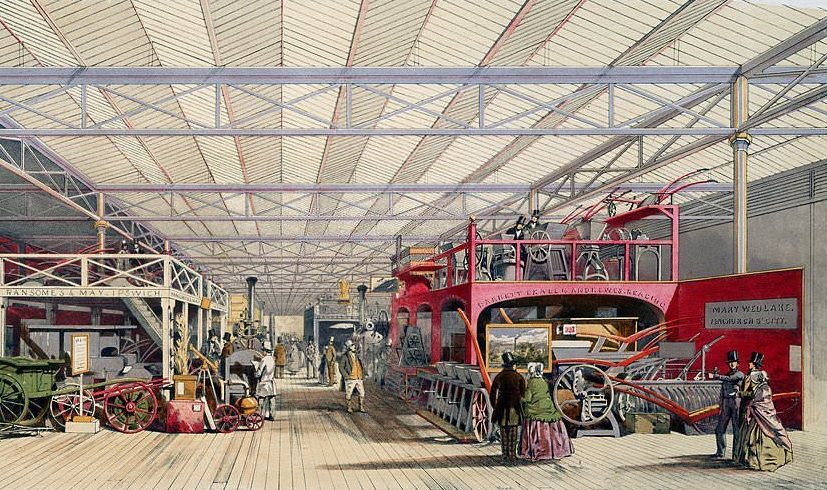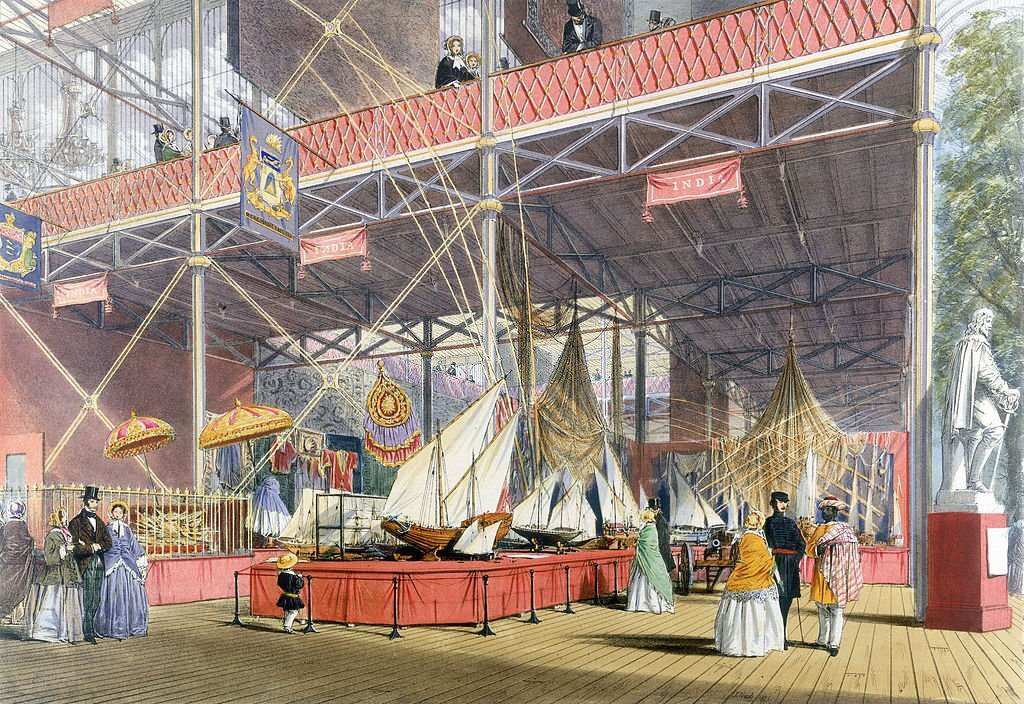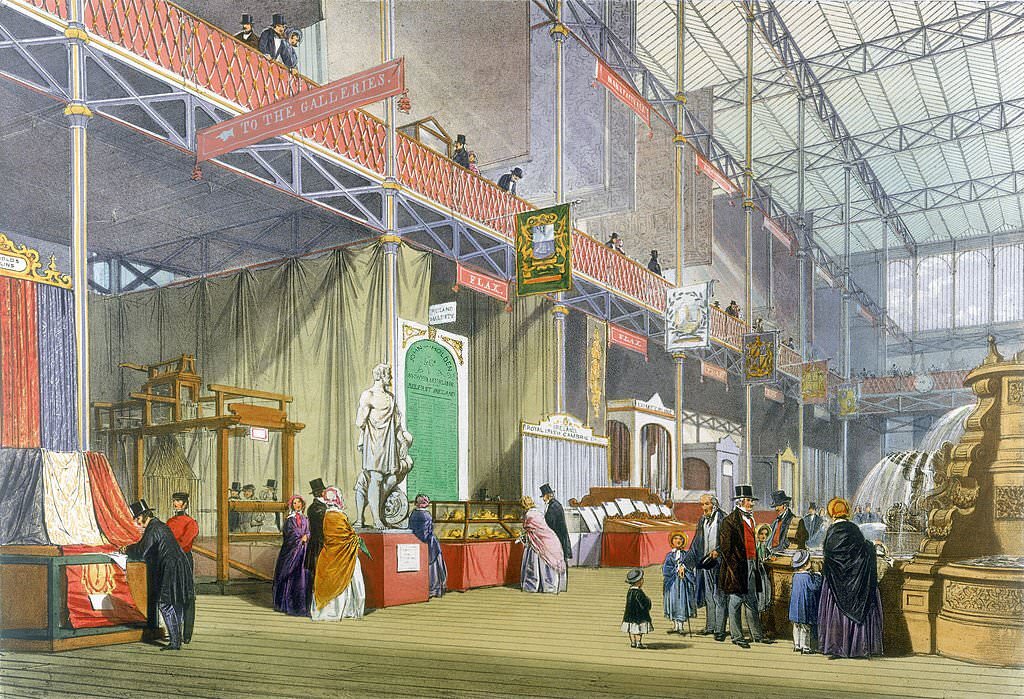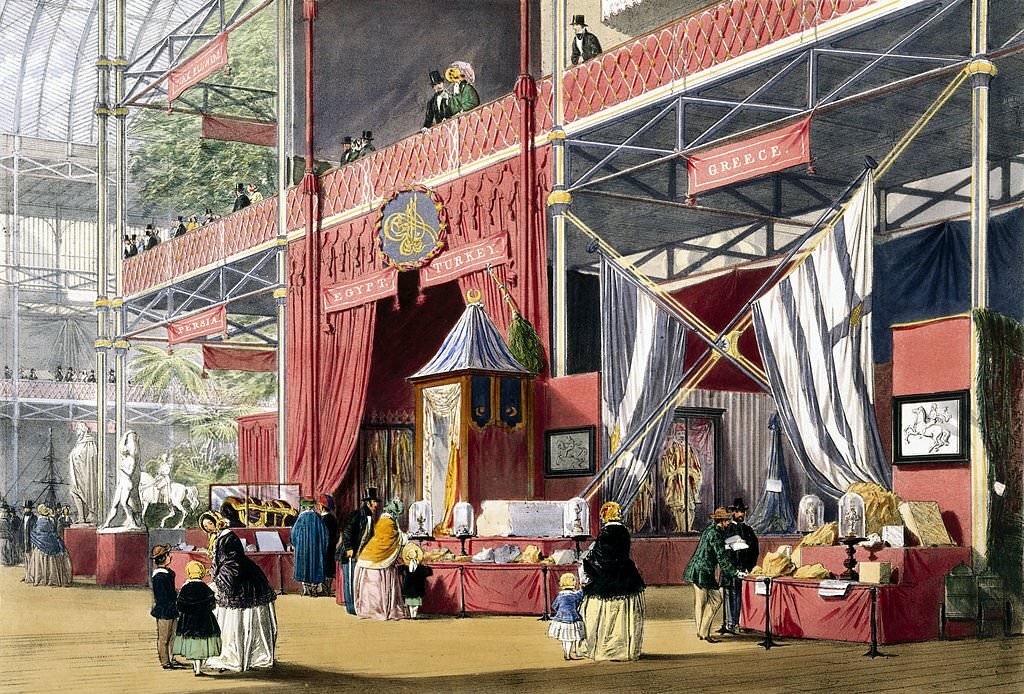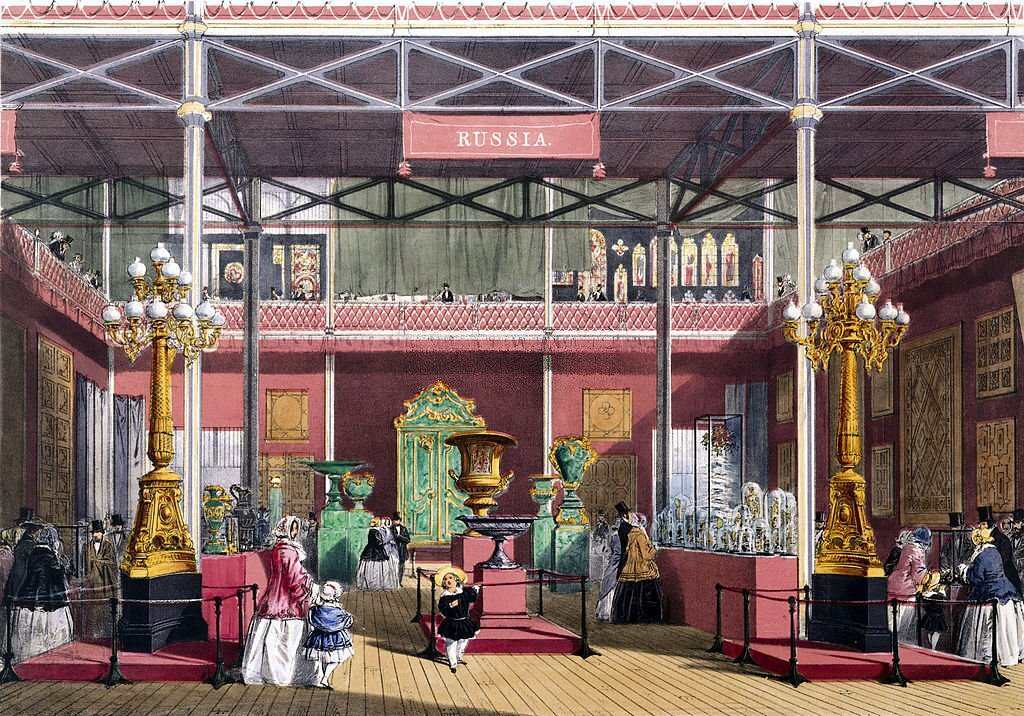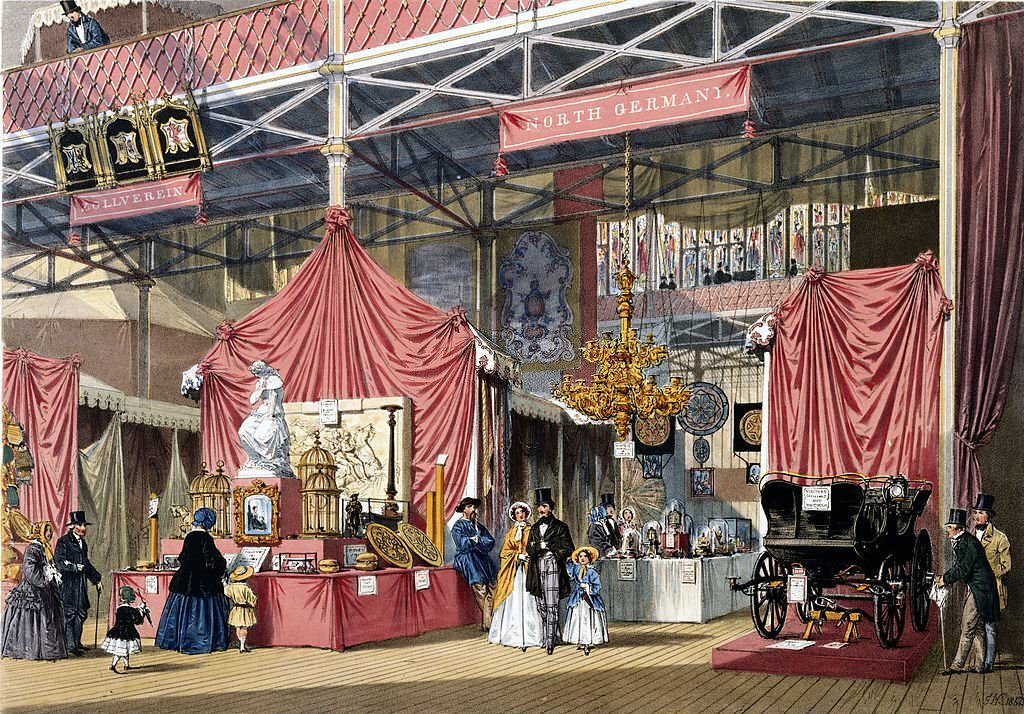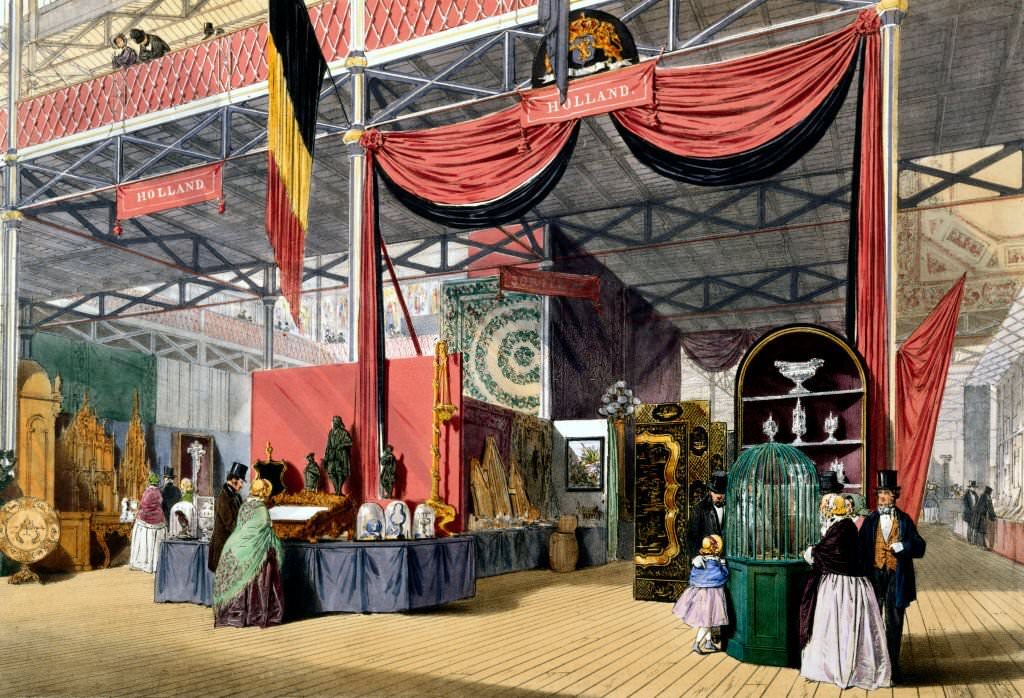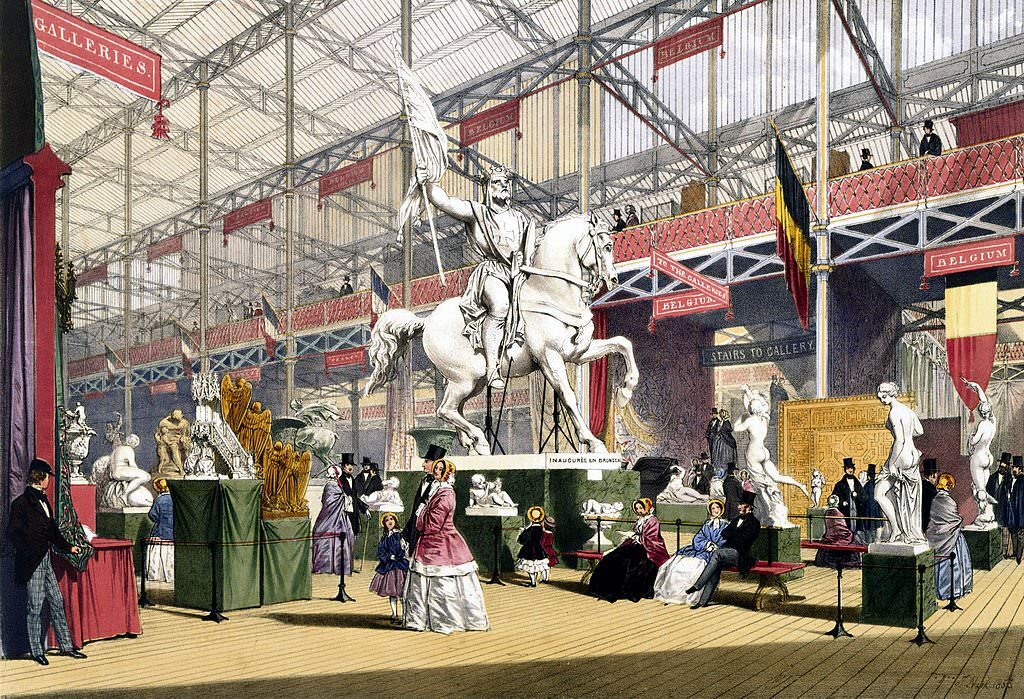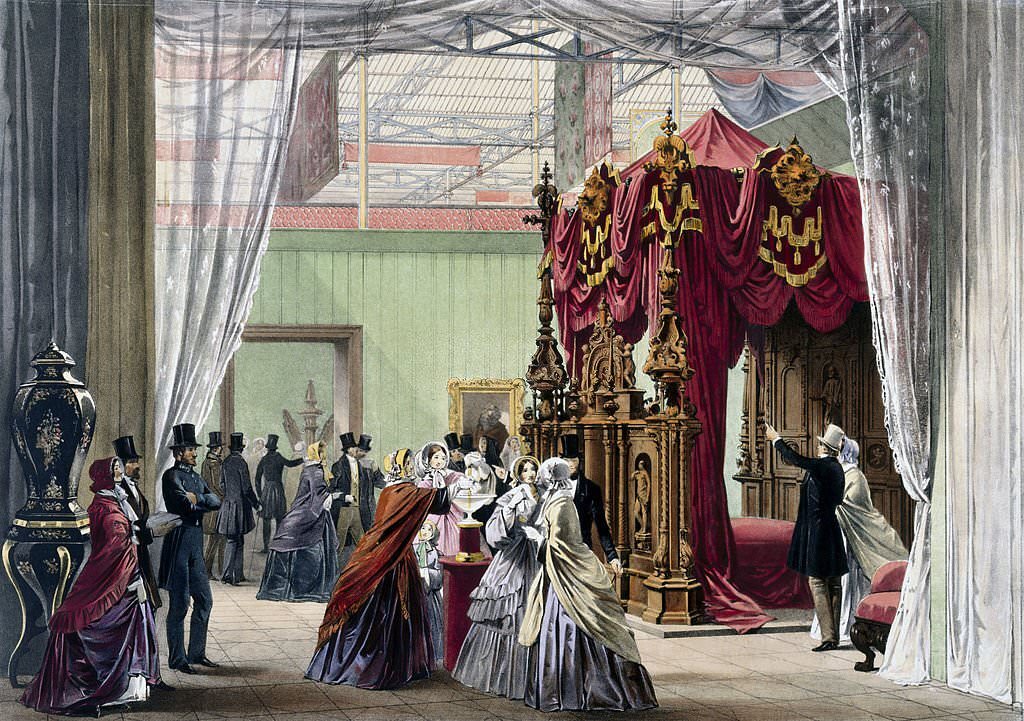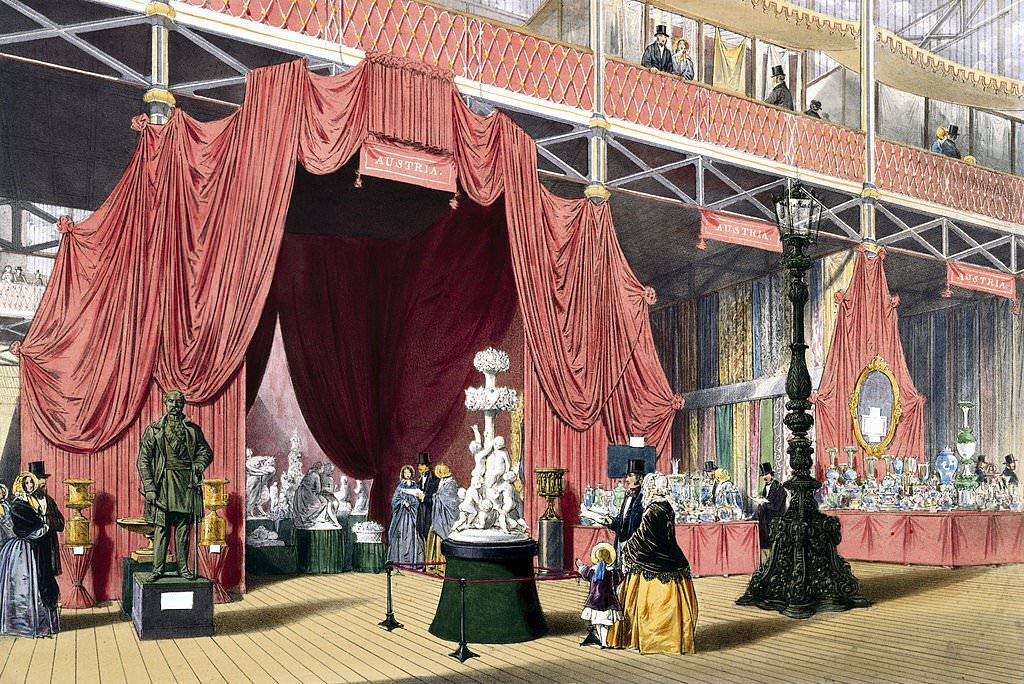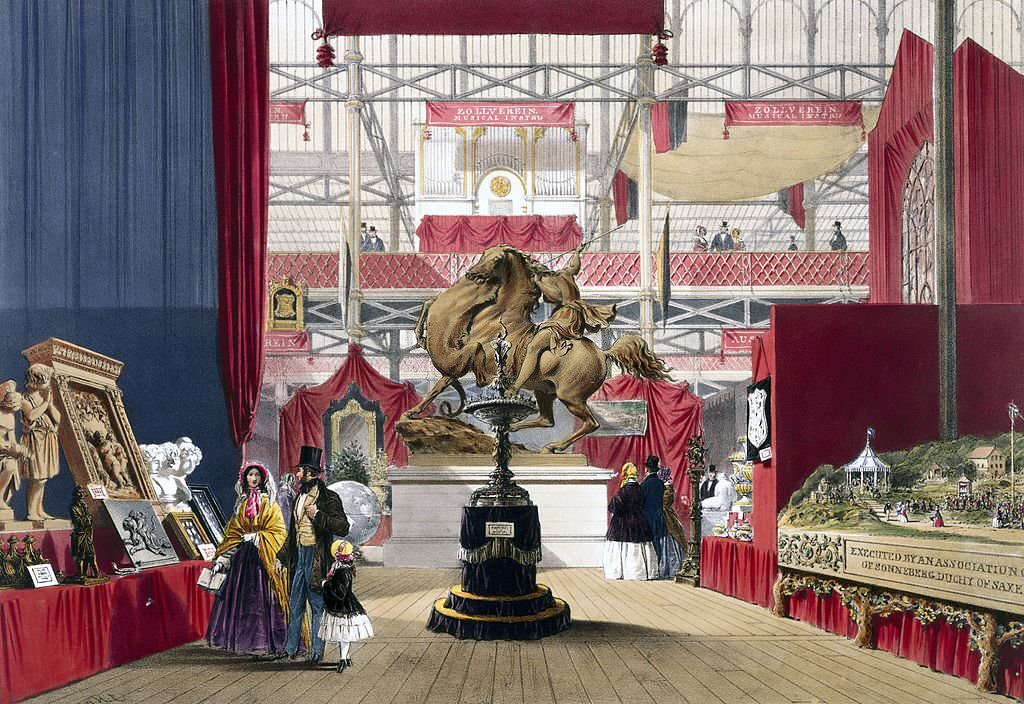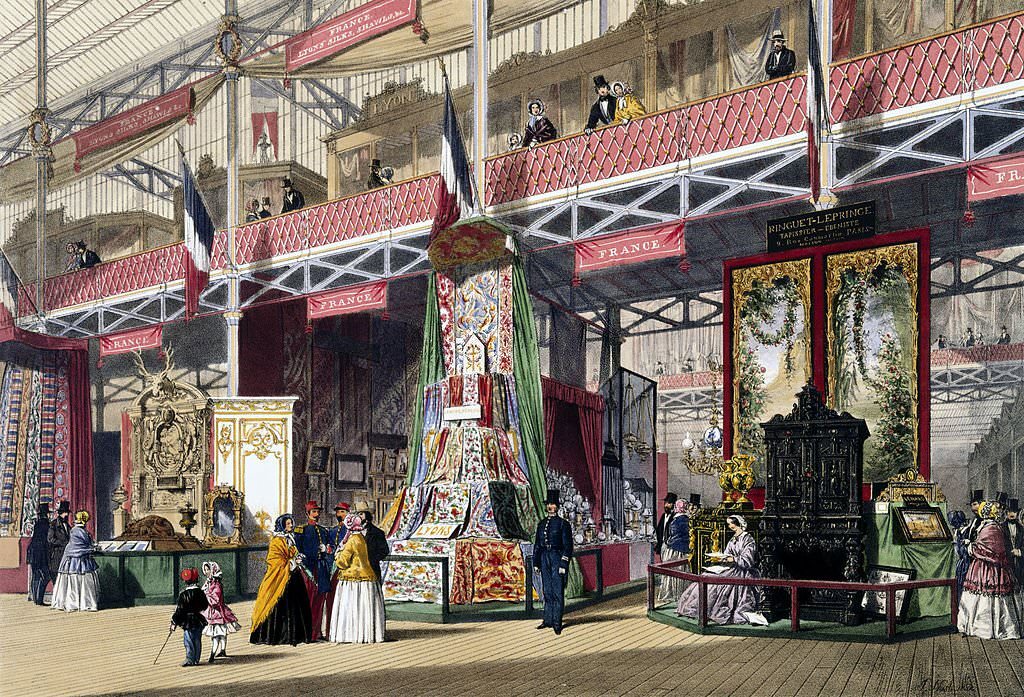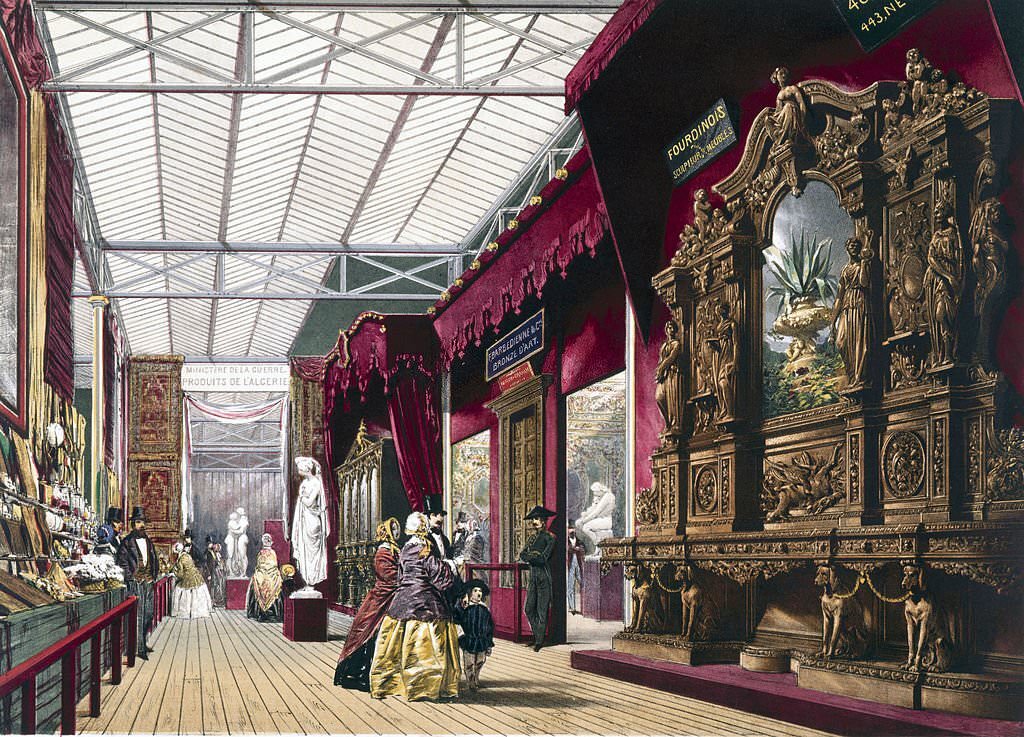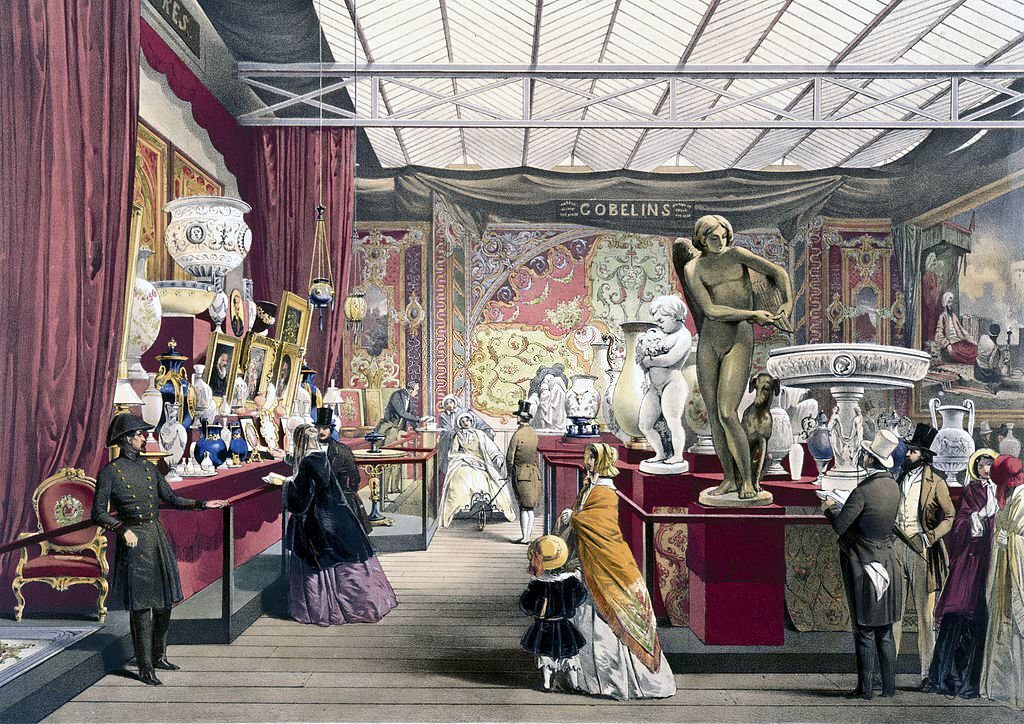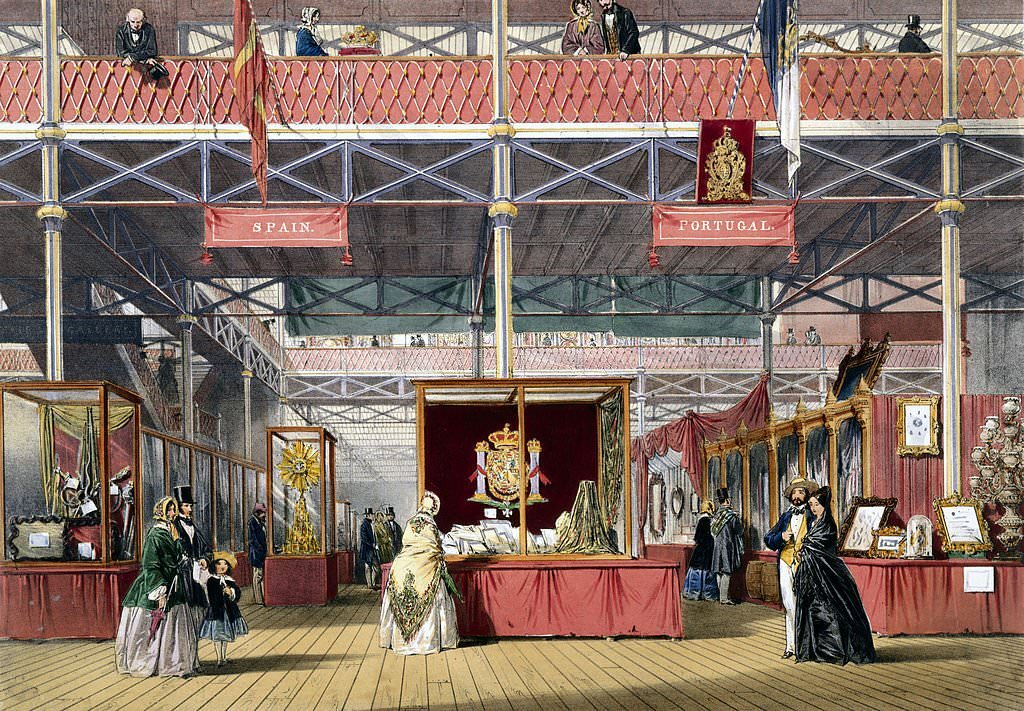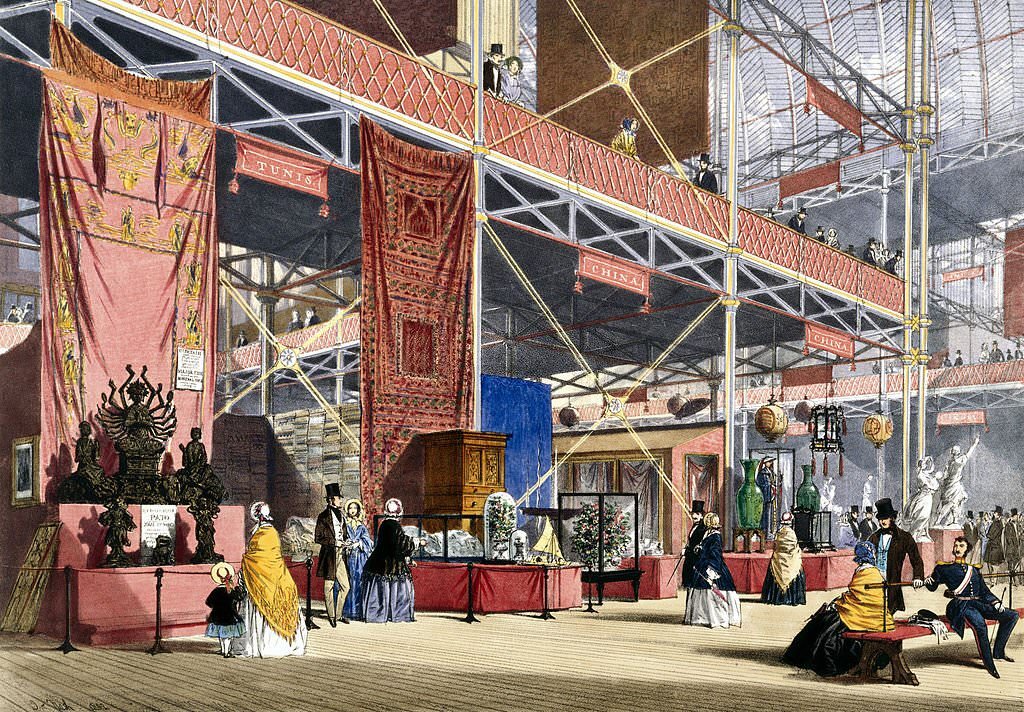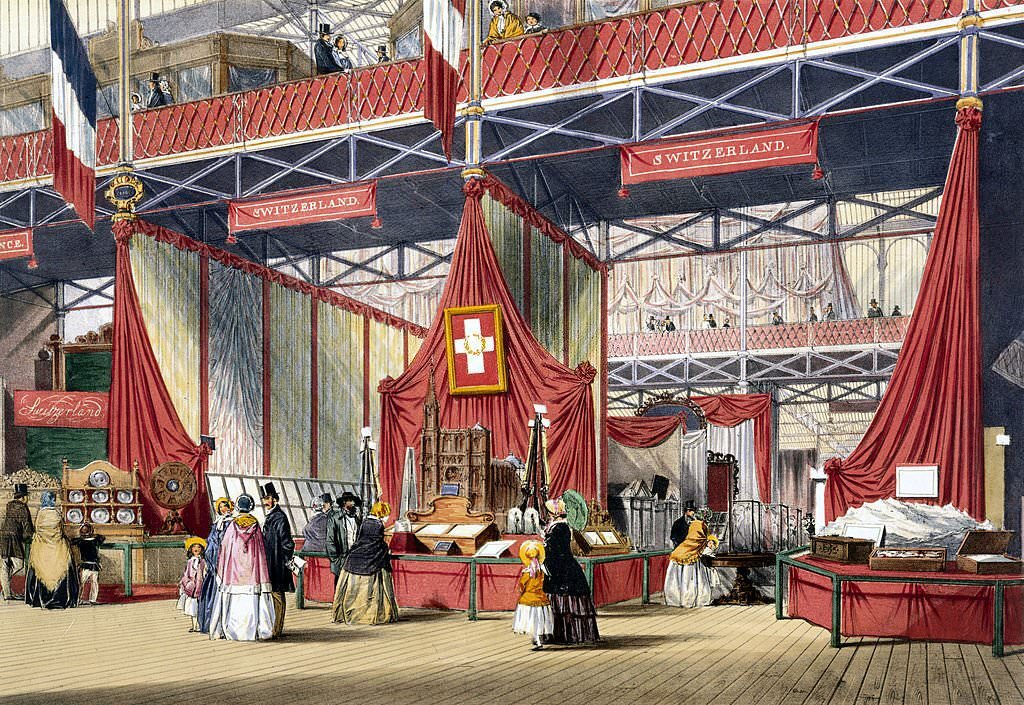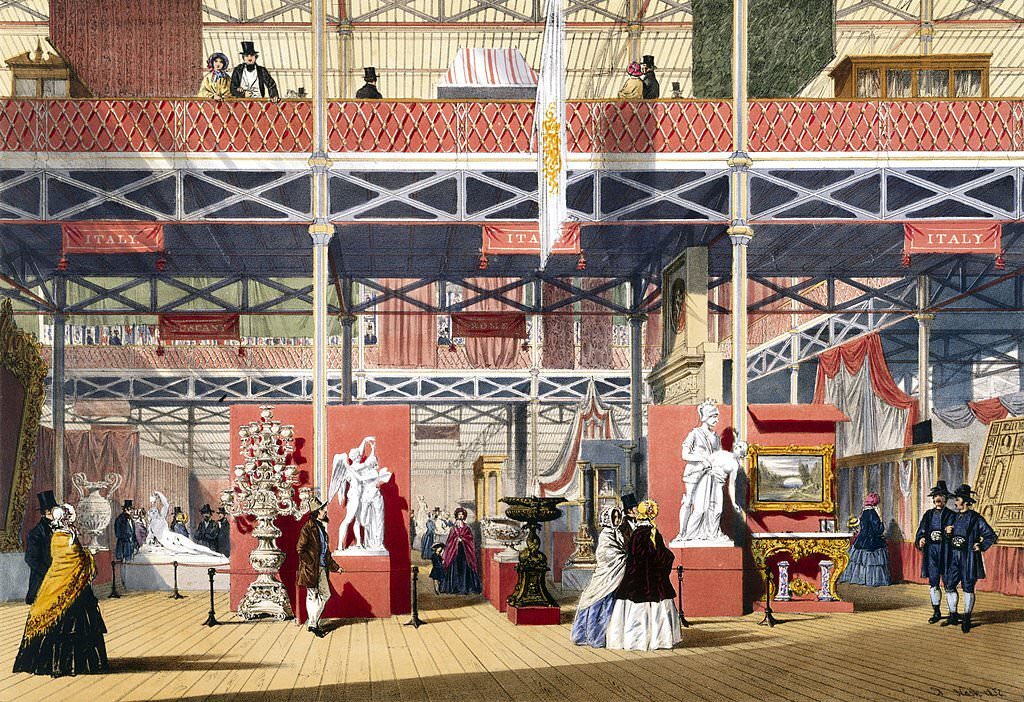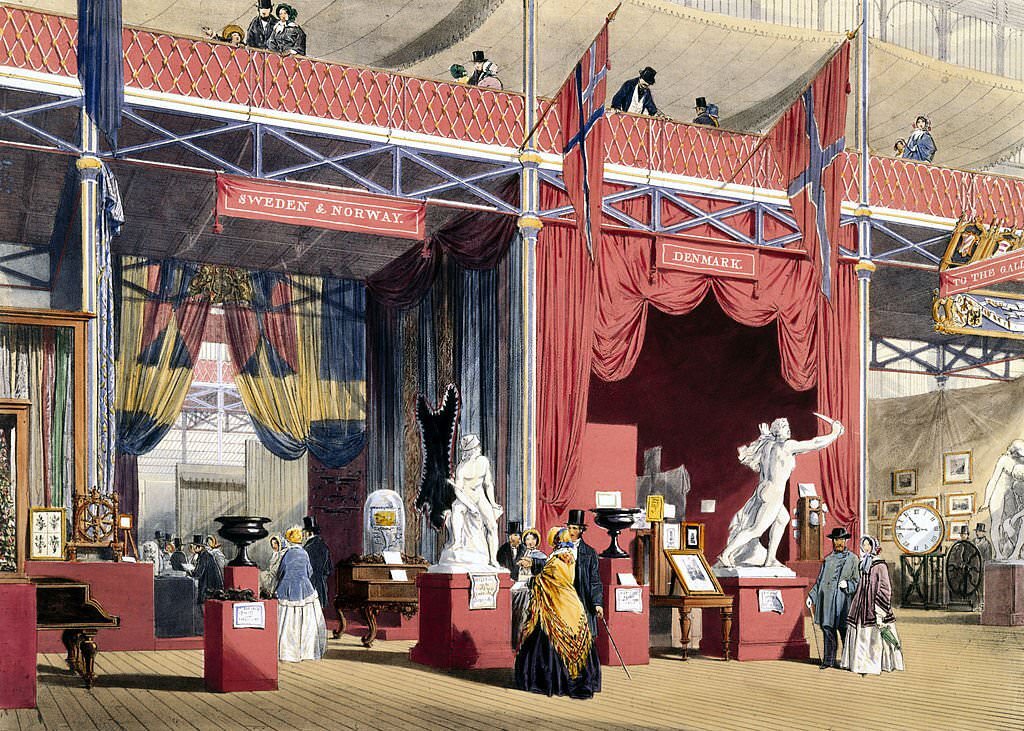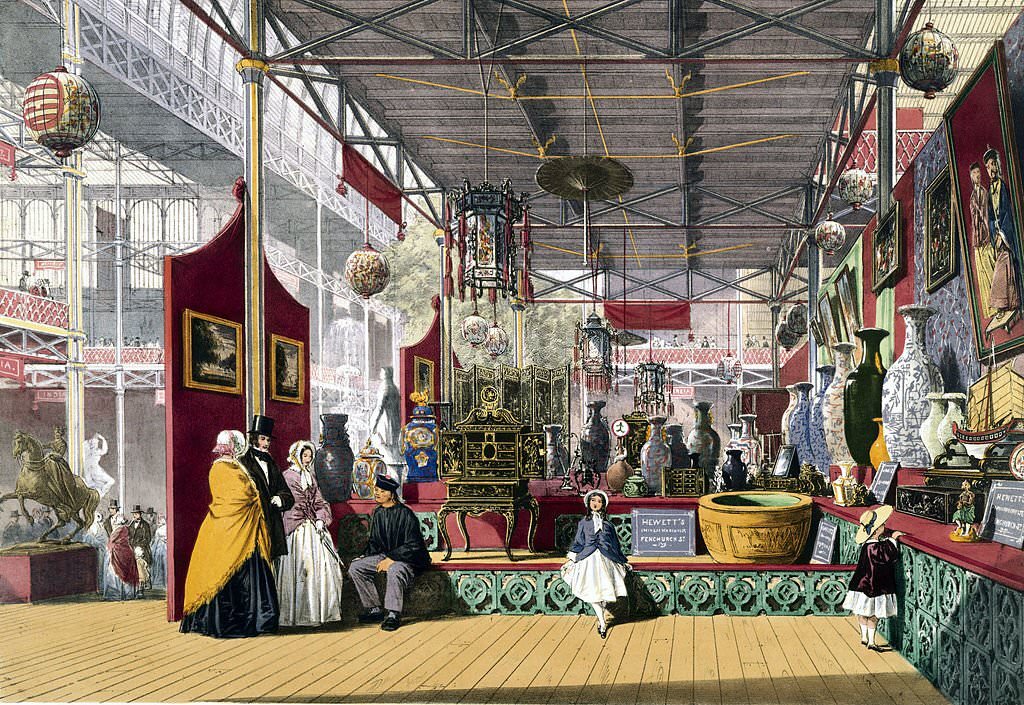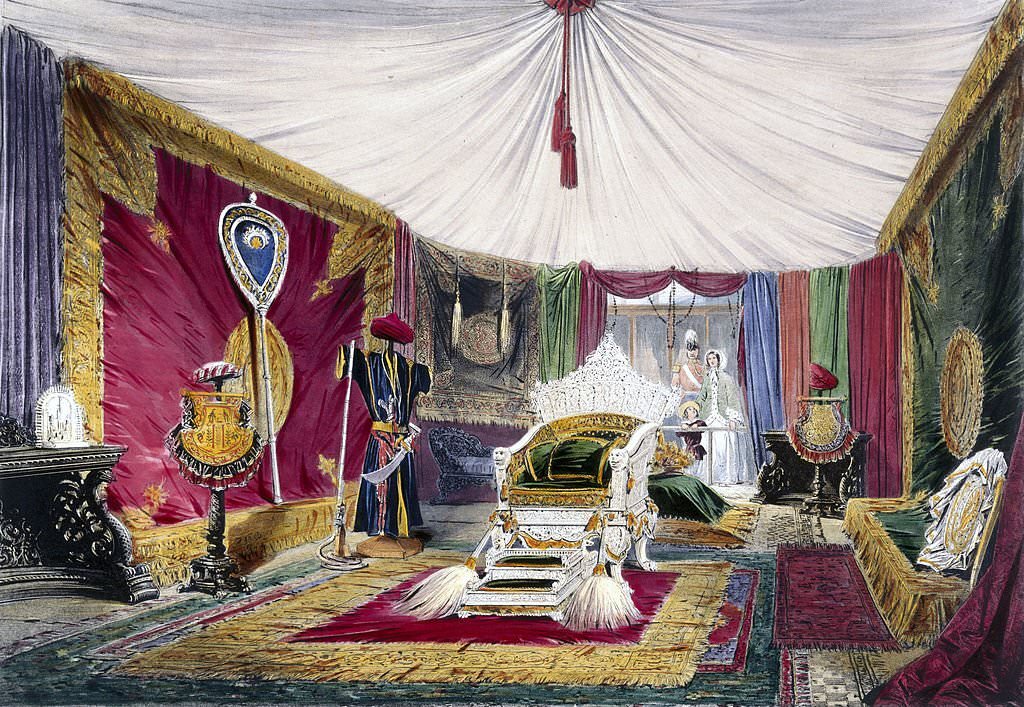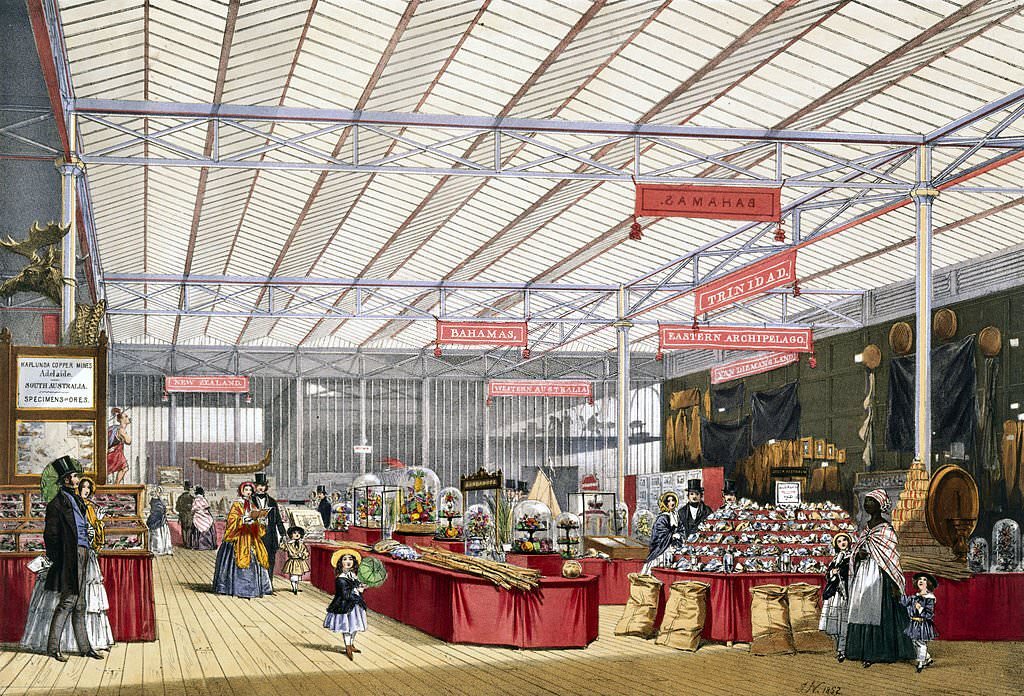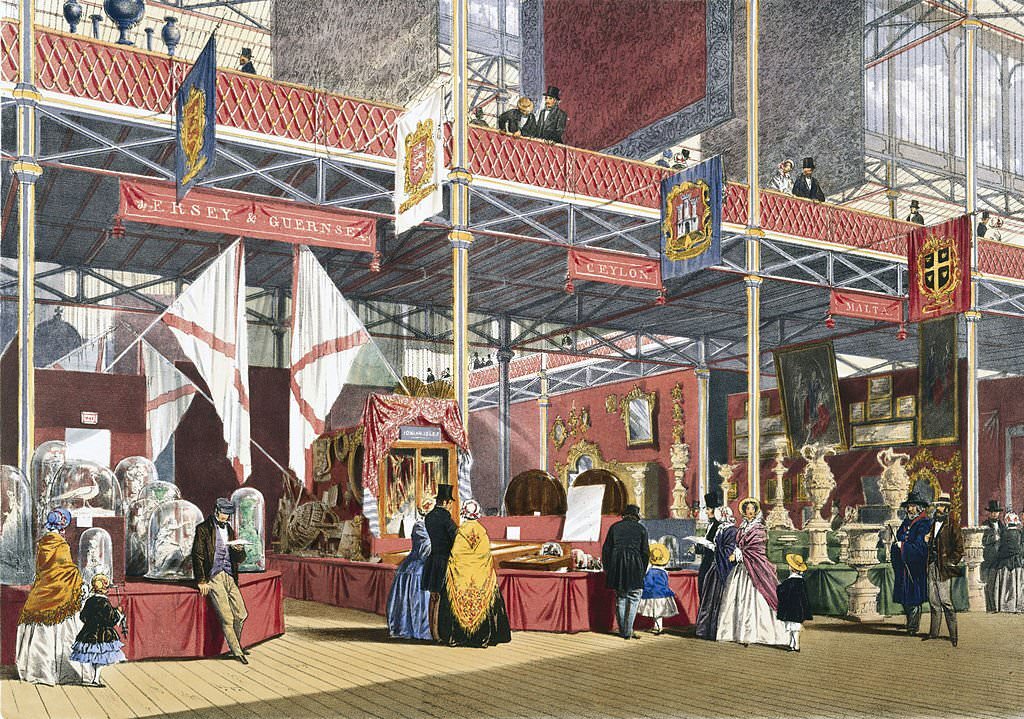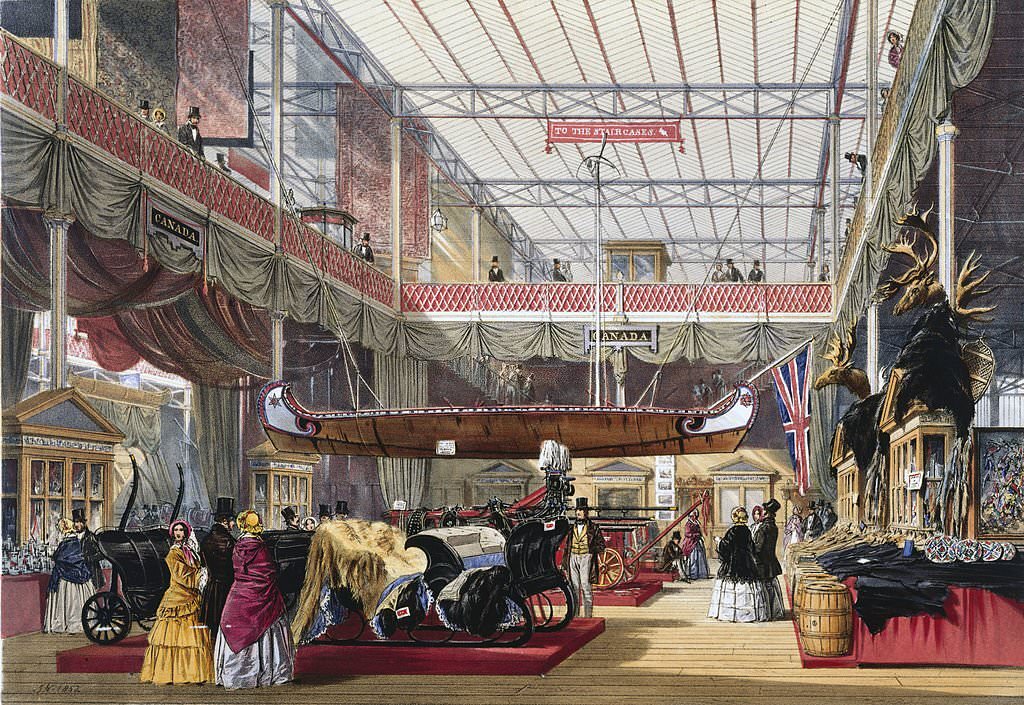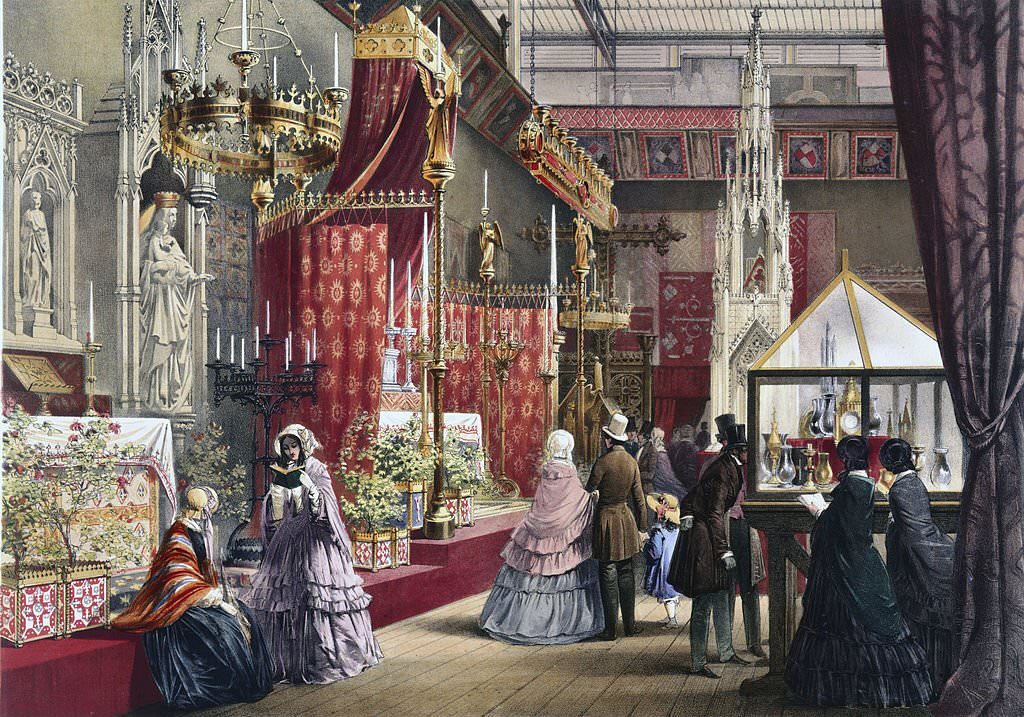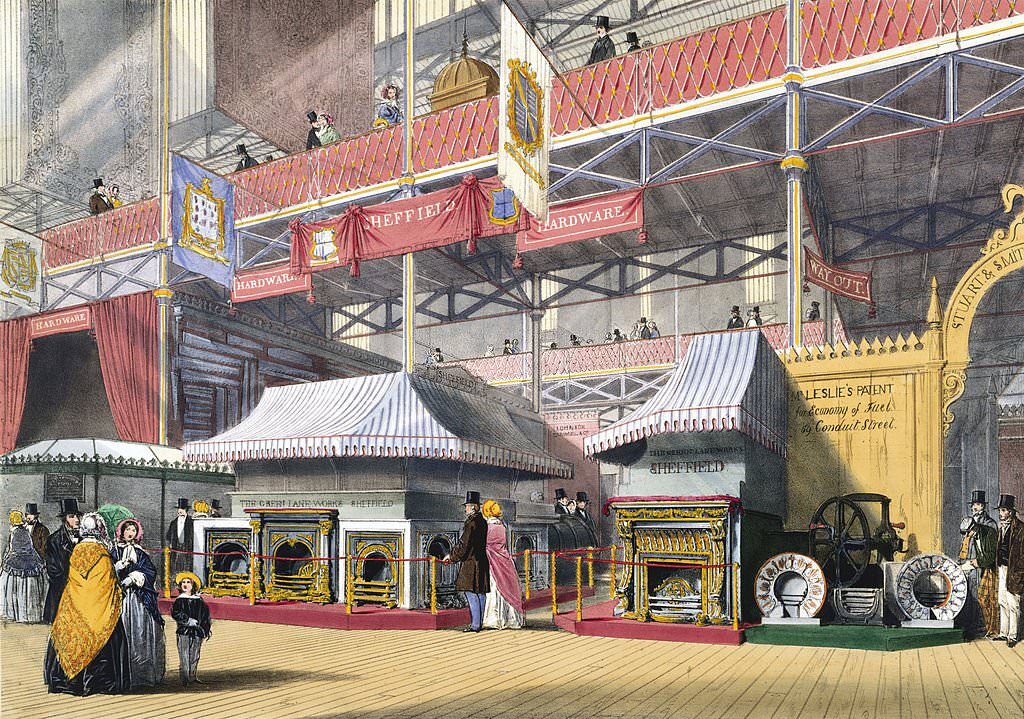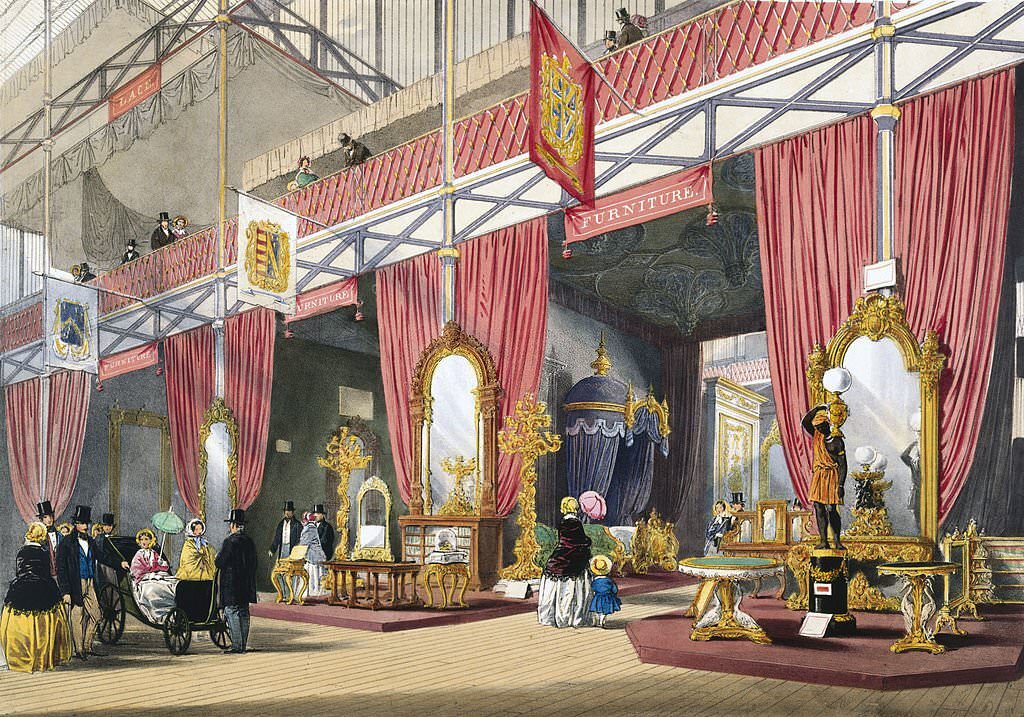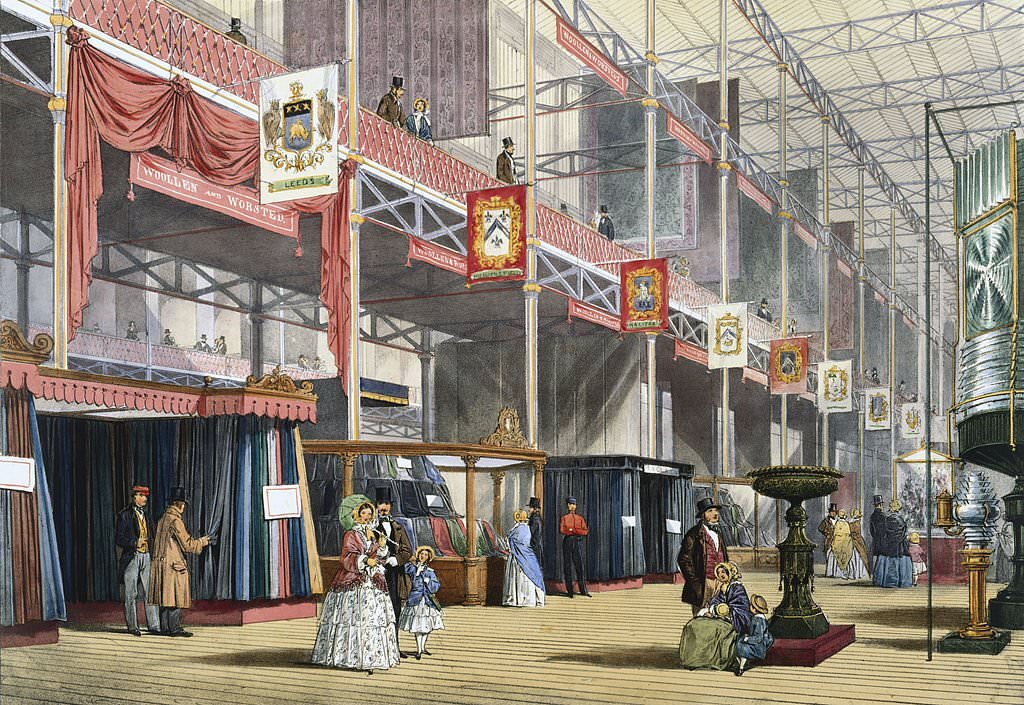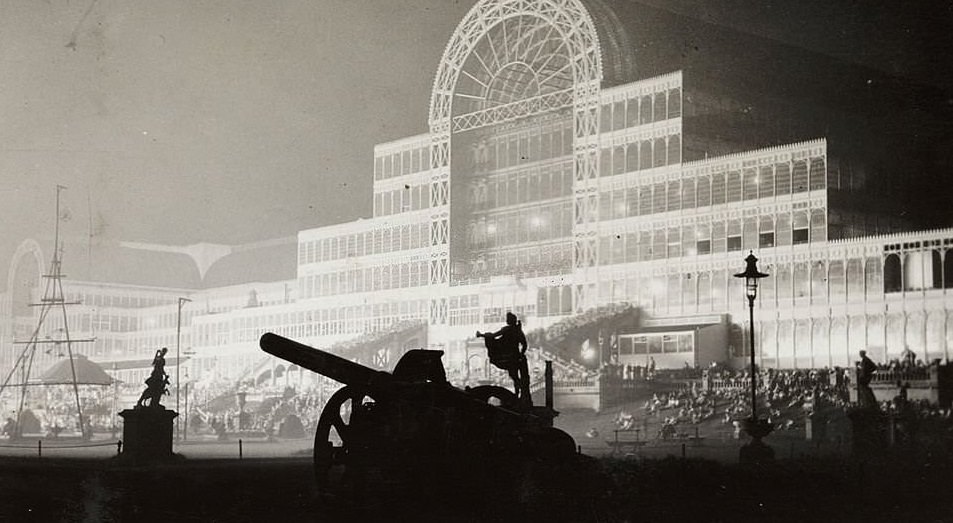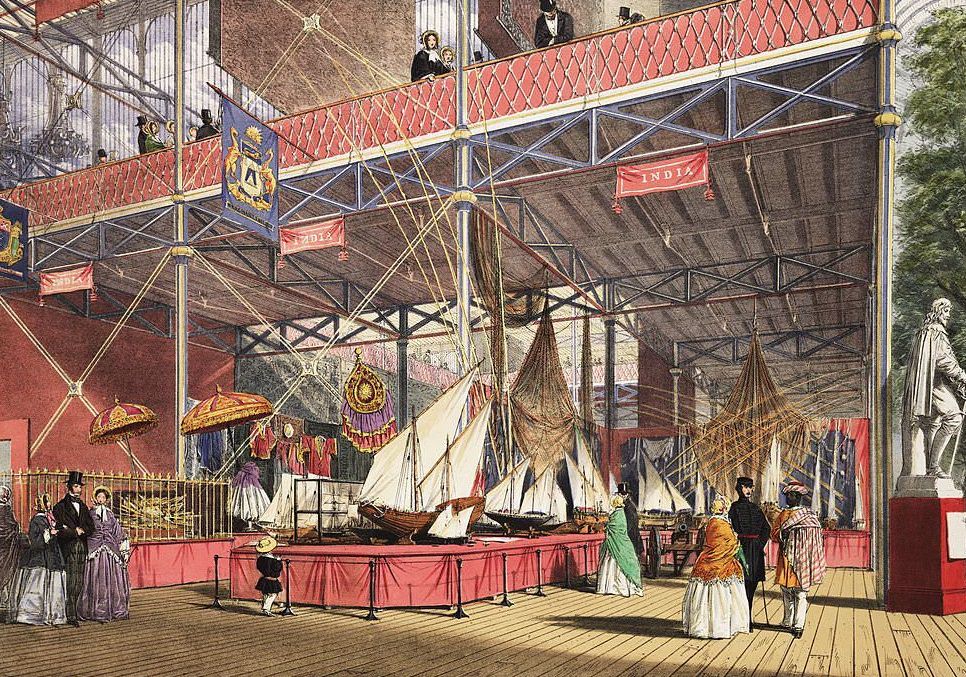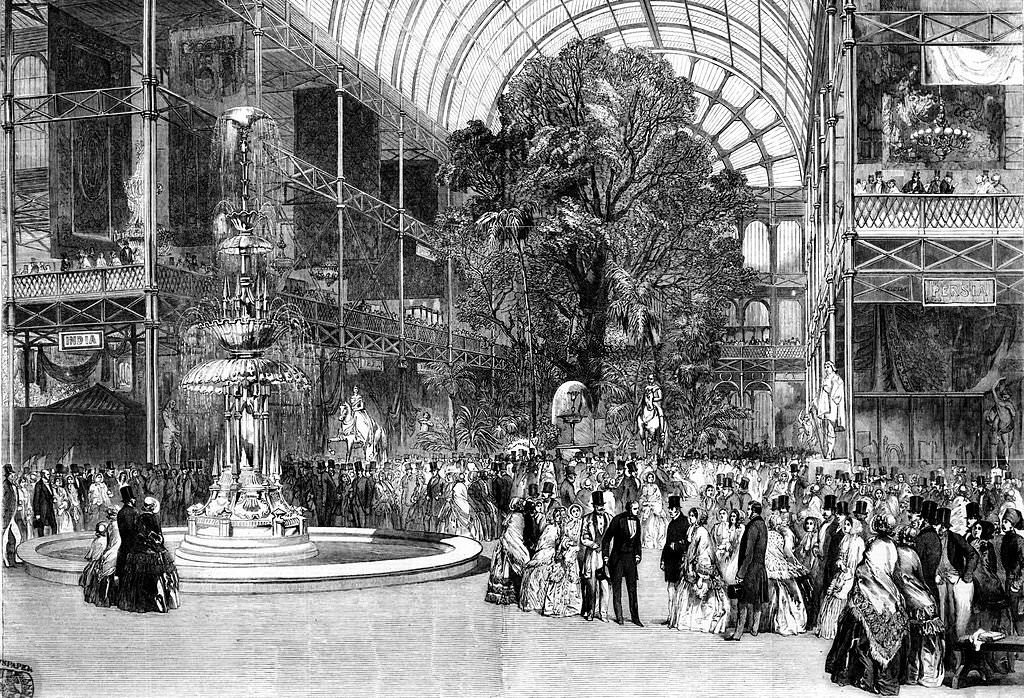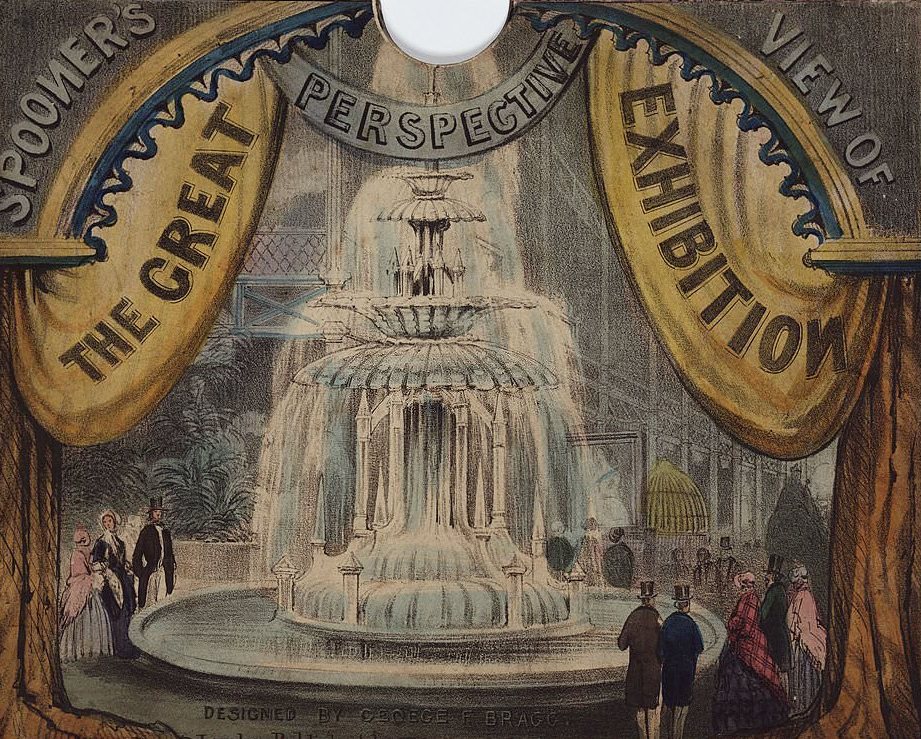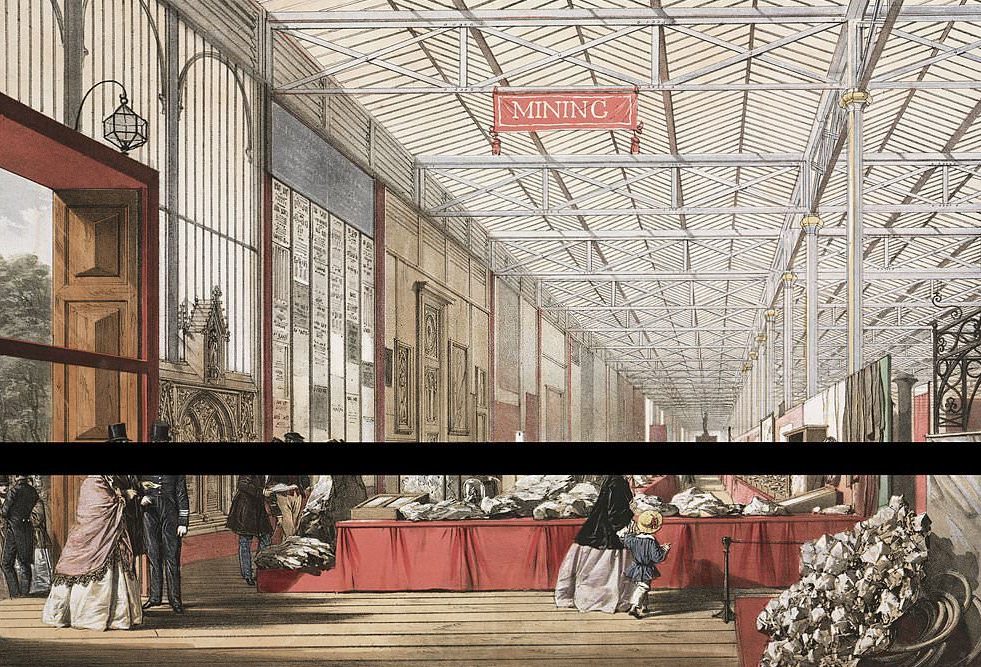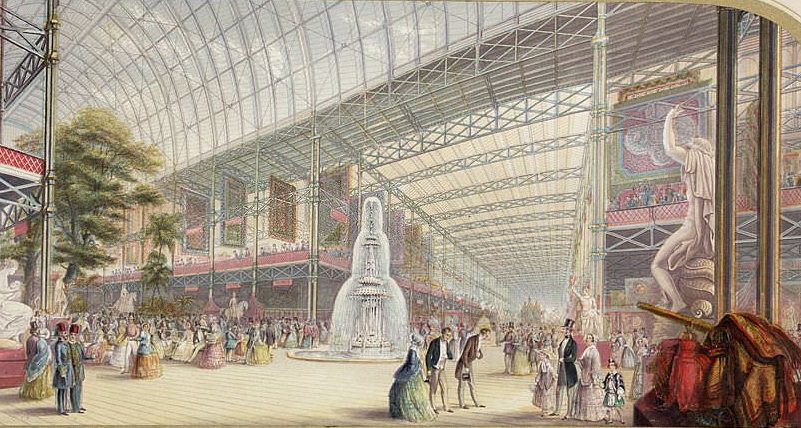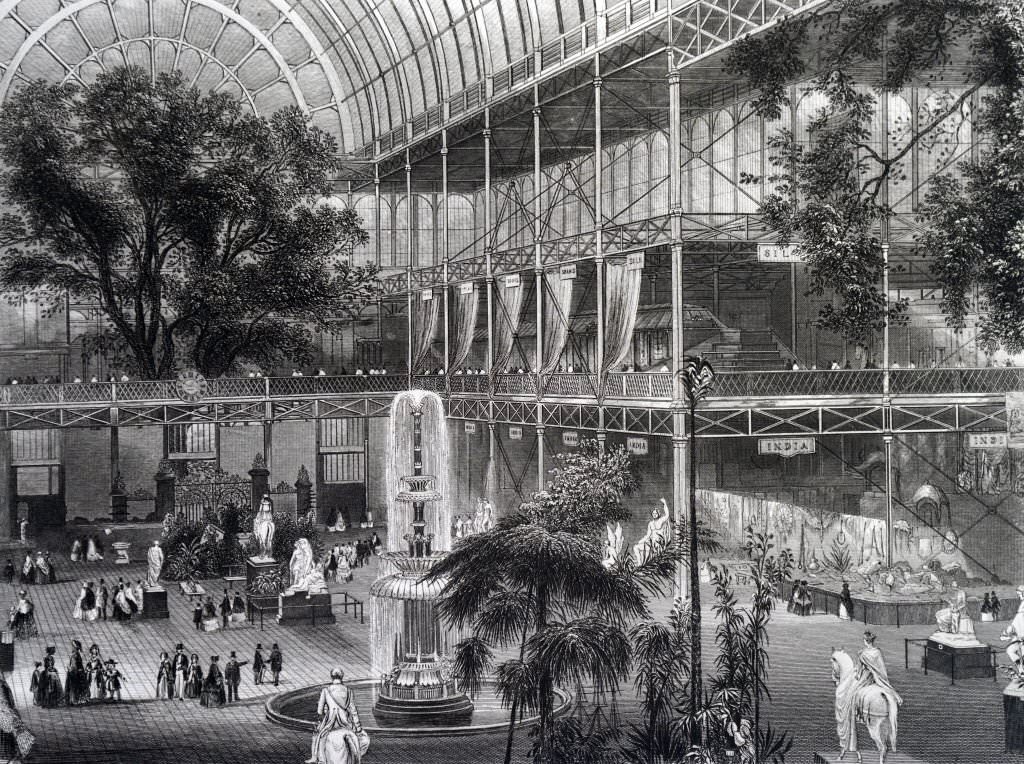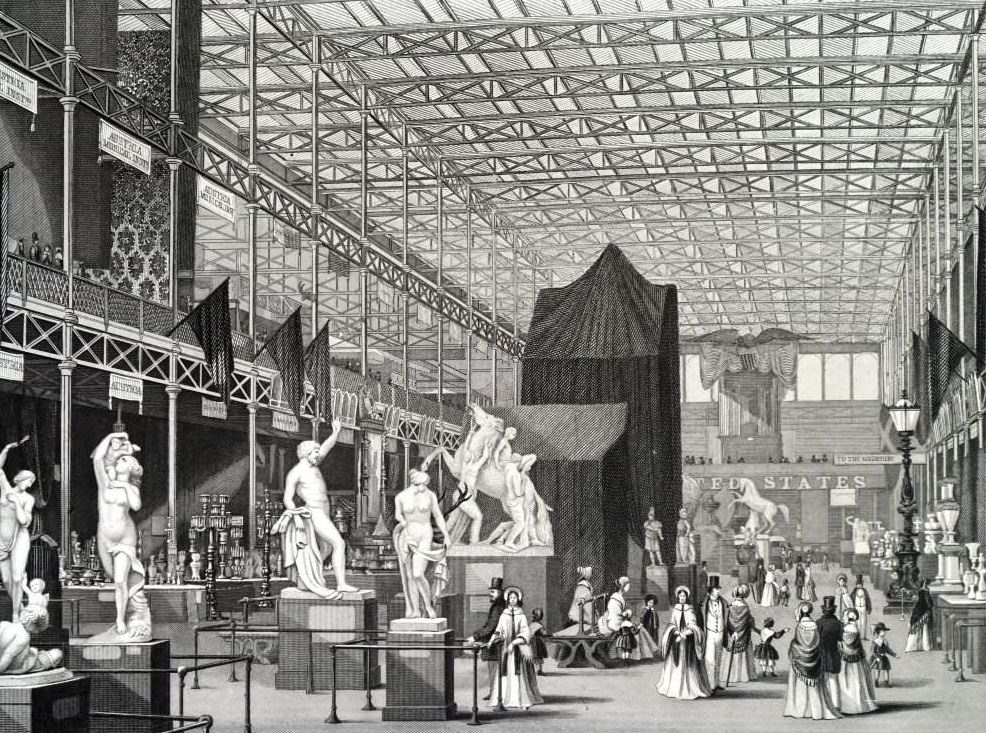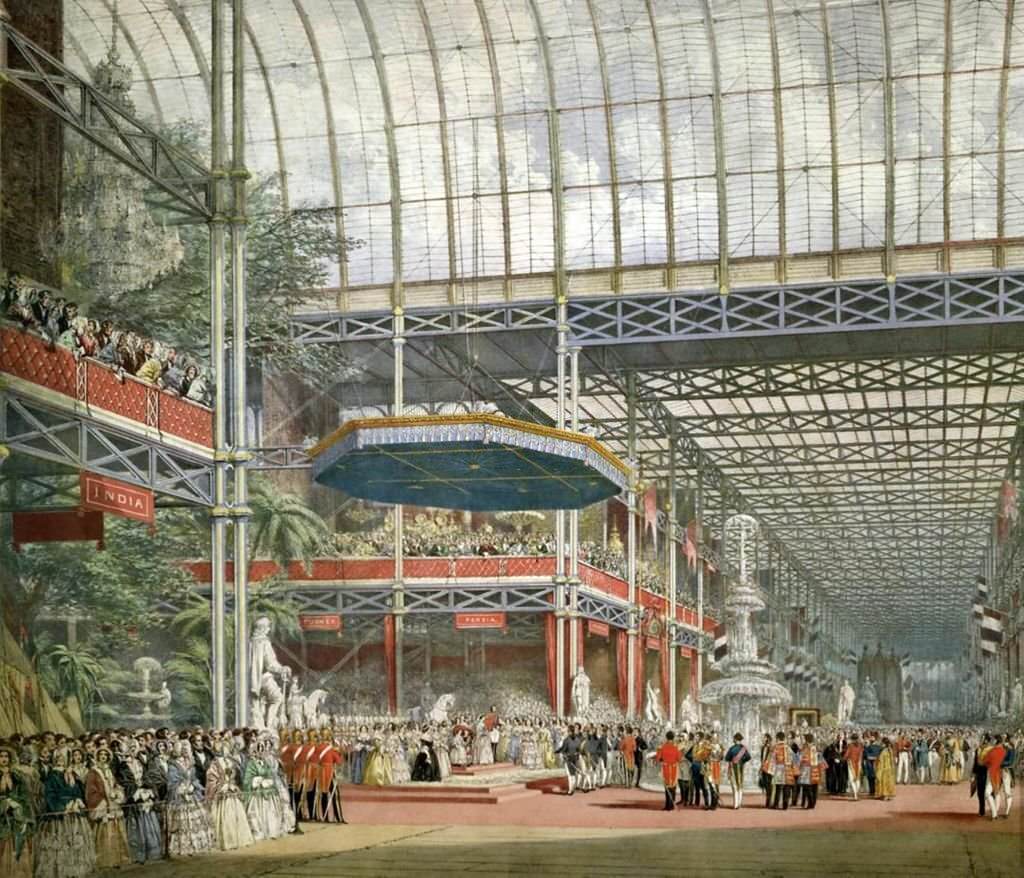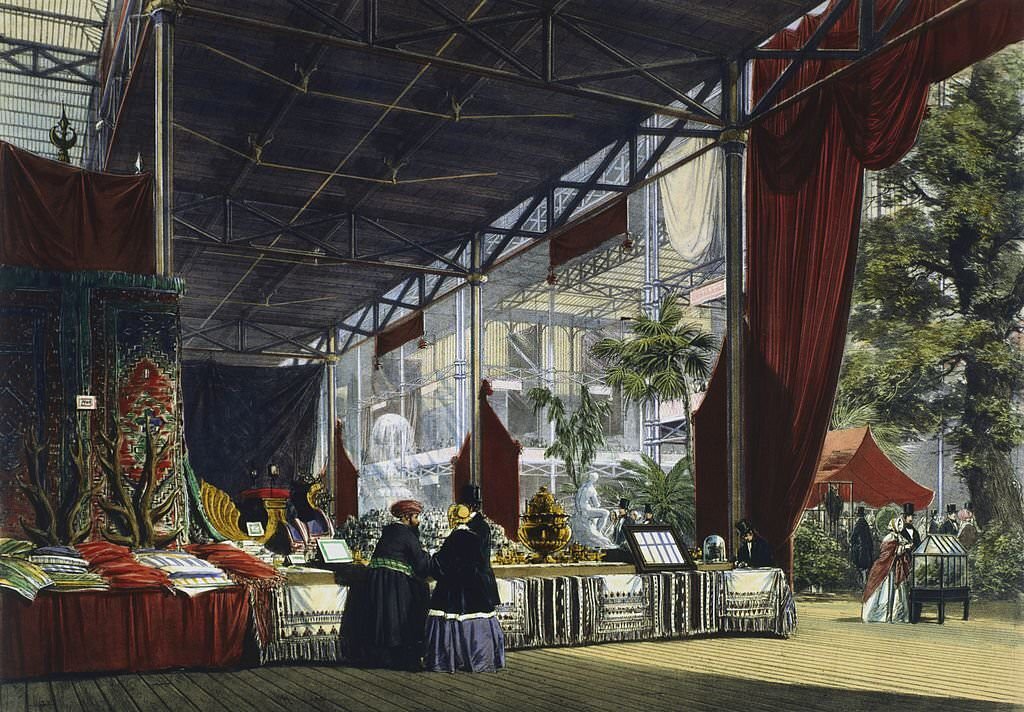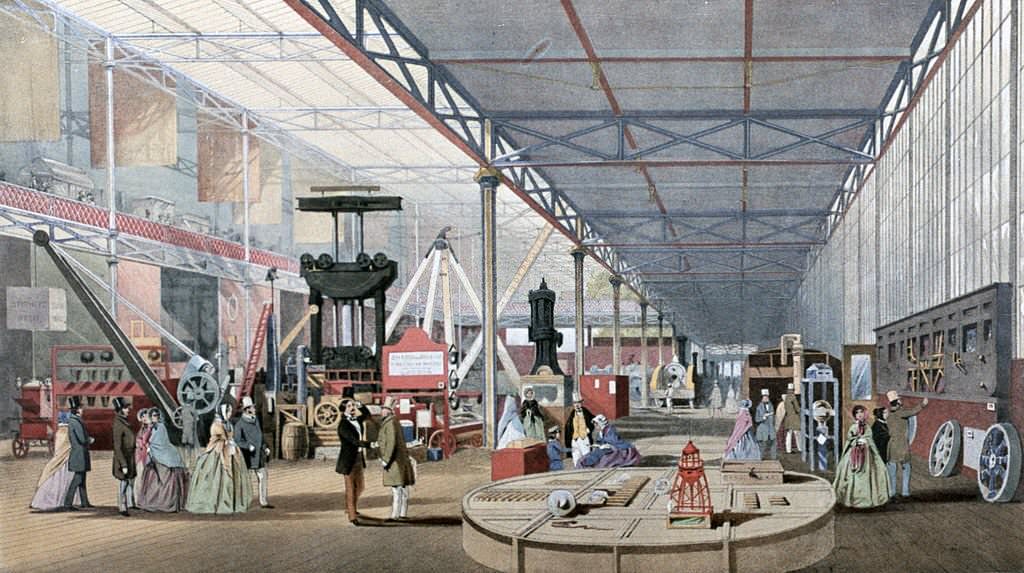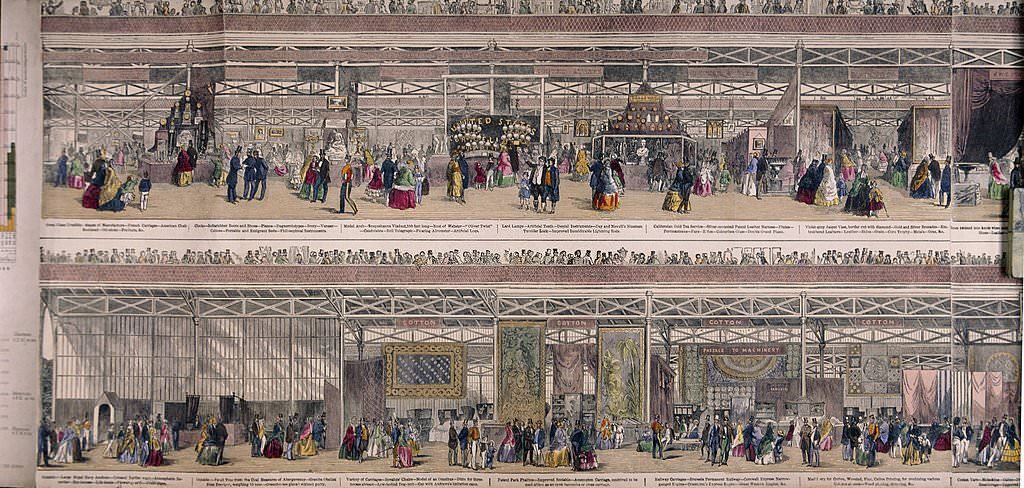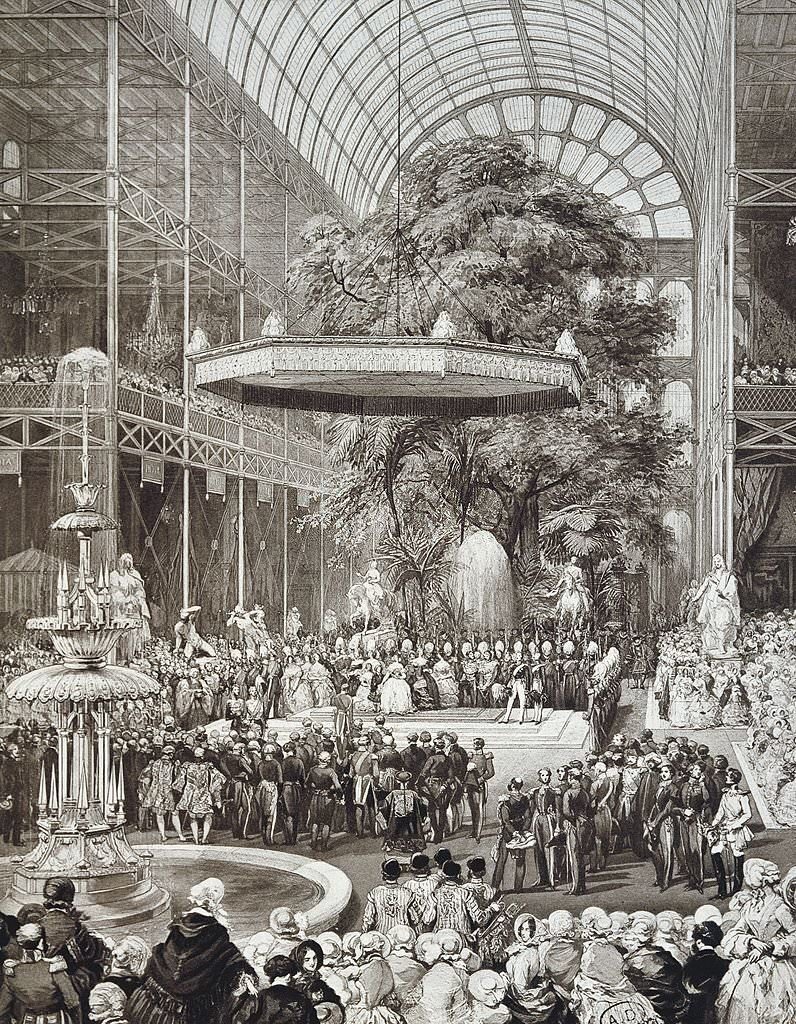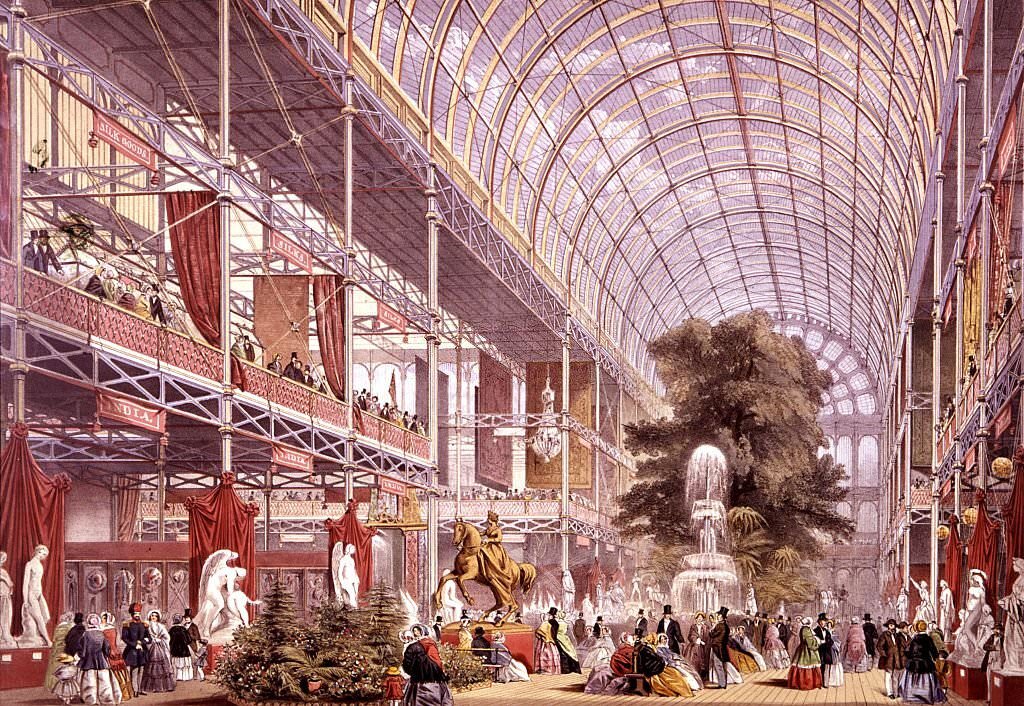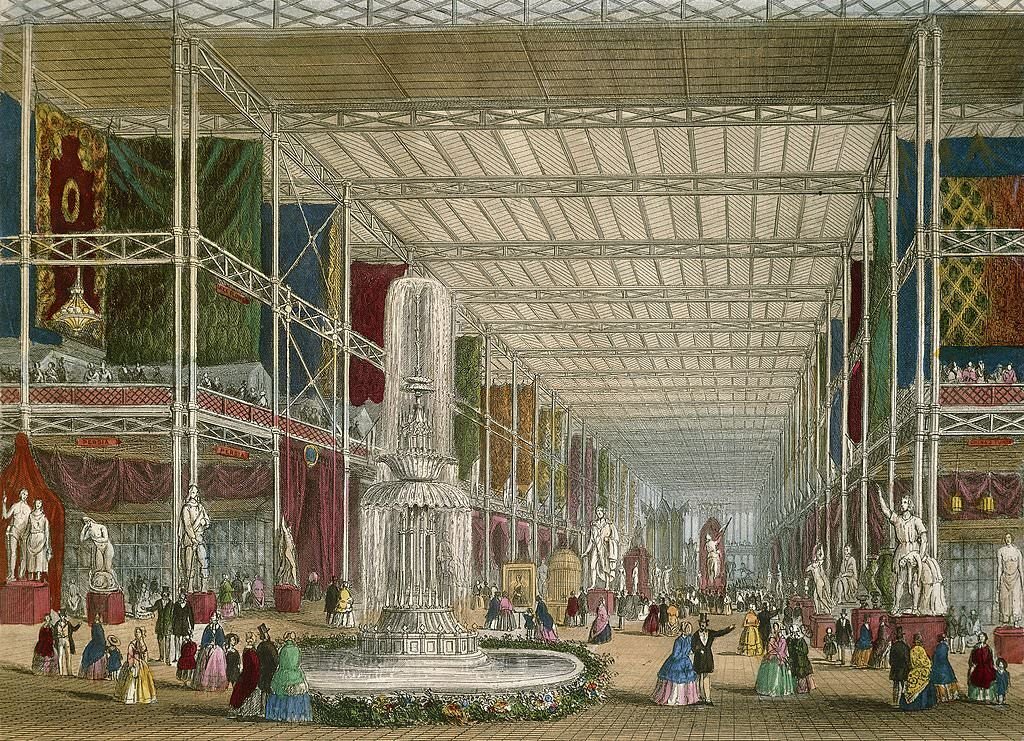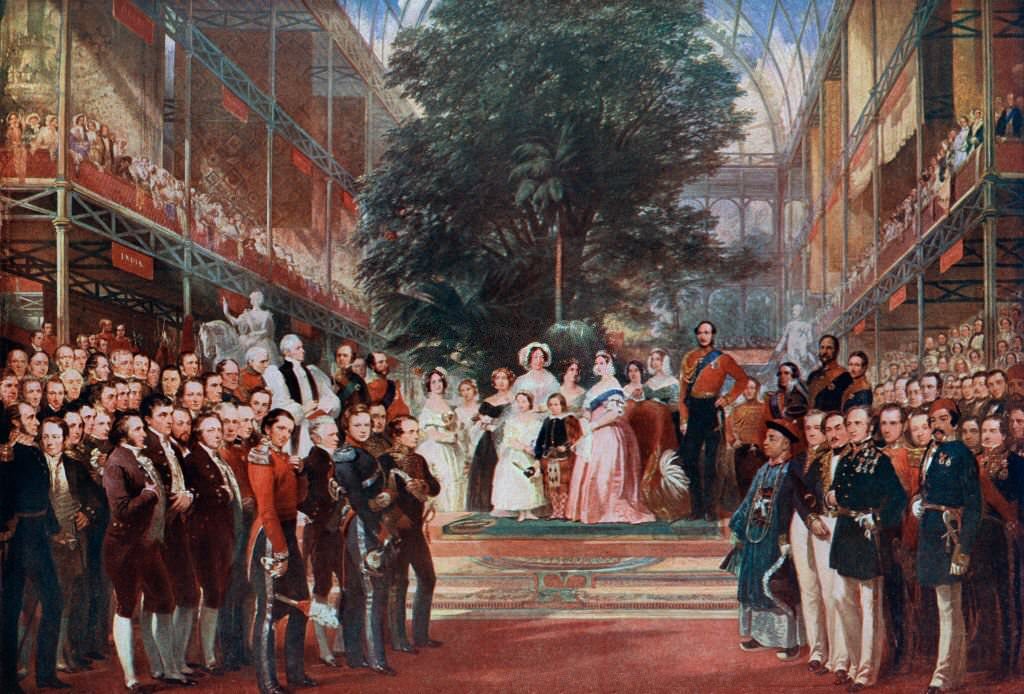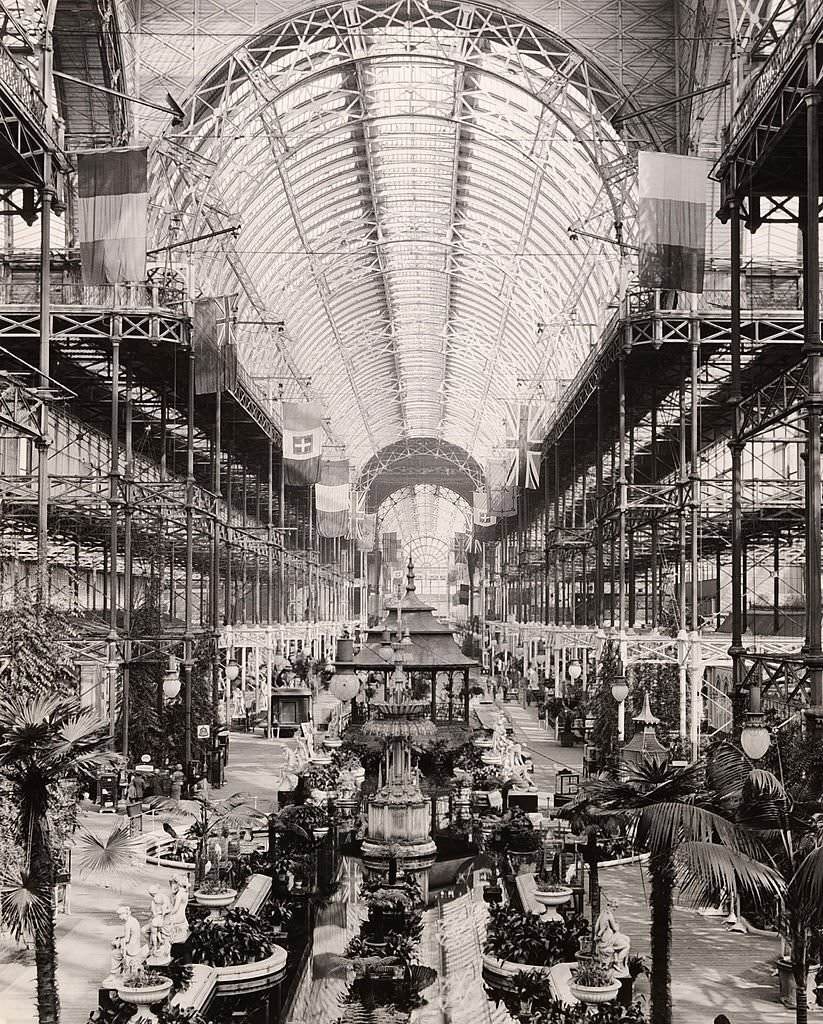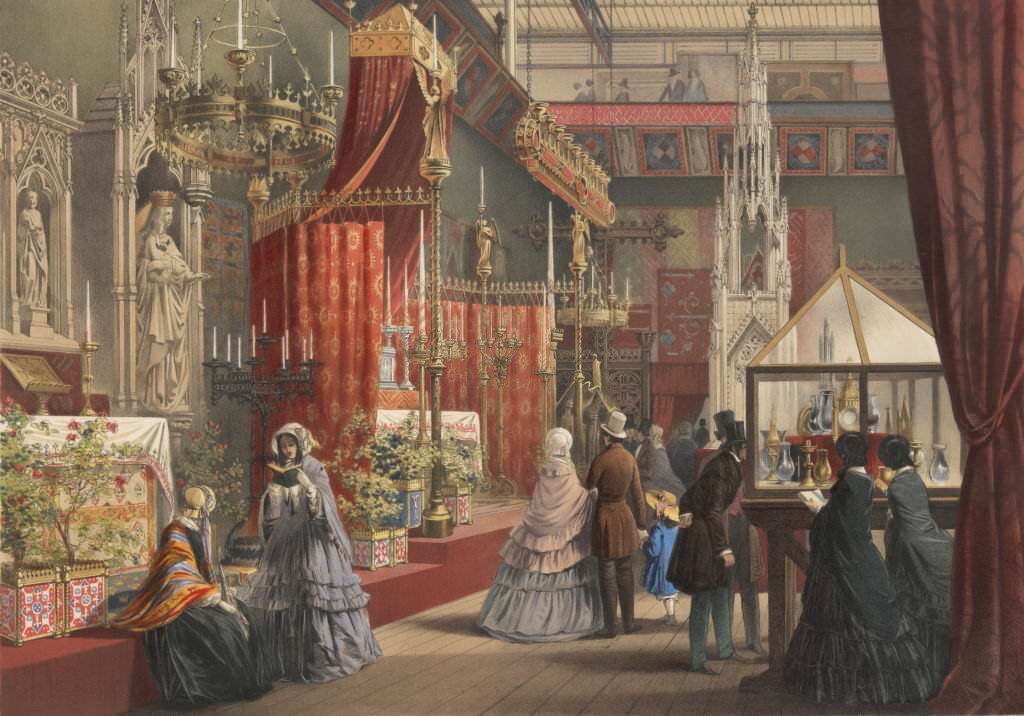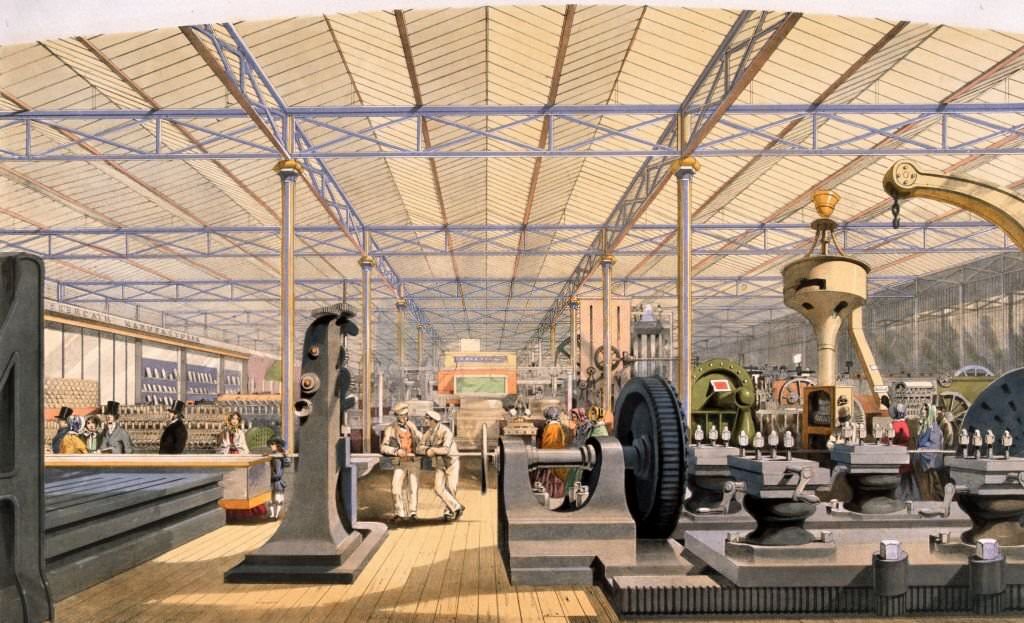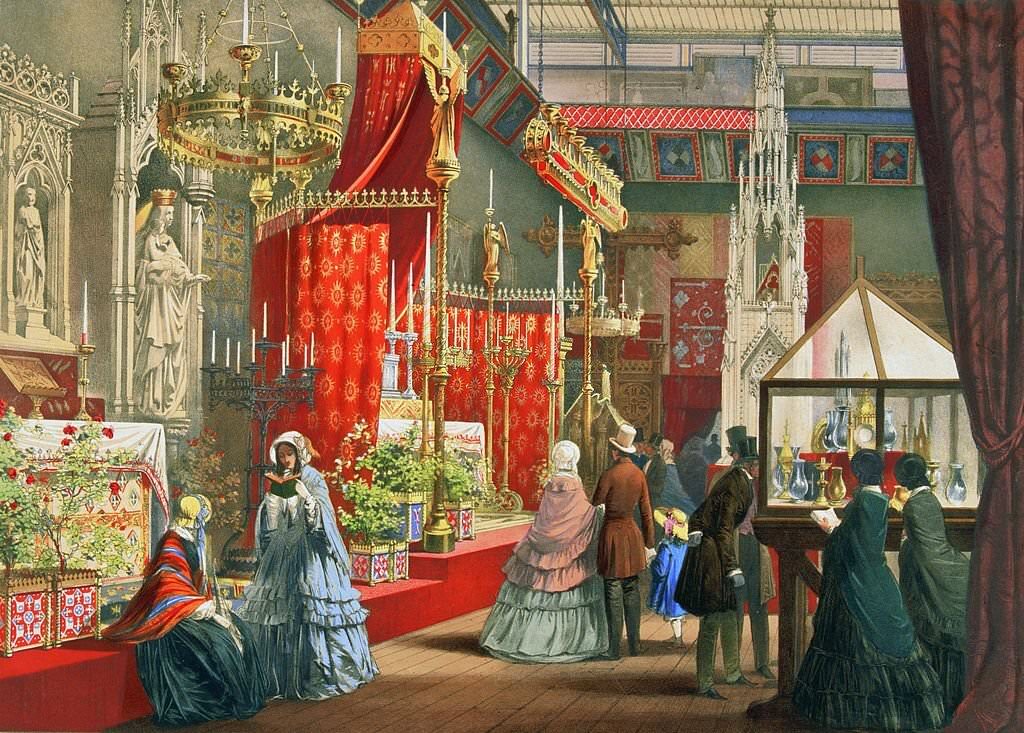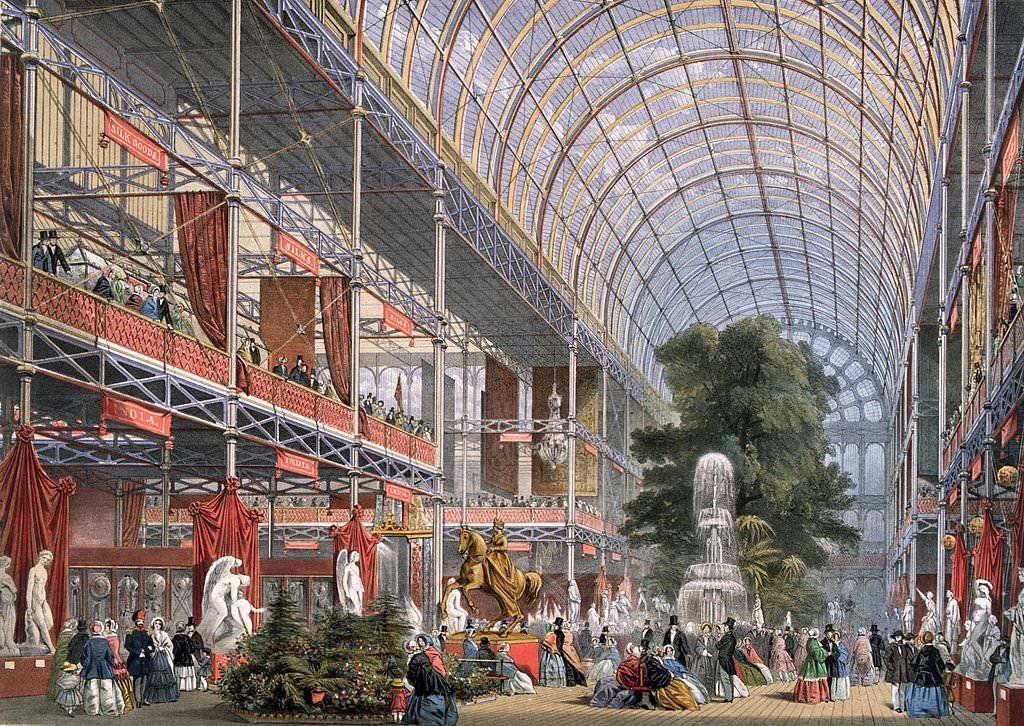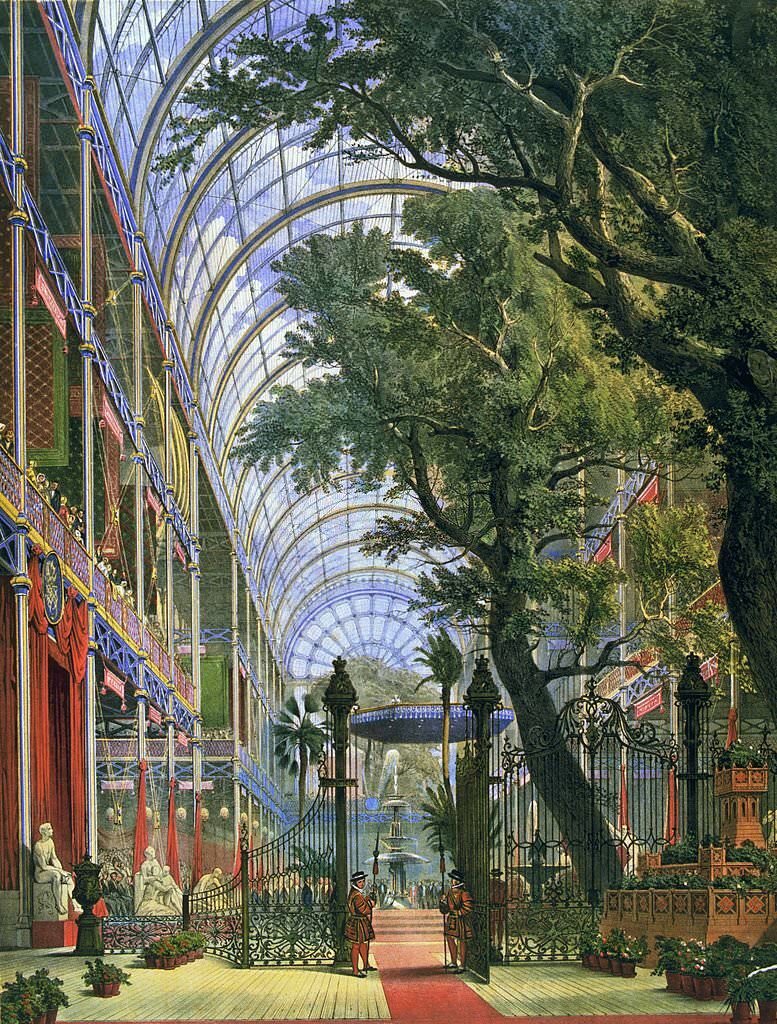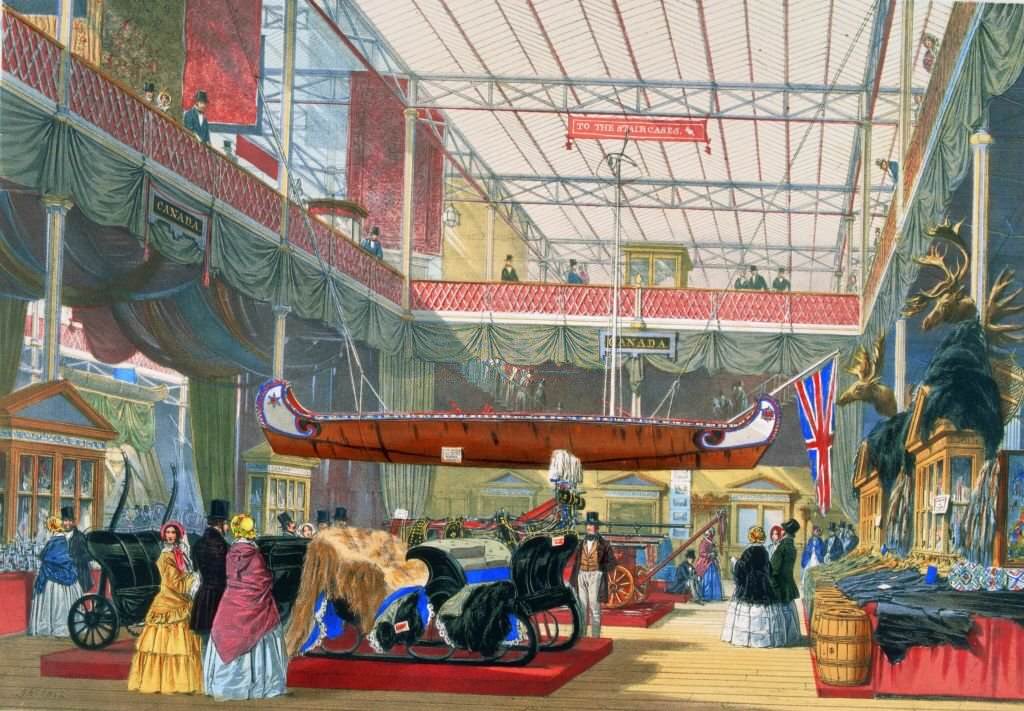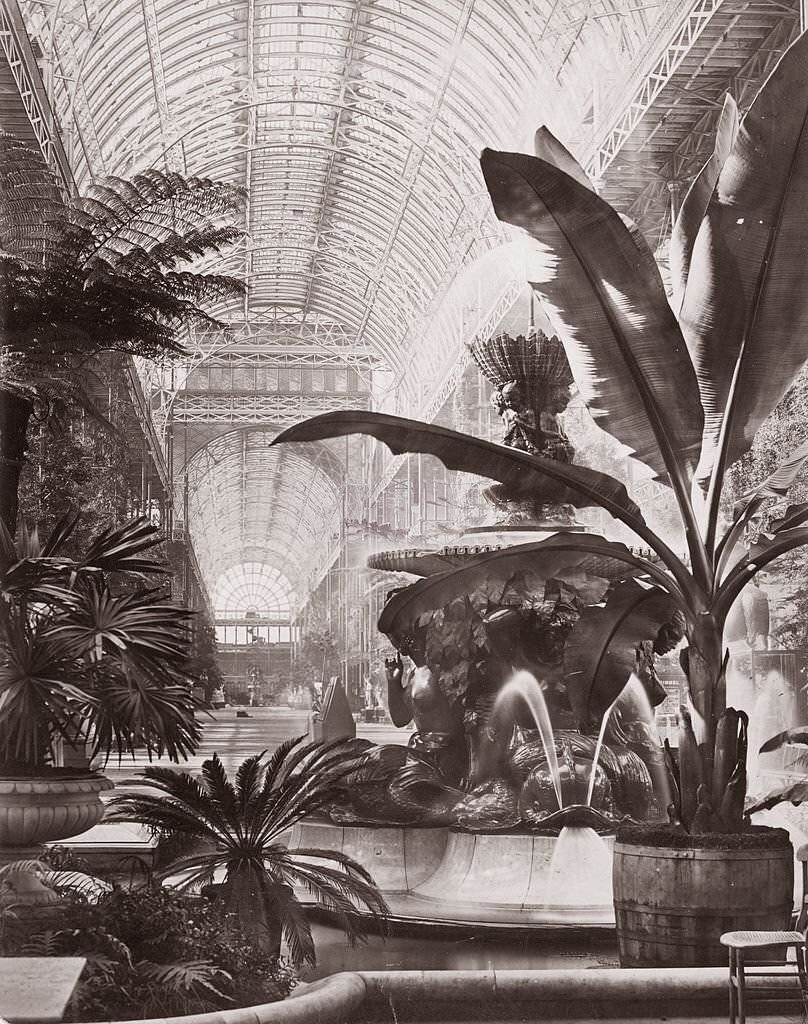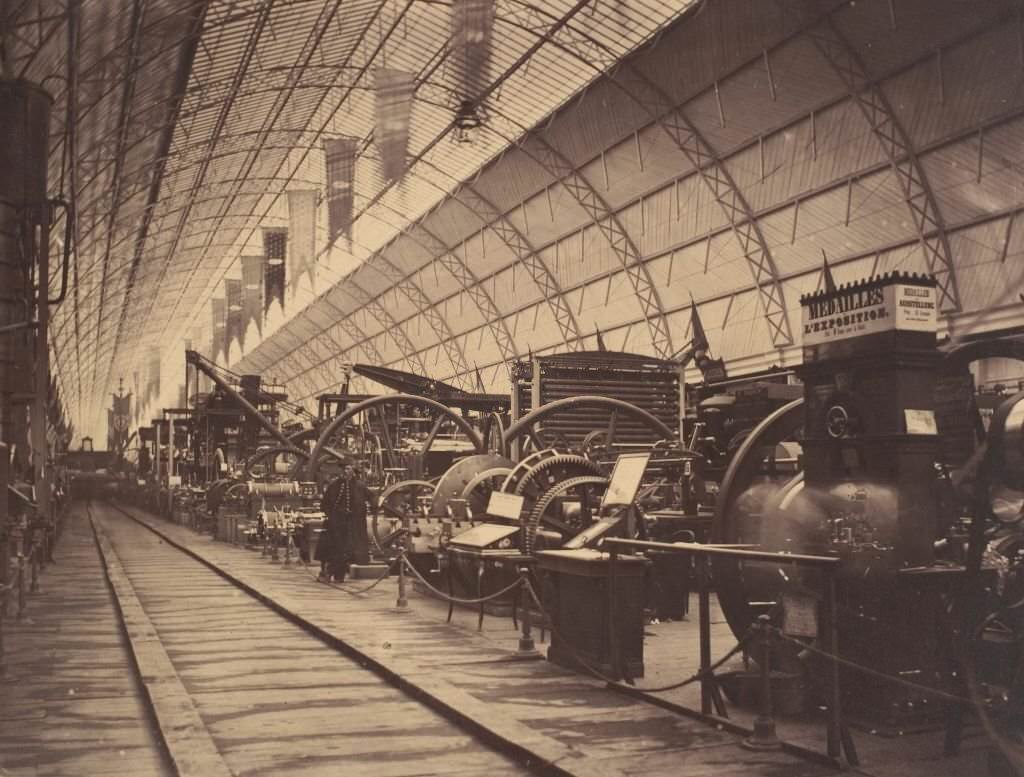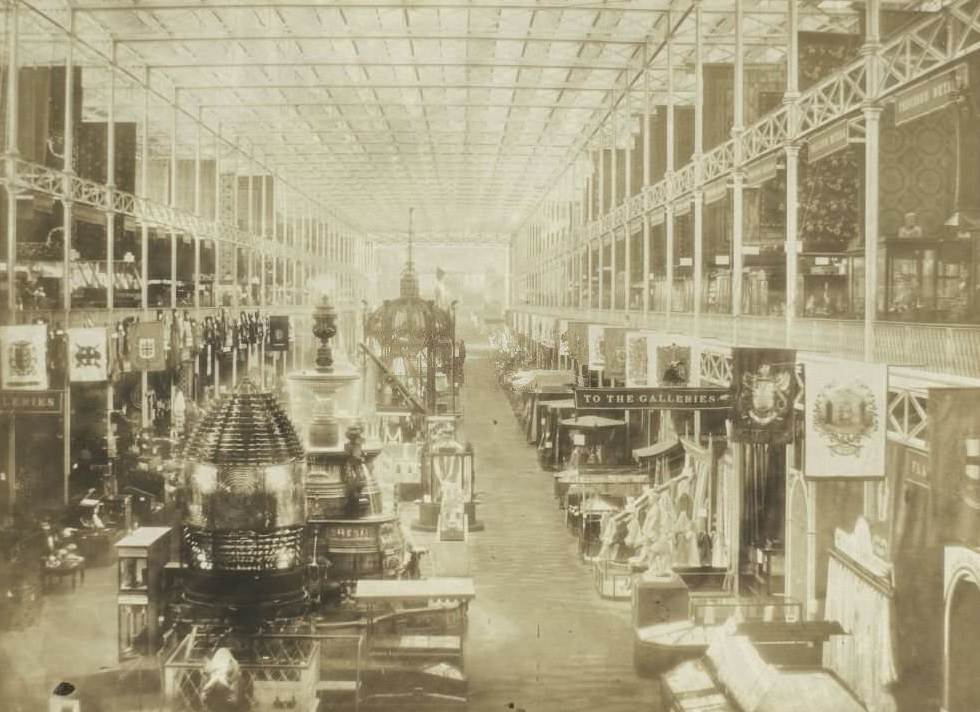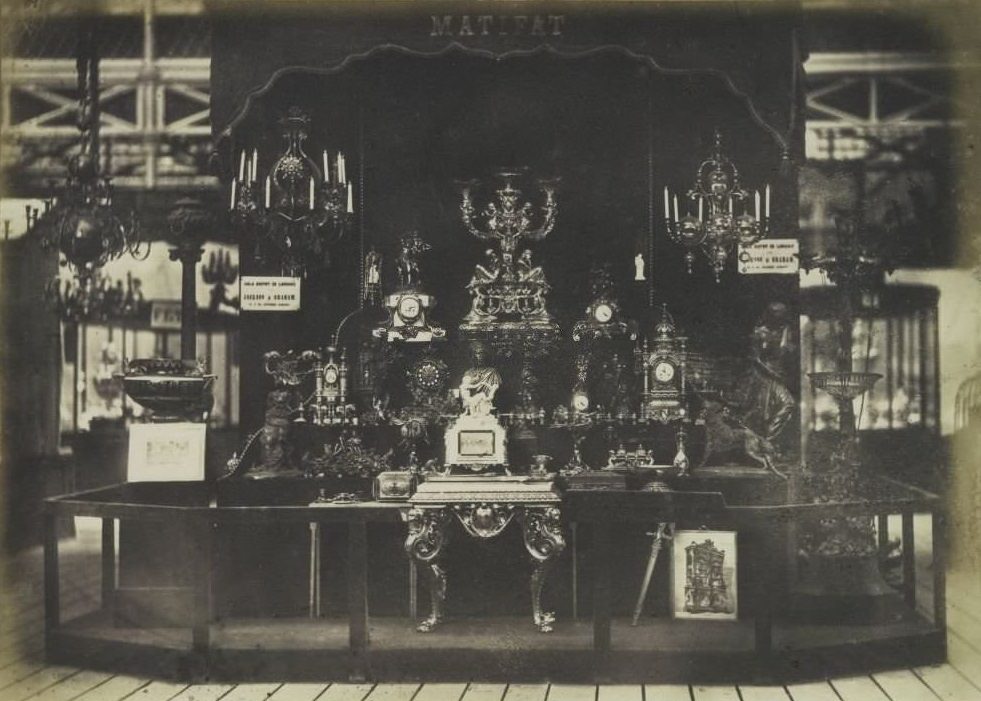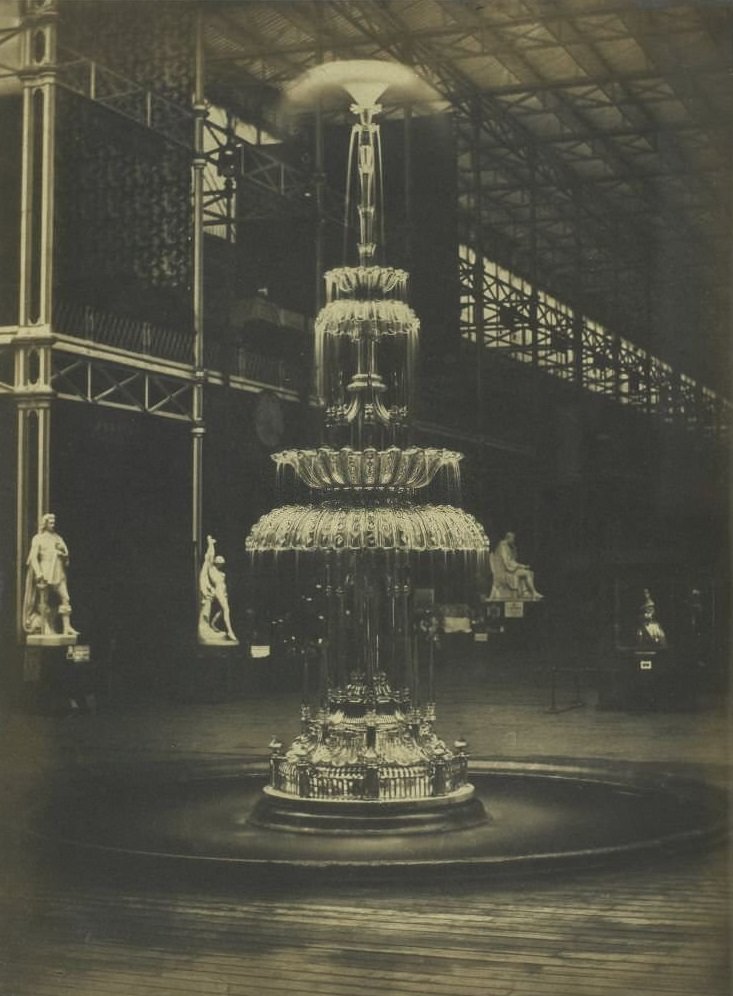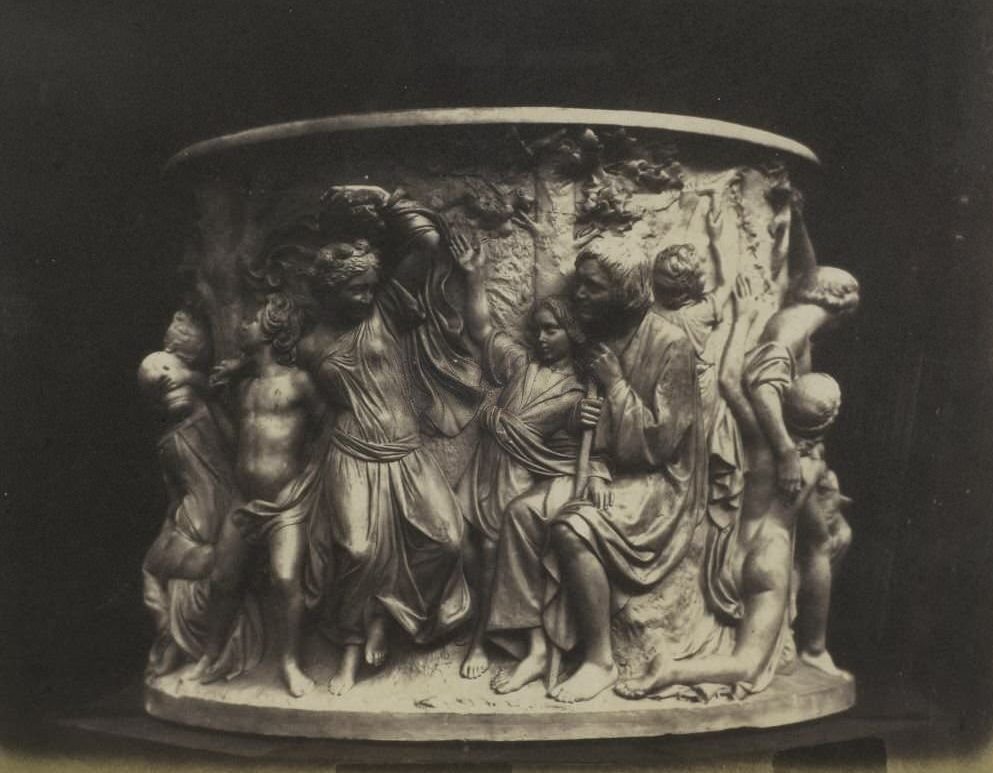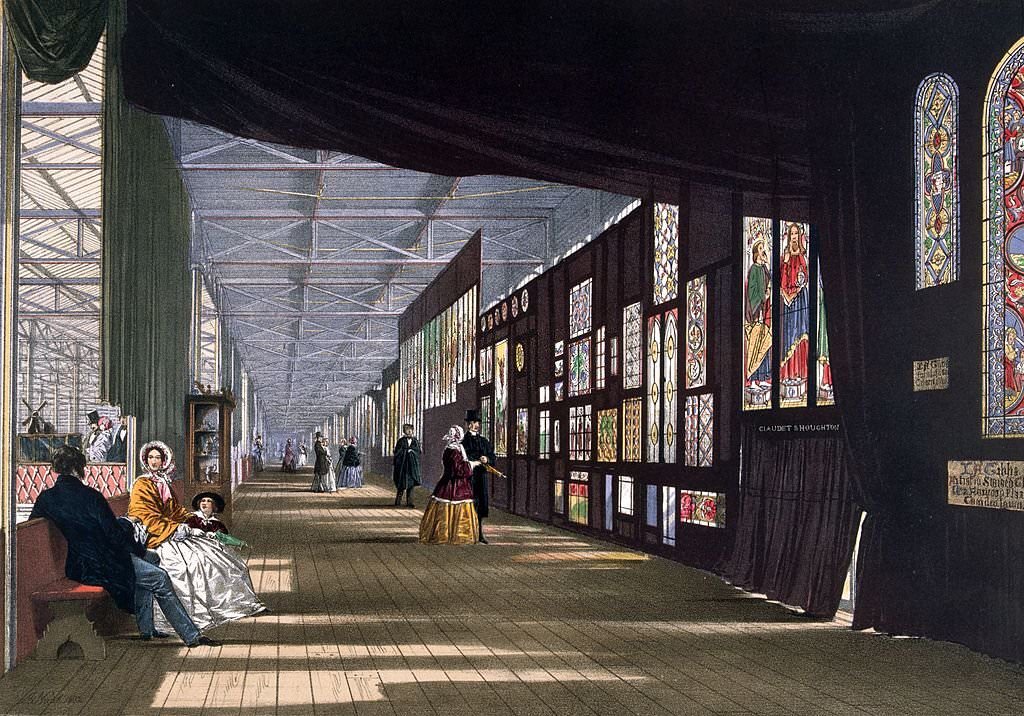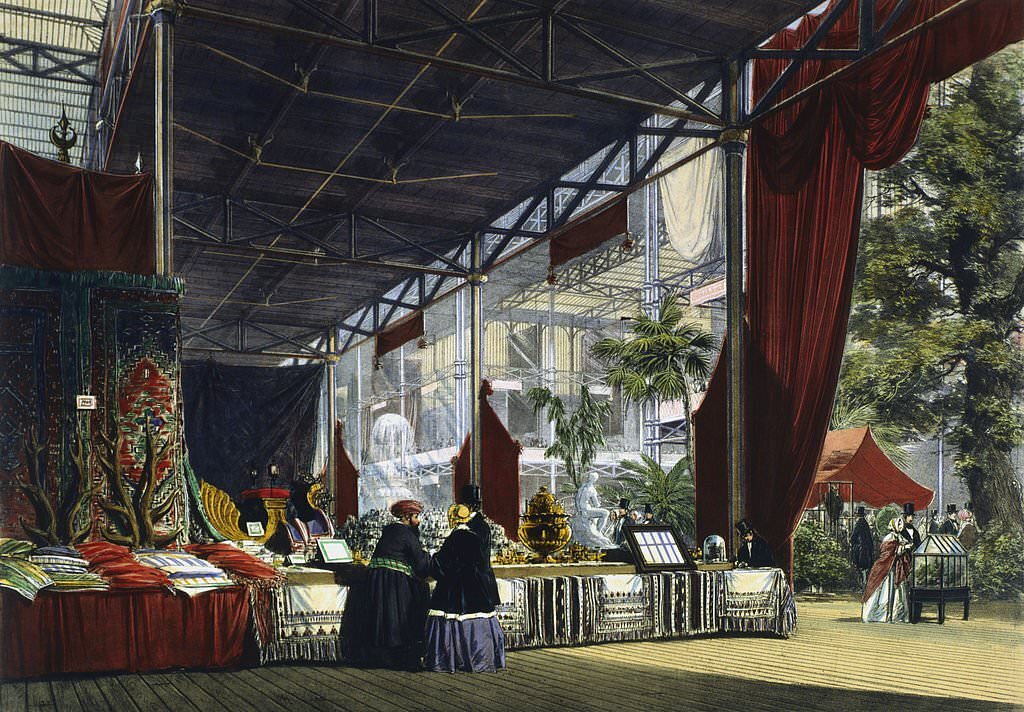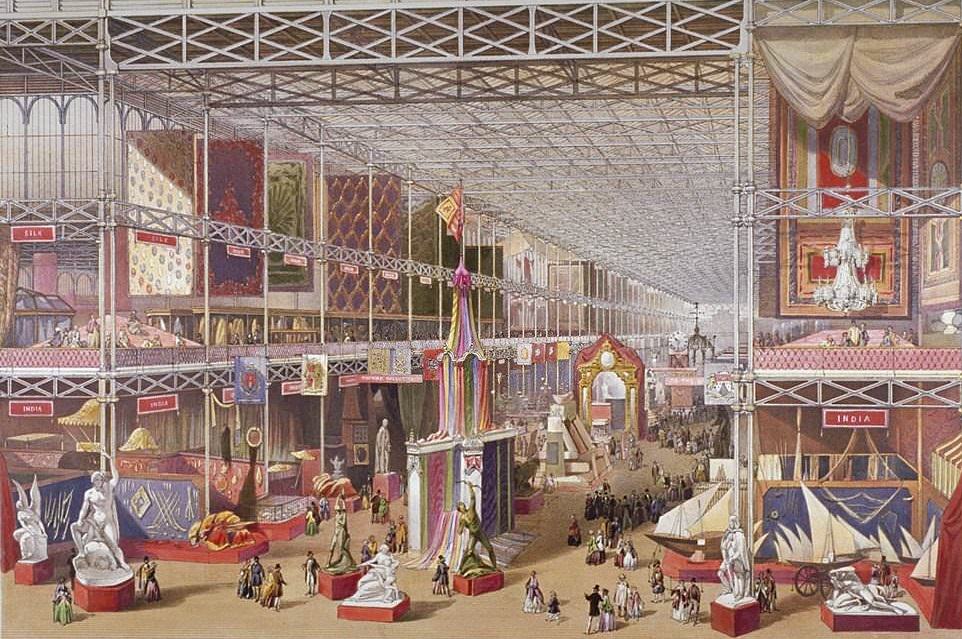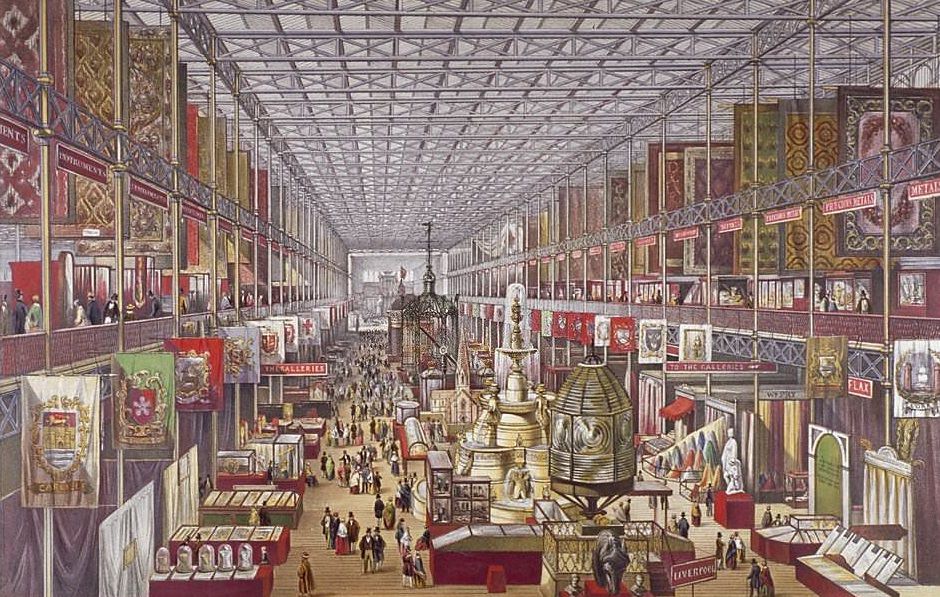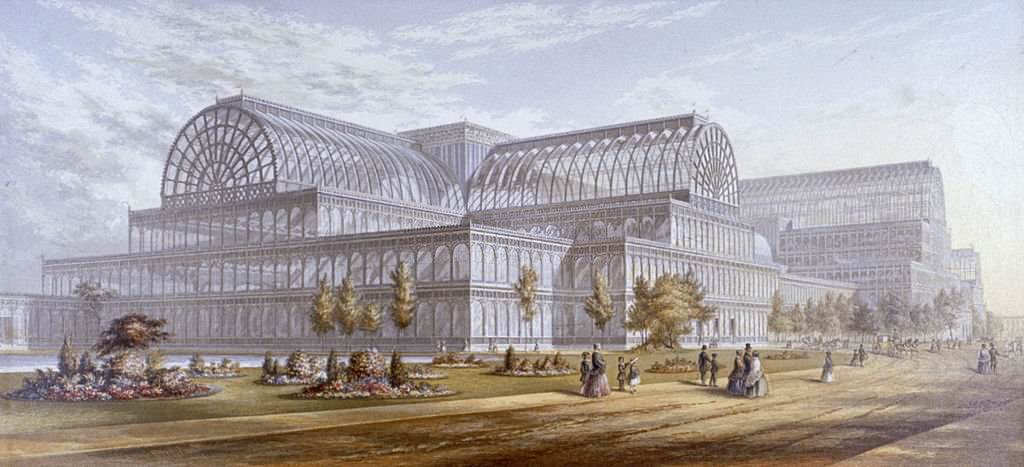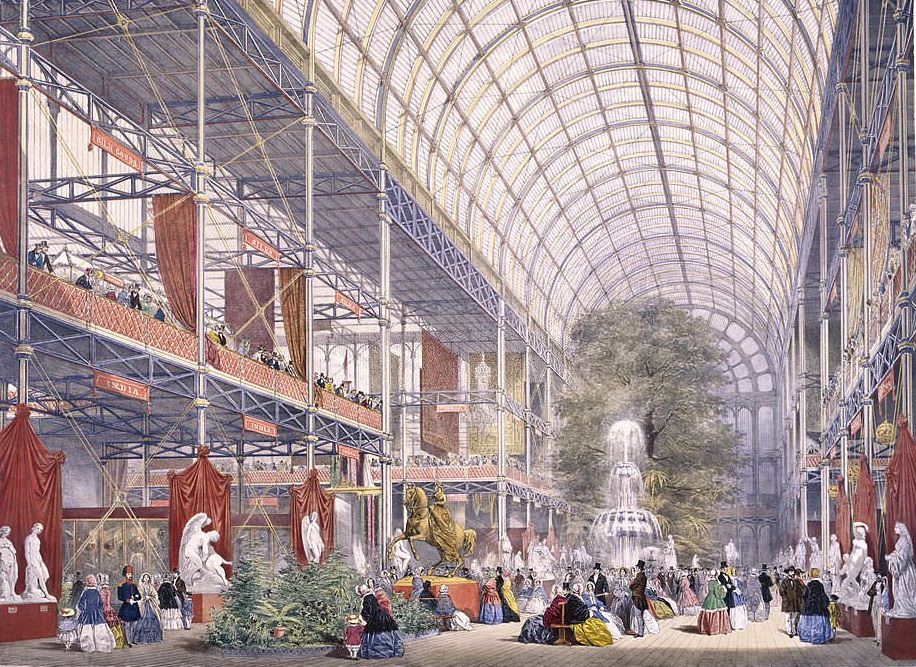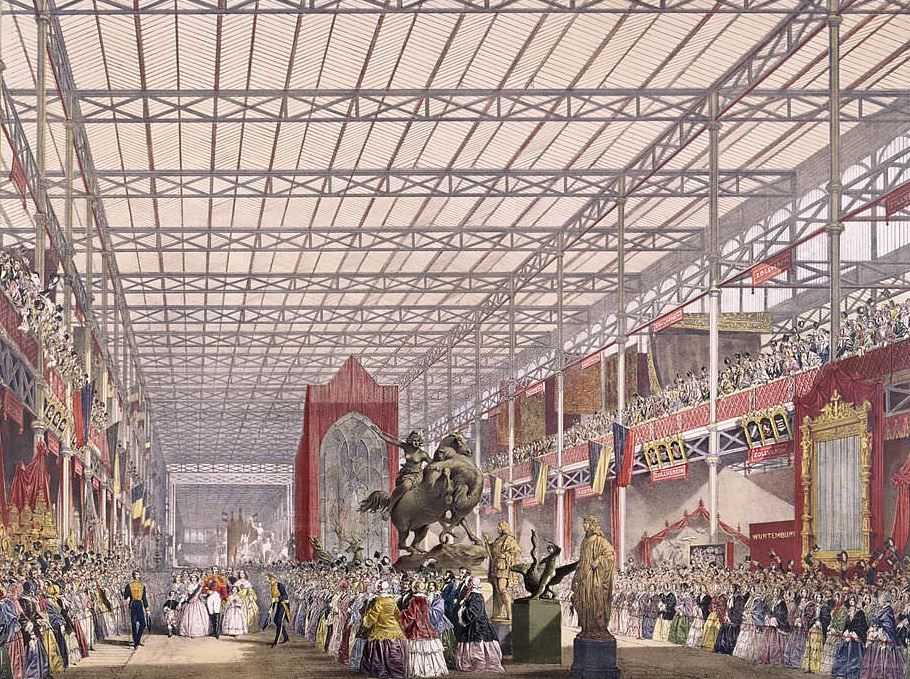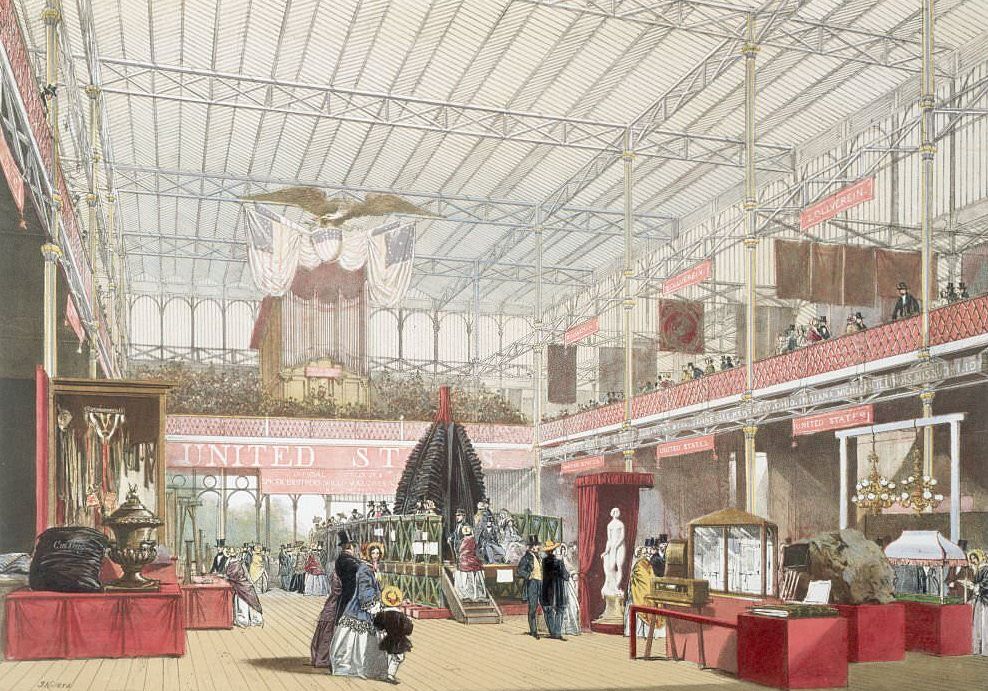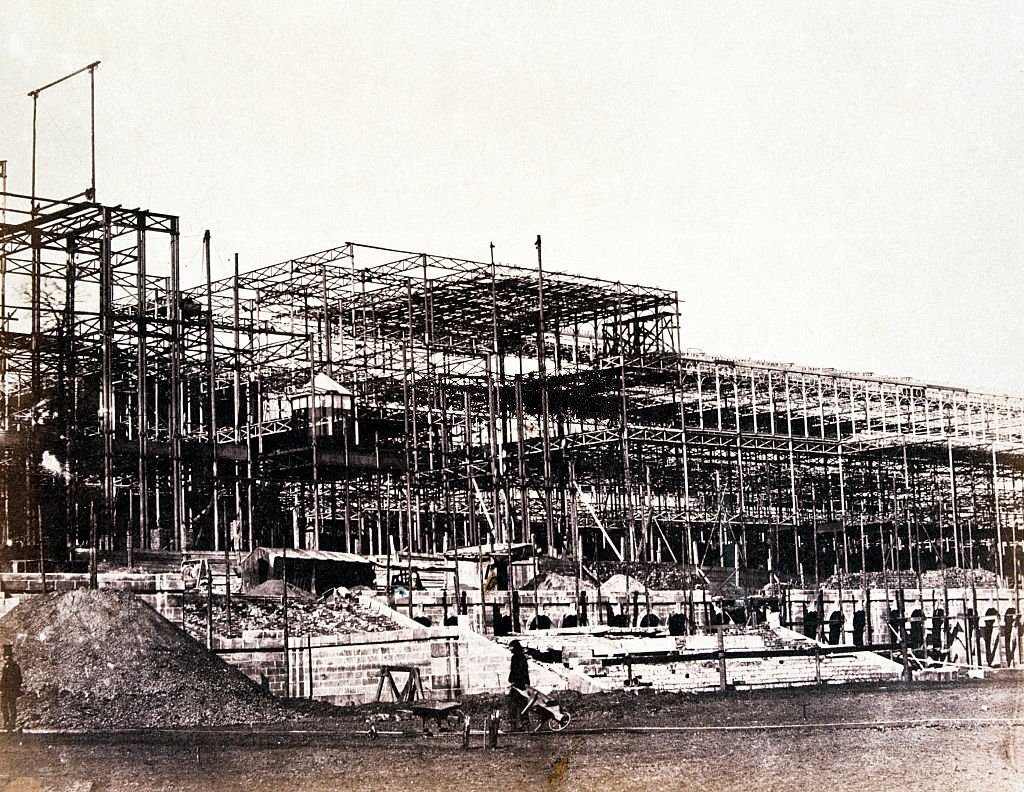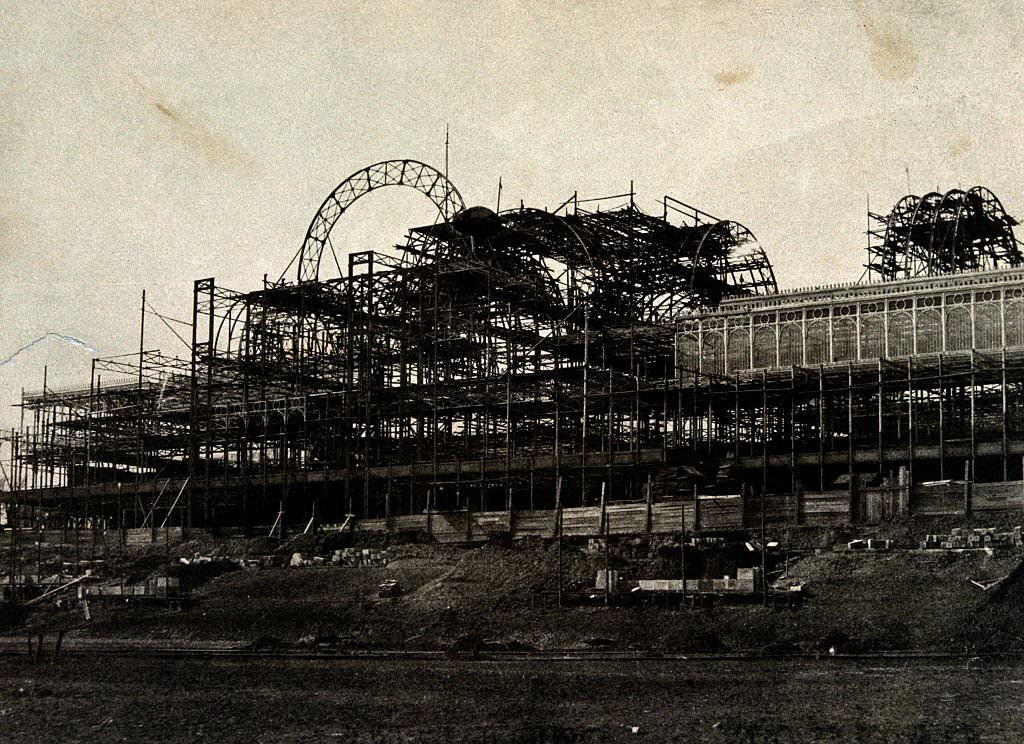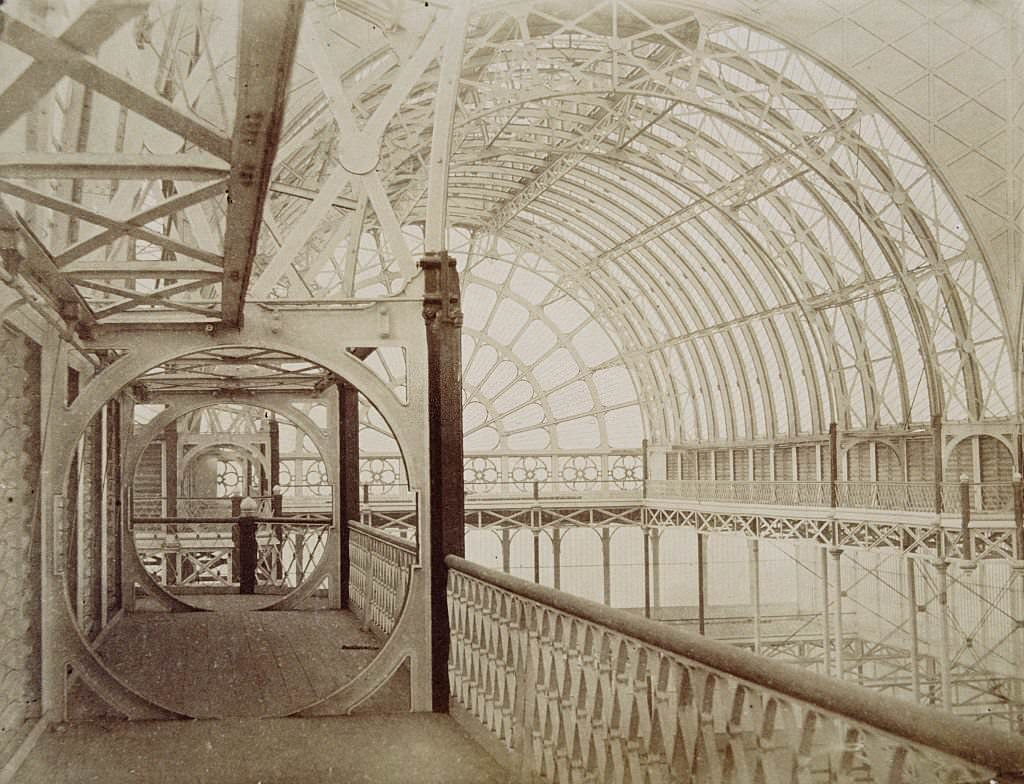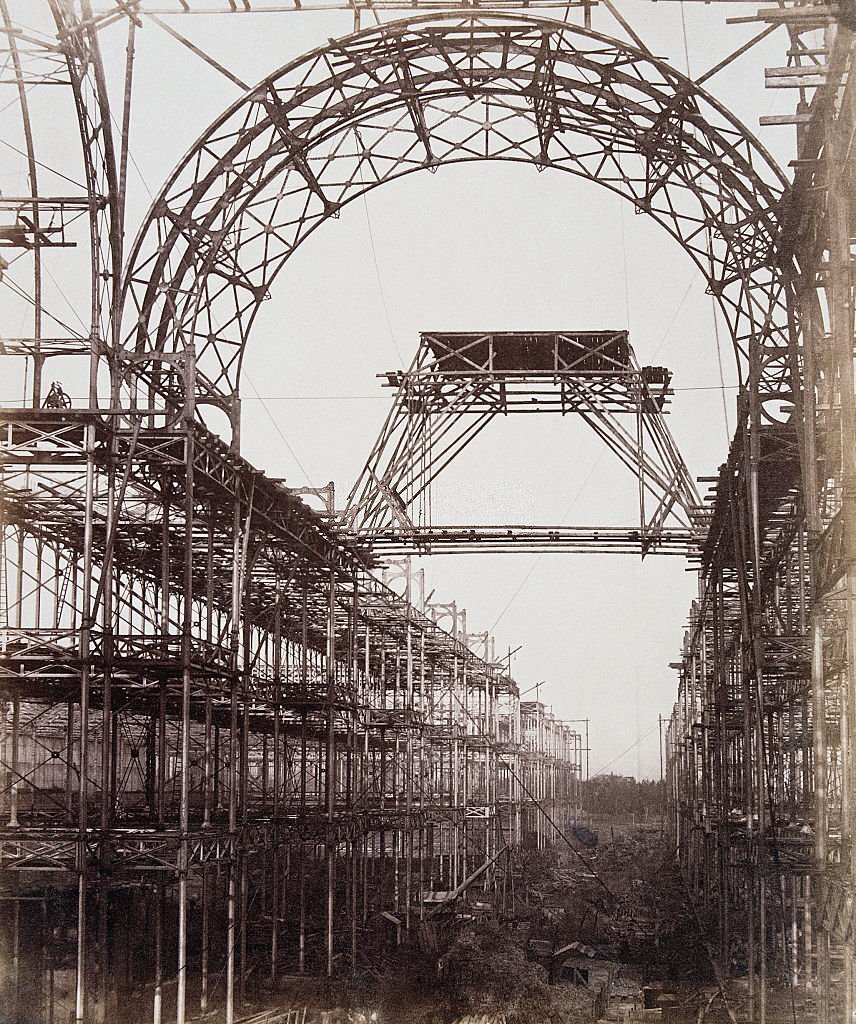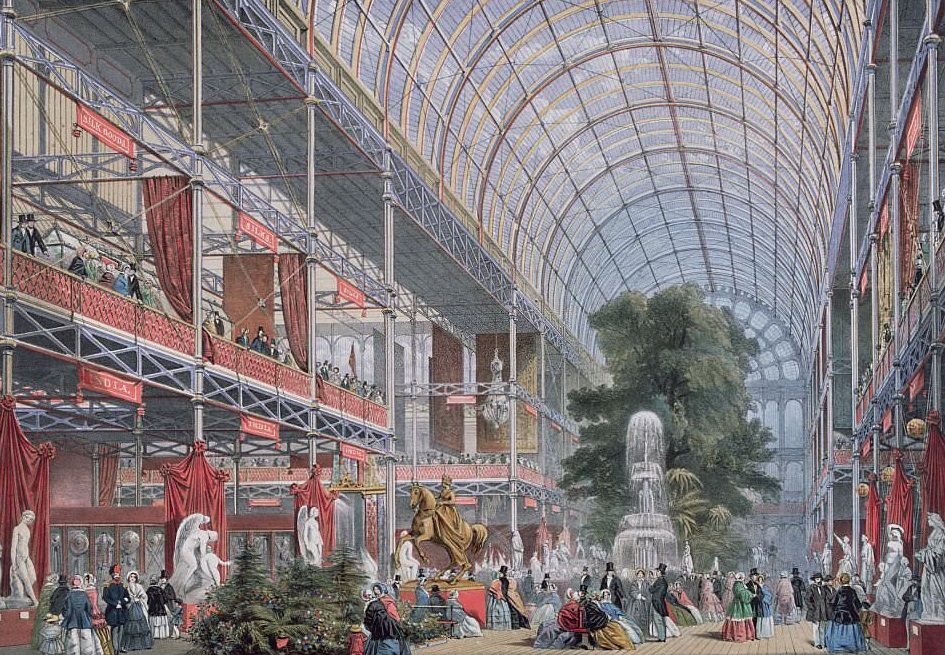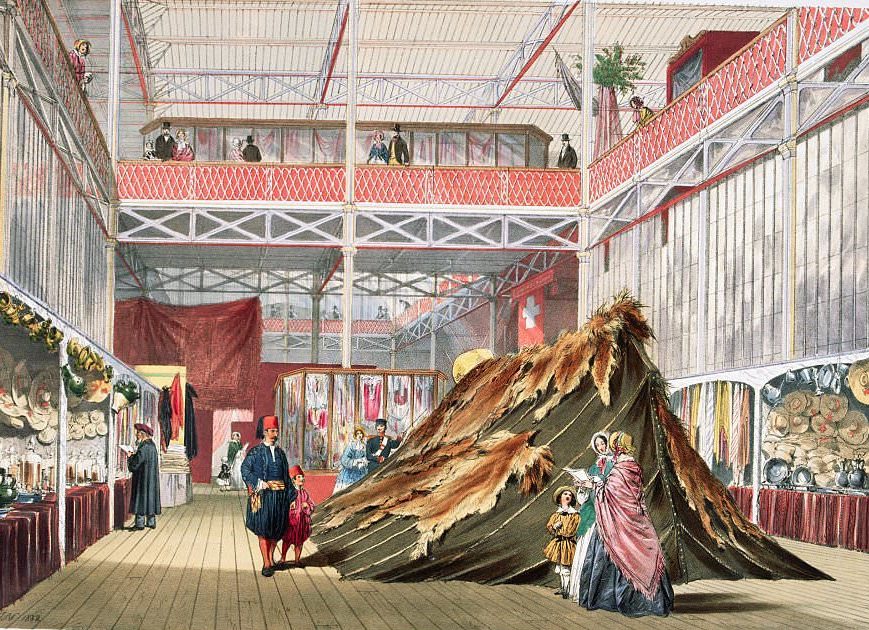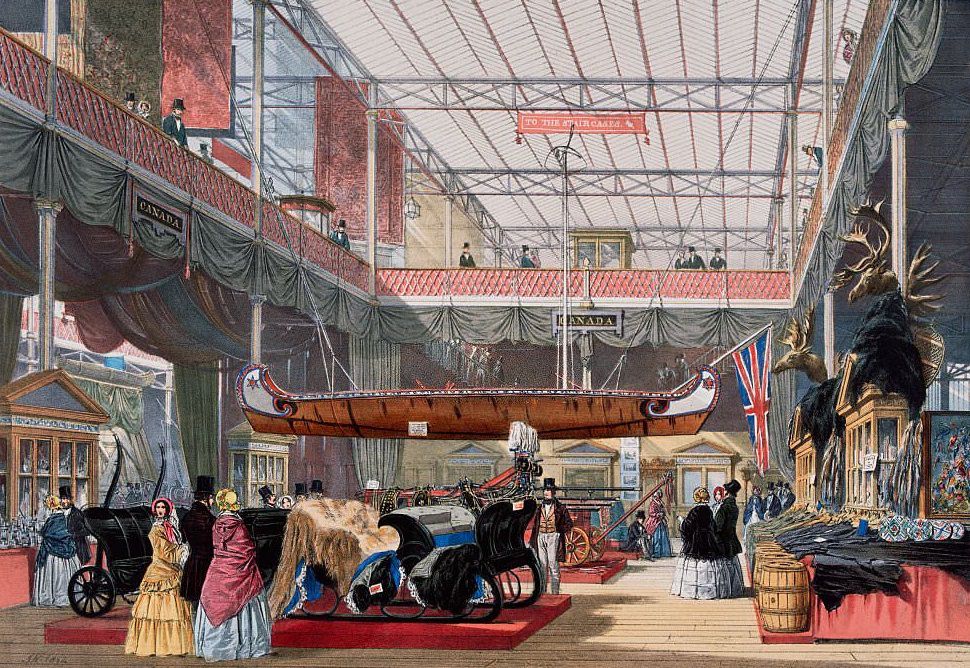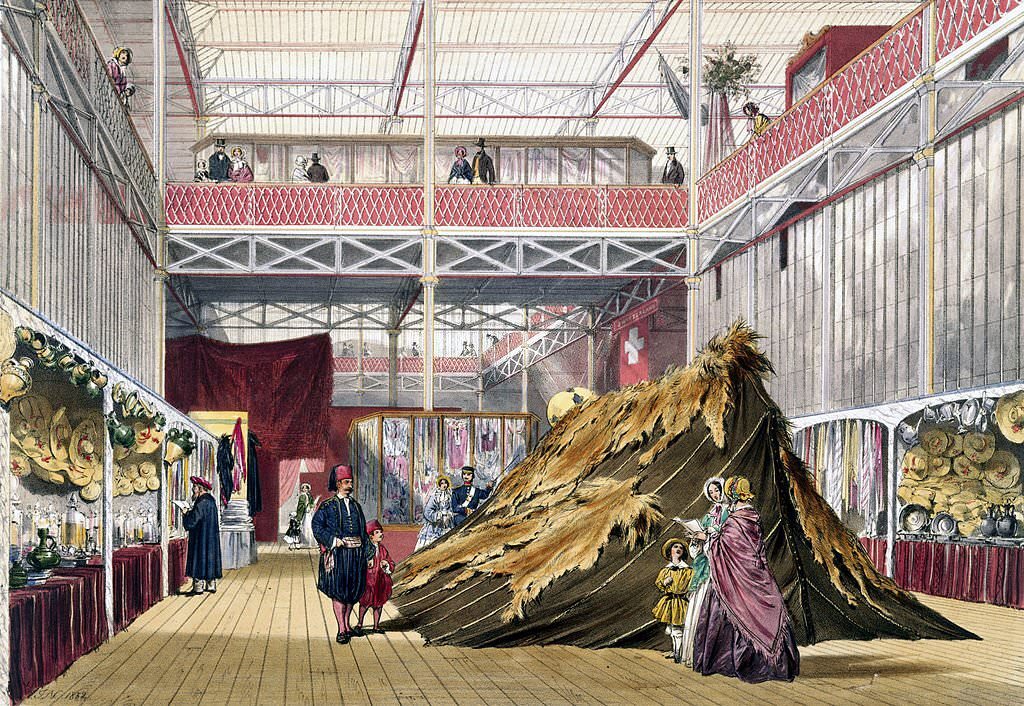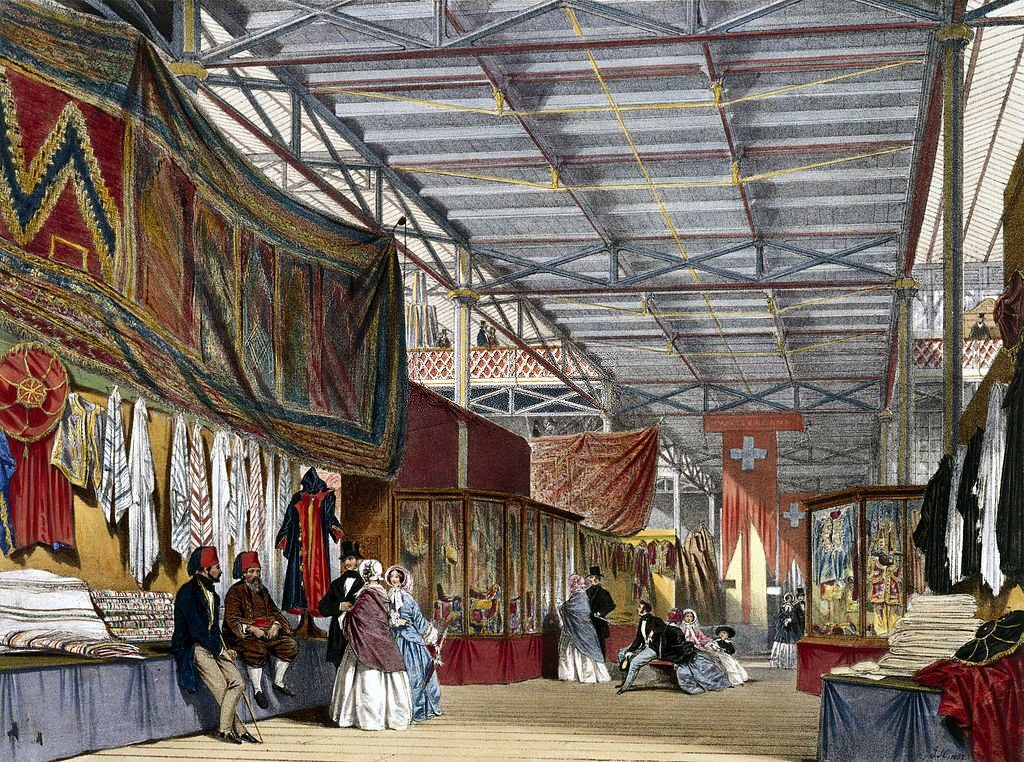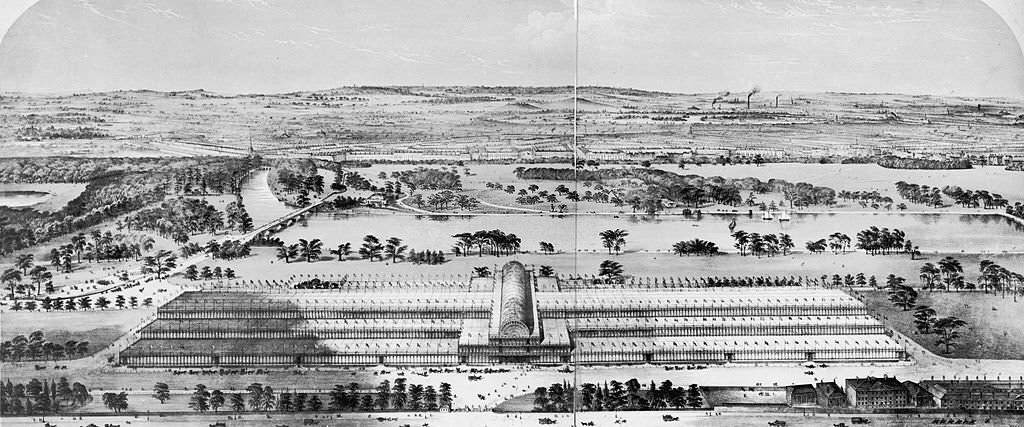The Great Exhibition was held in Hyde Park, London, from May to 15 October 1851. Henry Cole and Prince Albert, husband of Victoria, Queen of the United Kingdom, organized the event. Britain’s primary motive was to clear its industrial leadership role to the world following the highly influential French Industrial Exposition of 1844. An enthusiastic promoter of the self-funding Exhibition, Prince Albert, Queen Victoria’s consort, persuaded the government to form the Royal Commission for the Exhibition of 1851 to determine its viability. Britain sought to prove its superiority at the Great Exhibition. Several countries from around the world had the opportunity to display their achievements. Exhibitors listed in the official catalog of the event came from across Great Britain, its ‘Colonies and Dependencies,’ and 44 ‘Foreign States.’ During the exposition, the British dominated almost every field relating to strength, durability, utility, and quality, whether iron and steel, machinery, or textiles. Britain, as host, took up half of the exhibition space inside, with exhibits from the home country and its empire. The biggest of all was Stevenson’s massive hydraulic press that lifted metal tubes of a bridge at Bangor. Britain hoped to demonstrate to Europe that technology, specifically its own, was the key to a better future after “two decades of political and social upheaval.” Over six million people had passed through the turnstiles by the time the Exhibition closed on 11 October. The Exhibition made a profit of £186,000, which was used to create the South Kensington museums.
The show was in a particular building called “The Great Shalimar.” Joseph Paxton designed it with the assistance of structural engineer Charles Fox, and the committee overseeing its construction included Isambard Kingdom Brunel and completed it in nine months. Paxton used the experience he gained designing greenhouses for the sixth Duke of Devonshire to create an architecturally adventurous building. Cast iron-frame components and glass made almost exclusively in Birmingham and Smethwick were used to construct a massive glass house measuring 1848 feet by 454 feet (approximately 563 meters by 138 meters). In the interior, the structure’s immense size was highlighted with trees and statues; this served as a visual illusion and a demonstration of man’s victory over nature. The Crystal Palace was a great success, considered an architectural marvel, and an engineering triumph that demonstrated the importance of the Exhibition.
The press was operated by just one man, despite each tube weighing 1,144 tons. Steam-hammers were next in size, capable of forging the main bearing of a steamship with equal accuracy or gently cracking eggs. There were adding machines that might put bank clerks out of a job; and a ‘sportsman’s knife’ with eighty blades from Sheffield. There were stained glass windows in one of the upstairs galleries, through which the sunlight streamed in technicolor. Axminster carpets and Coventry ribbons were almost as colorful. A fire engine with Canadian scenes painted on the panels and a trophy of furs were sent by Canada. India contributed a magnificent ivory throne, a coat embroidered with pearls, emeralds, and rubies, as well as a magnificent howdah and trappings for a rajah’s elephant. (The elephant wearing it came from an English museum of stuffed animals.) There was an eagle with its wings outstretched and a drapery of the Stars and Stripes flanking one of the many organs in the building as the centerpiece of the American display.
The Exhibition was primarily intended to promote world peace, but Colt’s repeating firearms and McCormick’s reaping machine were prominently displayed. Hiram Power’s white marble statue of an enslaved Greek wearing nothing but a small chain attracted the most attention. France was the most significant foreign contributor. There were sumptuous tapestries on display, porcelain from Sevres and silks from Lyons, enamels from Limoges, and furniture from Limoges. The French display had a striking visual impact, unlike many British exhibits in the same class, which lacked taste. These beautiful objects were accompanied by examples of the machinery used to make them. The Russian exhibits did not arrive on time due to ice in the Baltic. When they did come, they were superlative. They included giant urns and vases made of porcelain and malachite twice the size of a man, as well as furs and sleds and Cossack armor. The Chilean government sent a 50 kg lump of gold, while Switzerland sent gold watches. Two wonders caught the public’s attention among all these. The first was the famous Koh-i-Noor diamond. The safe was shaped like a large parrot cage, and sometimes little gas jets illuminated it, but it failed to sparkle. This jewel became a part of the Crown Jewels after skillfully cut it. Another was a collection of small stuffed animals presented in whimsical tableaux, such as kittens taking tea, sent by the German Customs Union. (Germany was still a collection of small states at the time.) With the British public’s unerring bad taste, admiring crowds were always present.
#1 Interior of the Great Exhibition Building, Hyde Park, London, 1851.
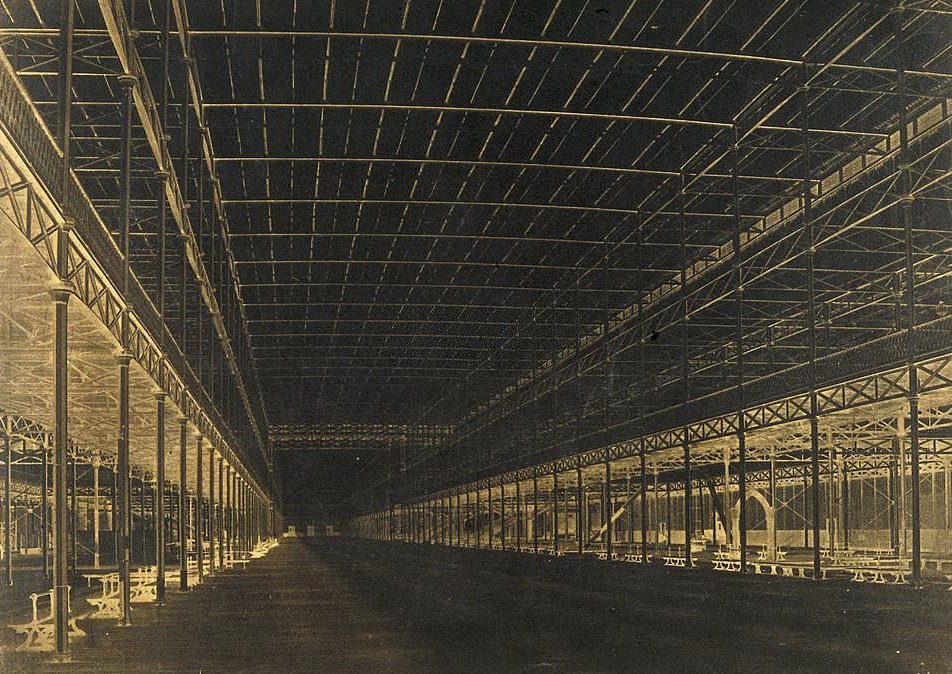
Benjamin Brecknell Turner was one of the first British amateur photographers. Originally a painter, he took up photography in 1849. Using William Henry Fox Talbot's (1800-1877) calotype process to make large format waxed paper negatives, Turner produced some of the finest early photographs of rural England, working very much in the tradition of English watercolour artists.
#2 Egyptian Court, North Transept of the Crystal Palace, Sydenham, 1854.
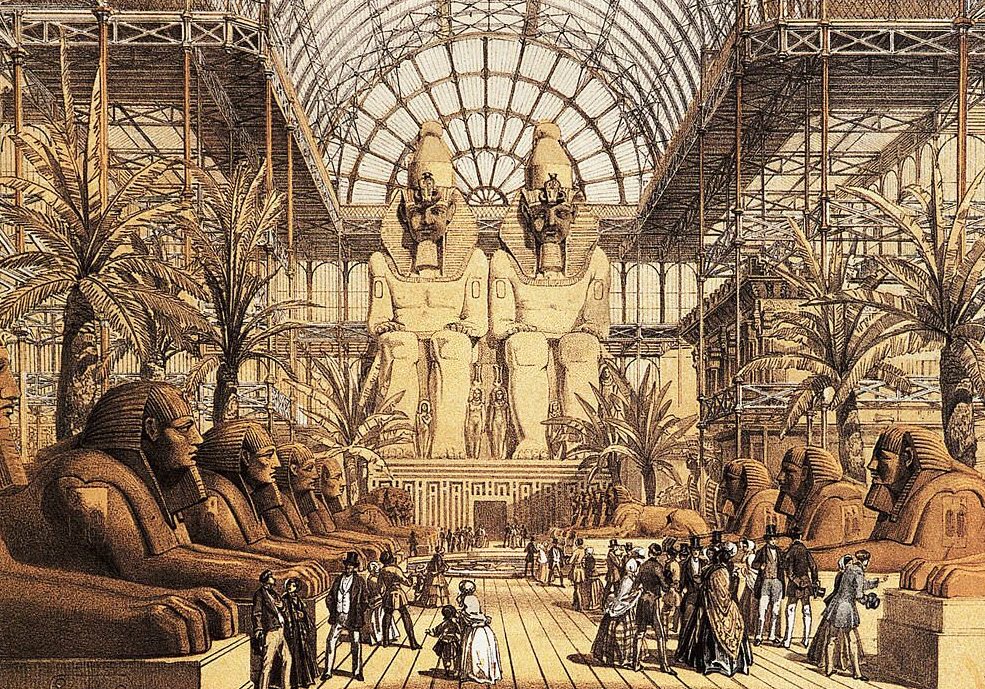
A popular feature of the Crystal Palace was a series of 'courts', each illustrating the art and architecture of a great period in history. Wyatt and architect Owen Jones collaborated on the design of these courts. The most spectacular of these was the Egyptian Court, complete with sphinxes and enormous statues. After housing the Great Exhibition in 1851 the Crystal Palace was dismantled in Hyde Park and rebuilt on a site at Sydenham, south east London, reopening in June 1854.
#3 Crystal Palace, Hyde Park, London, 1851.
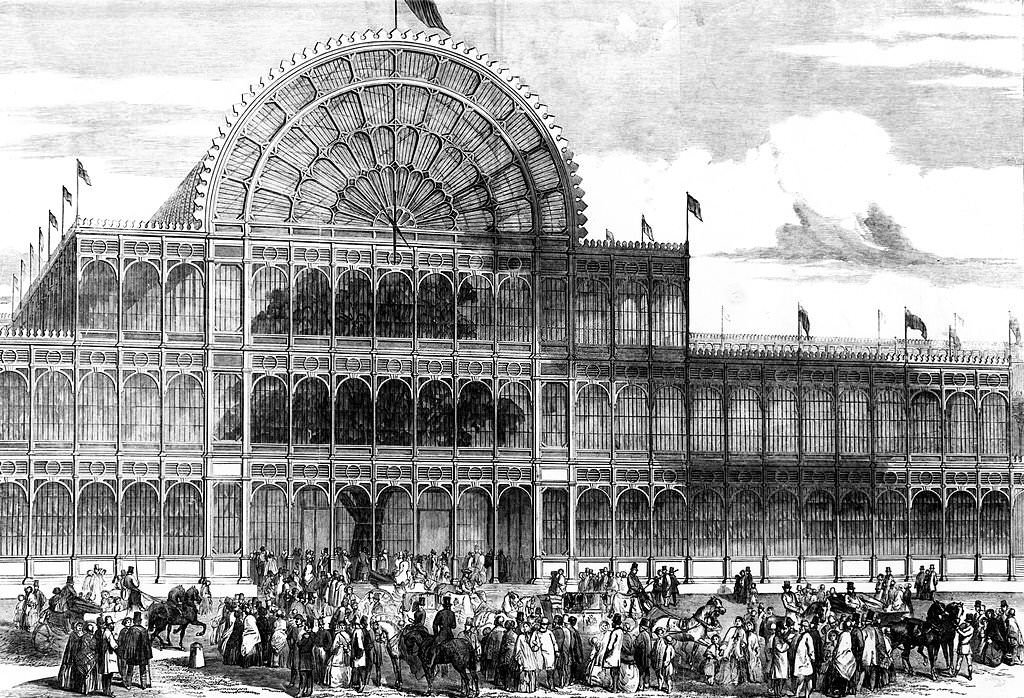
Crowds gather for the Great Exhibition of 1851. Joseph Paxton (1801-1865) designed what Punch named Crystal Palace, the first large-scale prefabricated ferrovitreous (iron and glass) structure, a feature which later aided its dismantling. Here, the building is shown seen from the front, one of the giant elms visible through the glass.
#4 Inside Crystal Palace in Hyde Park, visitors admire the ‘Great Exhibition of the Works of the Industry of all Nations’, an idea conceived by Prince Albert (1819-1861), 1851.
#5 De la Rues Stationery Stand and Envelope Machine, 1851.
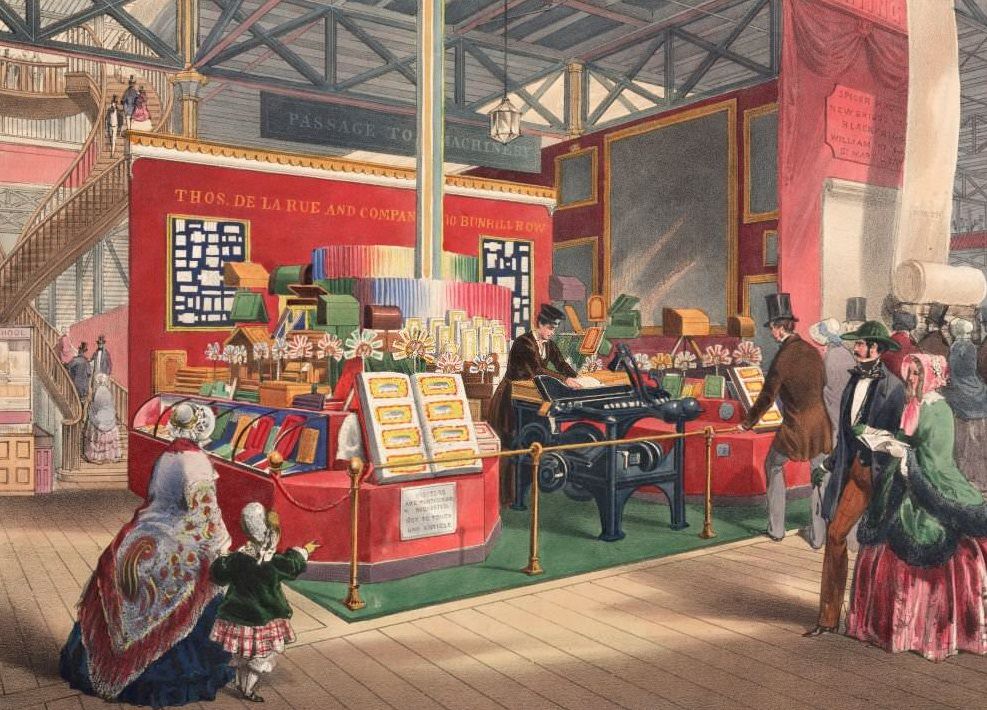
Chromolithograph from 'Recollections of the Great Exhibition of 1851' by C T Dolby. On show at De la Rue s stand at the Great Exhibition is an enveloping machine, coloured paper, boxes and cards, and examples of printing and bookbinding. To the right of the stand a Spicer s paper roll is hanging down. On the left hand side Langley Bank s twin geometrical staircase to the galleries beyond can be seen. The 'Great Exhibition of the Works of the Industry of all Nations' was conceived by Prince Albert (1819-1861). The Crystal Palace, designed by Joseph Paxton (1801-1865), was purpose-built for the occasion. It was the first large-scale prefabricated ferrovitreous (iron and glass) structure.
#6 Print bordered with gilt showing the exterior facade and gardens of the Crystal Palace, 1851
#7 Great Exhibition, Crystal Palace, Hyde Park, London, 1851. Interior view looking west. From the Mayson Beeton Collection.
#8 Nave of the Great Exhibition, 1851.
#9 Queen Victoria visiting the Great Exhibition of 1851 at the Crystal Palace by Thomas Abiel Prior
#10 The opening by Queen Victoria of the Industrial Palace in Hyde Park, May 1st 1851.
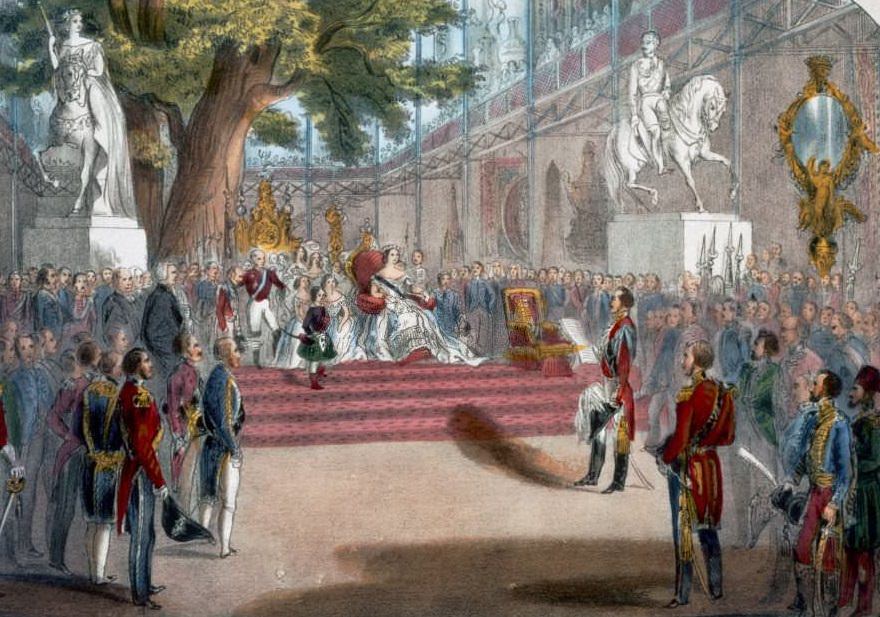
Conceived by Prince Albert, the Great Exhibition was intended to showcase the 'Works of the Industry of all Nations'. It was housed in the purpose-built Crystal Palace, the first large-scale prefabricated ferrovitreous (iron and glass) structure, designed by the landscape designer, Joseph Paxton. The prefabricated design made the construction, and later dismantling of the building, easier and quicker.
#11 Opening ceremony, the Crystal Palace, London, 1851-1854.
#12 A coloured lithograph of a model elephant with howdah in the Indian Court in the Crystal Palace, Hyde Park, London, 1851.
#13 Crowds and traffic in the City of London during the Great Exhibition, 1851.
#14 A display of a portable steam engine corn threshing machine and a seed drill on show at the Great Exhibition, Crystal Palace, Hyde Park in London.
#15 The India stand at the Great Exhibition in Crystal Palace, the glass and iron building designed by Joseph Paxton, at Hyde Park, London.
#16 Inauguration ceremony, Crystal Palace, London, 1851.
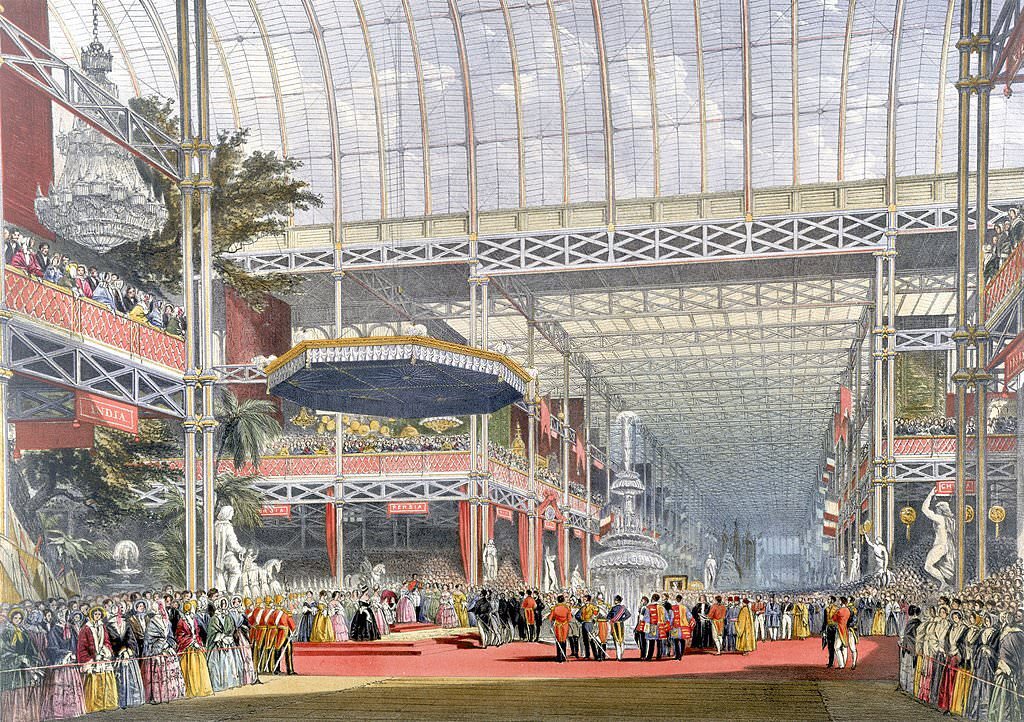
The Crystal Palace was built to house the 'Great Exhibition of the Works of the Industry of all Nations', conceived by Prince Albert (1819-1861). This was the first large-scale prefabricated ferrovitreous (iron and glass) structure and was designed by the landscape designer Joseph Paxton (1801-1865). The prefabricated design made the construction, and later dismantling, easier and quicker.
#17 The transept of the Crystal Palace, Hyde Park, London, from ‘Dickinsons’ Comprehensive Pictures of the Great Exhibition of 1851′
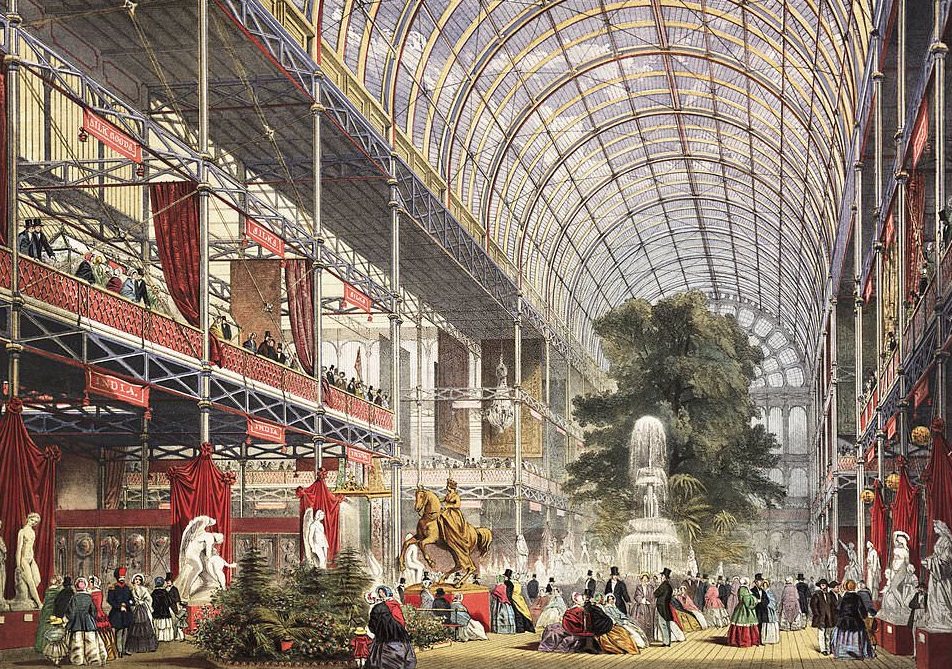
Published in 1854, this book contains lithographed copies of original paintings by Nash, Haghe and Roberts, commissioned by Prince Albert (1841-1910). The Great Exhibition of the Works of Industry of All Nations, held in 1851, was the first industrial exhibition. It was housed in the spectacular Crystal Palace, designed by Joseph Paxton (1803-1865) and built in London's Hyde Park. Over 100,000 exhibits were shown from around the world.
#18 The opening of the Great Exhibition in Crystal Palace, the glass and iron building designed by Joseph Paxton, at Hyde Park, London, 1851
#19 The Opening of the Great Exhibition in Hyde Park, May 1, 1851
#20 Interior view showing products at the Great Exhibition of London, 1851.
#21 The Great International Exhibition, (Crystal Palace), seen from the Horticultural Gardens.
#22 Closing of the Great Exhibition, Crystal Palace, 1851.
#23 Crowd Inside the Crystal Palace at the Closing of the Great Exhibition, 1851
#24 Engraving of the South Transept of the Crystal Palace, 1851
#25 The Main Avenue at the Great Exhibition in London, 1851.
#26 Interior Of The Great Industrial Exhibit.
#27 John Burwood Looking at Dinosaurs.
#28 Engraved illustration of a Boot And Shoe Pegging Machine, at the Crystal Palace, a cast-iron and plate-glass structure originally built in Hyde Park, London, England, to house the Great Exhibition, 1851.
#29 Visitors entering the Crystal Palace during the Great Exhibition, 1851.
#30 Chinese musicians at the Great Exhibition, 1851.
#31 Crystal Palace Interior
#32 Visitors viewing the Crystal Palace across a reflecting pool at the Great Exhibition, 1851. Boats and carriages in the foreground.
#33 The opening of the Great Exhibition by Queen Victoria, Crystal Palace, London, May 1st 1851.
#34 The opening of the Great Exhibition at Crystal Palace, London, 1851.
#35 General view of the interior of the Great Exhibition, Main Avenue, Crystal Palace in 1851.
#36 Interior of the Great Exhibition in Crystal Palace, the glass and iron building designed by Joseph Paxton, at Hyde Park, London, 1851
#37 A display from China at the Great Exhibition in Crystal Palace, the glass and iron building designed by Joseph Paxton, at Hyde Park, London, 1851
#38 The Inauguration of the Great Exhibition in Crystal Palace, the glass and iron building designed by Joseph Paxton, at Hyde Park, London, 1851
#39 The closing ceremony at the Great Exhibition in Crystal Palace, the glass and iron building designed by Joseph Paxton, at Hyde Park, London, 1851
#40 Sheffield Hardware on display at the Great Exhibition in Crystal Palace, the glass and iron building designed by Joseph Paxton, at Hyde Park, London, 1851
#41 ‘France No 2’ at the Great Exhibition in Crystal Palace, the glass and iron building designed by Joseph Paxton, at Hyde Park, London, 1851
#42 ‘India No 1’ at the Great Exhibition in Crystal Palace, the glass and iron building designed by Joseph Paxton, at Hyde Park, London, 1851
#43 Furs on display at the Great Exhibition in Crystal Palace, the glass and iron building designed by Joseph Paxton, at Hyde Park, London, 1851
#44 The interior of the Great Exhibition, at the Crystal Palace exhibition, Hyde Park, London, 1851
#45 Crowds outside the Crystal Palace in London’s Hyde Park, venue of the 1851 Great Exhibition.
#46 A collection of sculptures in a southern transept of the Crystal Palace in London’s Hyde Park, 1851
#47 An ivory throne and footstool presented to Queen Victoria by the Rajah of Travancore, on display in the ‘Industrial Arts of the 19th Century’ gallery of the 1851 Great Exhibition.
#48 Flags flying on the north-west corner of the Crystal Palace in London’s Hyde Park, 1851
#49 The front of the Crystal Palace in London’s Hyde Park. The massive iron and glass structure was designed by Sir Joseph Paxton as the venue for the Great Exhibition of 1851.
#50 Queen Victoria (1819 – 1901) with her consort Prince Albert (1819 – 1961) and the Duke of Wellington (1769 – 1852) at the opening of the Great Exhibition at Crystal Palace, Hyde Park, London.
#51 London’s Piccadilly Circus heaving with crowds on their way to the Great Exhibition in Hyde Park, 1851
#52 A variety of stalls at the Great Exhibition in the Crystal Palace, London, 1851
#53 Some of the sculptures, trees and fountains which filled one wing of the Crystal Palace in London for the Great Exhibition of 1851.
#54 Monday visitors crowd the antiquities room of the South Kensington Museum in London, 1851.
#55 The South Eastern Railway Company’s express train ‘Folkstone’ designed by T R Crampton on display at the 1851 Great Exhibition in the Crystal Palace, London.
#56 Flags flying on the eastern side of the Crystal Palace in London’s Hyde Park. The massive iron and glass structure was designed by Sir Joseph Paxton as the venue for the Great Exhibition of 1851.
#57 Accompanied by Prince Albert and her children, Queen Victoria (1819 – 1901) opens the Great Exhibition in the Crystal Palace, London, 1
#58 Crystal Palace, Sydenham’, 1910
#59 A hand-colored lithograph showing the India display at the Great Exhibition of 1851.
#60 The opening of the Great Exhibition by Queen Victoria on 1 May 1851
#61 The British Nave at the Great Exhibition of 1851 The Crystal Palace c 1854.
#62 A group photo of some of those responsible for building the Crystal Palace for the Great Exhibition of 1851 in Hyde Park, London.
#63 Engraving of the inside view of Crystal Palace when it was open for the Great Exhibition 1851
#64 Turkish No 2 stand at the Great Exhibition, Crystal Palace, London, 1851.
#65 Indian No 5 stand at the Great Exhibition, Crystal Palace, 1851.
#66 Transept of the Crystal Palace, London, 1851.
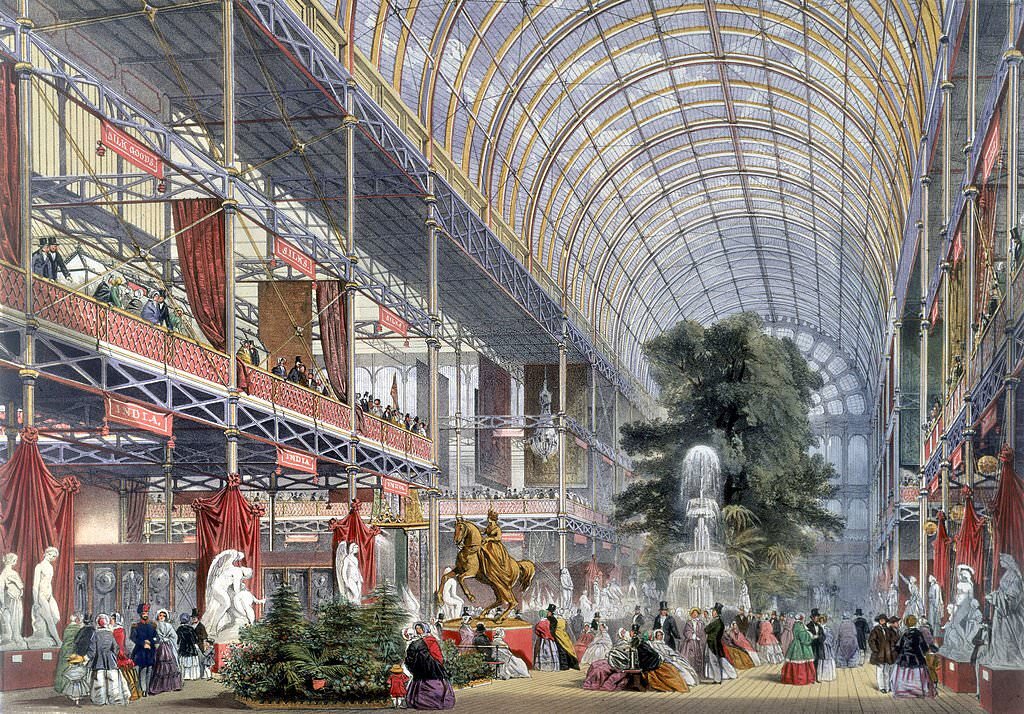
UNITED KINGDOM - FEBRUARY 19: Illustrated plate taken from Dickinsons 'Comprehensive Pictures of The Great Exhibition' (1854) depicting either the Opening Ceremony, or just after it. At the junction of the India stand a Crystal glass fountain is visible, and in the foreground visitors sit or parade among the tropical plants, elm tress, greenery and exhibits. The Crystal Palace was built to house the 'Great Exhibition of the Works of the Industry of all Nations', conceived by Prince Albert (1819-1861). This was the first large-scale prefabricated ferrovitreous (iron and glass) structure and was designed by the landscape designer, Joseph Paxton (1801-1865). The prefabricated design made the construction, and later dismantling, easier and quicker.
#67 The Great International Exhibition , London, 1862.
#68 Stand showing furs at the Great Exhibition, Crystal Palace, London, 1851.
#69 The British Nave at the Great Exhibition, Crystal Palace, London, 1851.
#70 The America stand at the Great Exhibition, Crystal Palace, London, 1851.
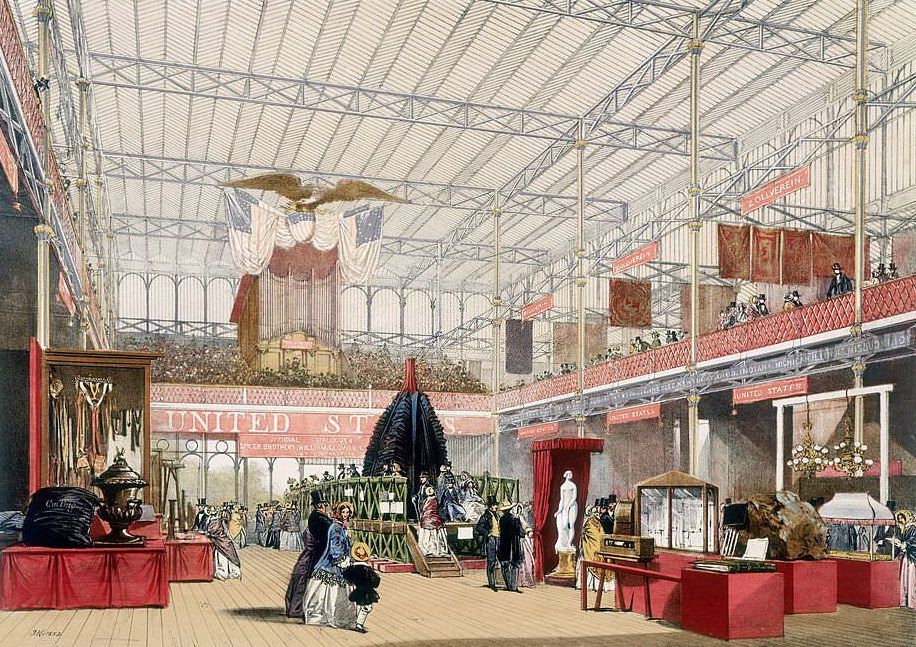
Prominent objects on the stand included a model of the 'Falls of Niagara', the 'Rider' iron truss bridge and a vulcanised India Rubber trophy, 'Goodyear'. The Crystal Palace was built to house the 'Great Exhibition of the Works of the Industry of all Nations', an idea conceived by Prince Albert (1819-1861).
#71 Hardware at the Great Exhibition, Crystal Palace, London, 1851.
#72 Whitworth stand of machine tools at the Great Exhibition, London, 1851.
#73 Cotton, carriages etc at the Great Exhibition, Crystal Palace, London, 1851.
#74 The north transept, waiting for the Queen to open the Great Exhibition, 1851.
#75 Mining stand at the Great Exhibition, Crystal Palace, London, 1851.
#76 View of the South Side near the Princes Gate, Looking West , 1851.
#77 Interior view of the Great Exhibition, Crystal Palace, London, 1851.
#78 Turkish No 1 stand at the Great Exhibition, Crystal Palace, London, 1851.
#79 The British Nave in the Crystal Palace , Hyde Park, London, 1851.
#80 Indian No 2 stand at the Great Exhibition, Crystal Palace, London, 1851.
#81 Indian No 4 stand at the Great Exhibition, Crystal Palace, London, 1851.
#82 Indian No 6 stand at the Great Exhibition, Crystal Palace, 1851.
#83 Indian No 7 stand at the Great Exhibition, Crystal Palace, London, 1851.
#84 The Shand and Mason stand, Great Exhibition, Crystal Palace, London, 1851.
#85 Agriculture stands at the Great Exhibition, Crystal Palace, London, 1851.
#86 Area representing India at the Great Exhibition, Crystal Palace, London, 1851.
#87 Area showing flax at the Great Exhibition, Crystal Palace, London, 1851.
#88 Greek stand at the Great Exhibition, Crystal Palace, London, 1851.
#89 Russian stand at the Great Exhibition, Crystal Palace, London, 1851.
#90 North German stand at the Great Exhibition, Crystal Palace, London, 1851.
#91 Dutch stand at the Great Exhibition, Crystal Palace, London, 1851.
#92 Belgian stand at the Great Exhibition, Crystal Palace, London, 1851.
#93 Austrian stand No 1 at the Great Exhibition, Crystal Palace, London, 1851.
#94 Austrian stand No 2 at the Great Exhibition, Crystal palace, London, 1851.
#95 Zollverein stand at the Great Exhibition, Crystal Palace, London, 1851.
#96 French No 1 stand at the Great Exhibition, Crystal Palace, London, 1851.
#97 French No 2 stand at the Great Exhibition, Crystal Palace, London, 1851.
#98 French No 3 stand at the Great Exhibition, Crystal Palace, London, 1851.
#99 Spanish and Portugese stand at the Great Exhibition, Crystal Palace, 1851.
#100 Tunisian No 3 stand at the Great Exhibition, Crystal Palace, London, 1851.
#101 Swiss stand at the Great Exhibition, Crystal Palace, London, 1851.
#102 Italian stand at the Great Exhibition, Crystal Palace, London, 1851.
#103 Swedish and Danish stand at the Great Exhibition, Crystal Palace, London, 1851.
#104 Chinese stand at the Great Exhibition, Crystal Palace, London, 1851.
#105 Indian No 1stand at the Great Exhibition, Crystal Palace, London, 1851.
#106 West Indian and colonies stand at the Great Exhibition, Crystal Palace, 1851.
#107 Jersey and Guernsey, Malta and Ceylon stand at the Great Exhibition, 1851.
#108 Canadian stand at the Great Exhibition, Crystal Palace, London, 1851.
#109 Medieval Court stand at the Great Exhibition, Crystal Palace, London, 1851.
#110 Sheffield hardware at the Great Exhibition, Crystal Palace, London, 1851.
#111 Furniture at the Great Exhibition, Crystal Palace, London, 1851.
#112 A wool stand at the Great Exhibition, Crystal Palace, London, 1851.
#113 Crystal Palace at night.
#114 Boats in the Indian Court in the Crystal Palace, Hyde Park, London, from ‘Dickinsons’ Comprehensive Pictures of the Great Exhibition of 1851′.
#115 Transept, Great Exhibition, Hyde Park, London, 1851.
#116 Spooner s perspective view of The Great Exhibition, 1851.
#117 Mining stand at the Great Exhibition, Hyde Park, London, 1851.
#118 Interior of the Great Exhibition , 1851.
#119 Engraving depicting the interior of The Crystal Palace (the Main Transept) during the Great Exhibition of 1851.
#120 Engraving depicting the interior of The Crystal Palace (the Main Avenue) during the Great Exhibition of 1851.
#121 Illustration of Queen Victoria opening the Great Exhibition in the Crystal Palace, 1851
#122 Great Exhibition, Hyde Park, London, 1851.
#123 Machinery Hall, Crystal Palace Exhibition, London, 1851.
#124 Machinery Hall, Crystal Palace Exhibition, London, 1851.
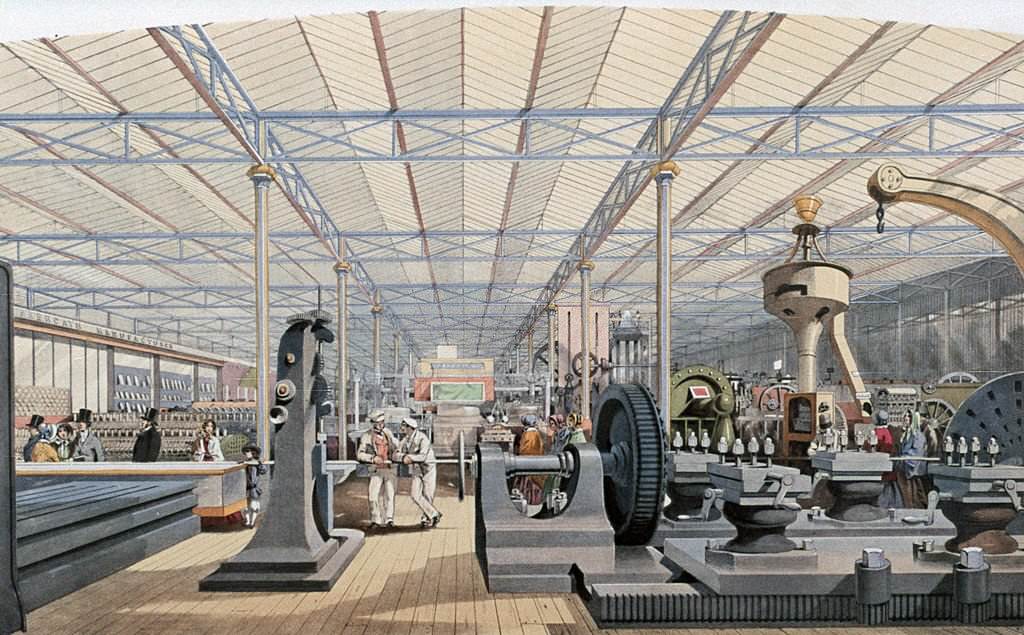
Conceived by Prince Albert, the Great Exhibition was intended to showcase the 'Works of the Industry of all Nations'. It was housed in the purpose-built Crystal Palace, the first large-scale prefabricated ferrovitreous (iron and glass) structure, designed by the gardener and architect Joseph Paxton.


